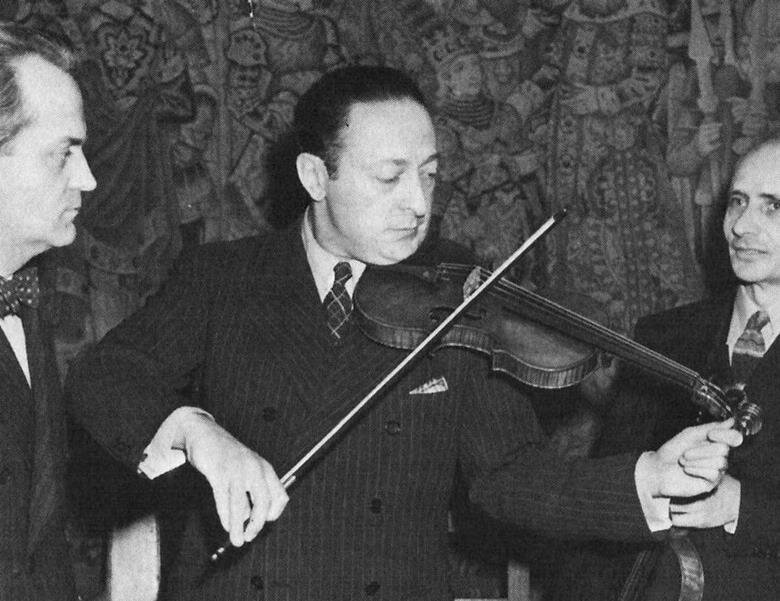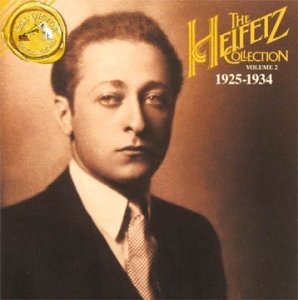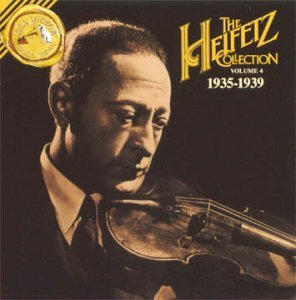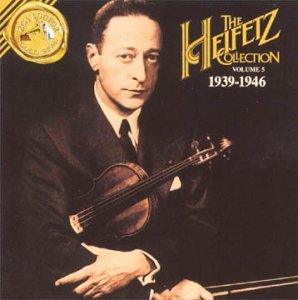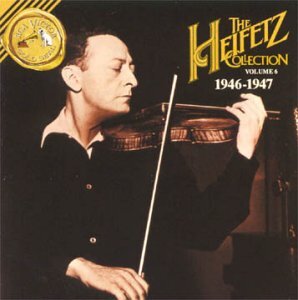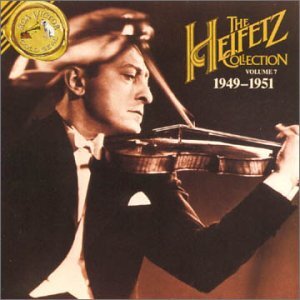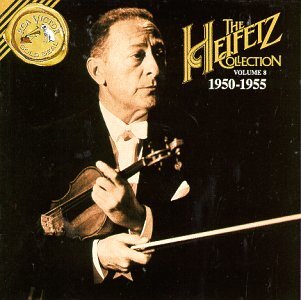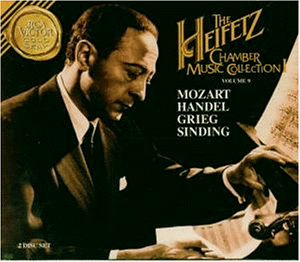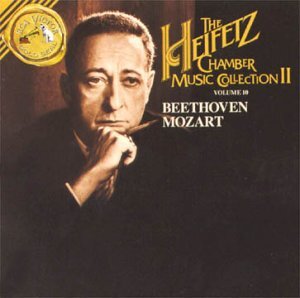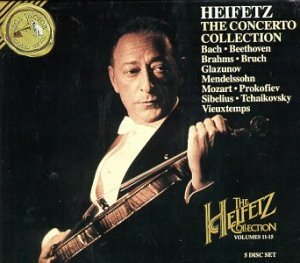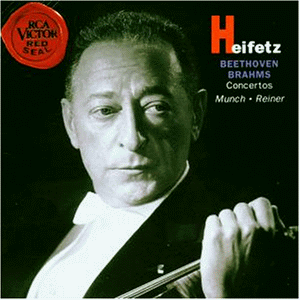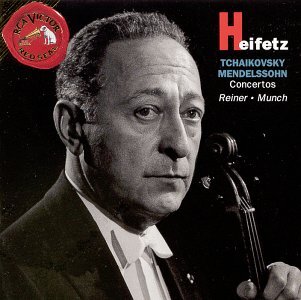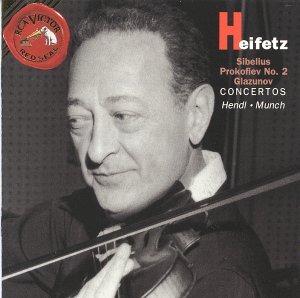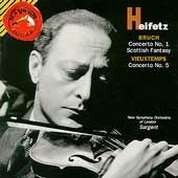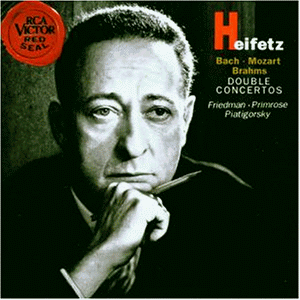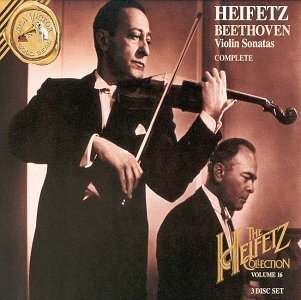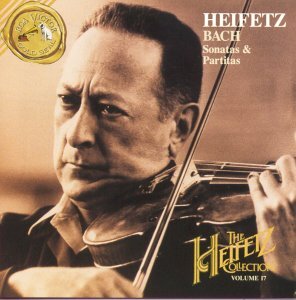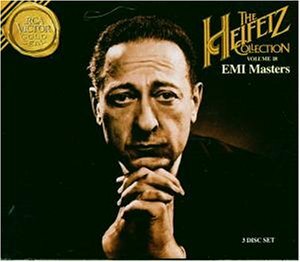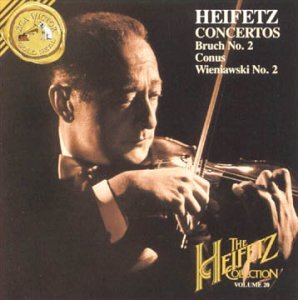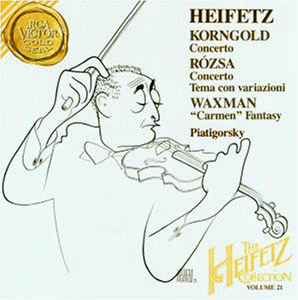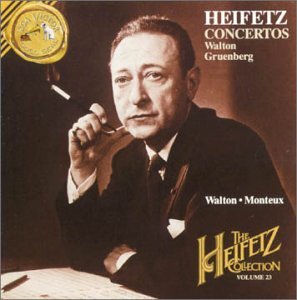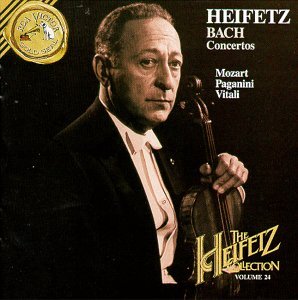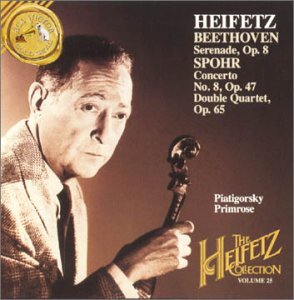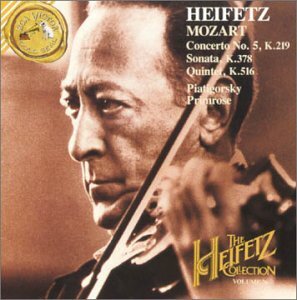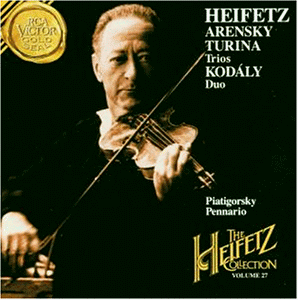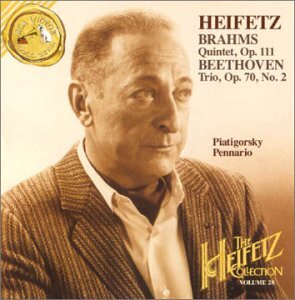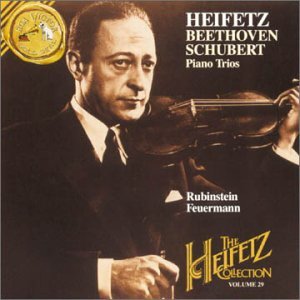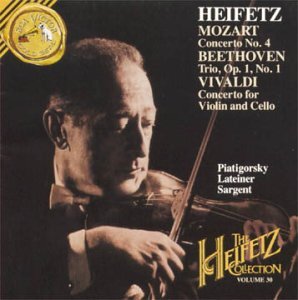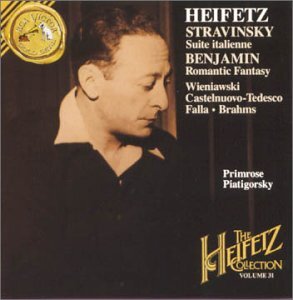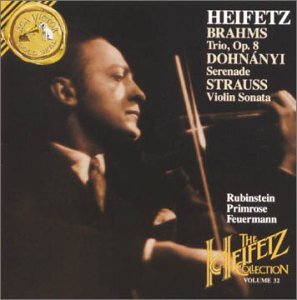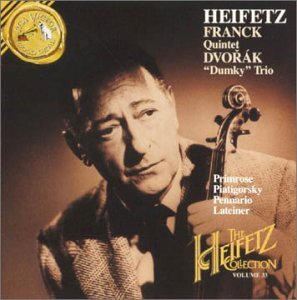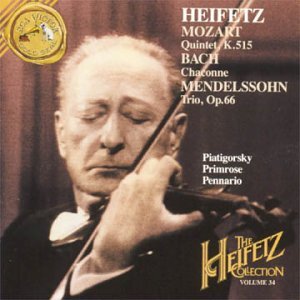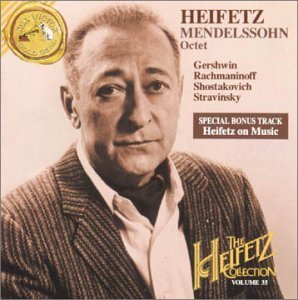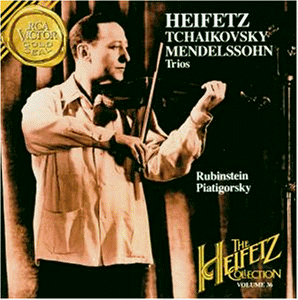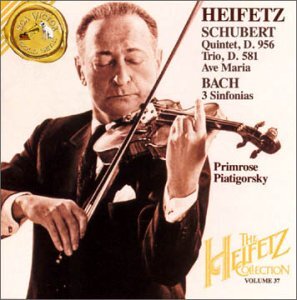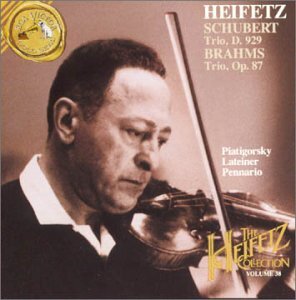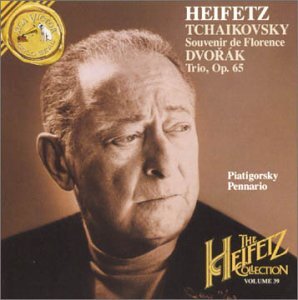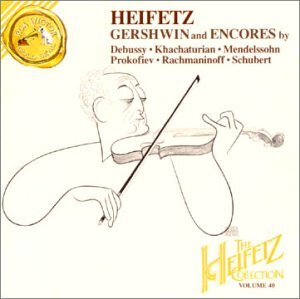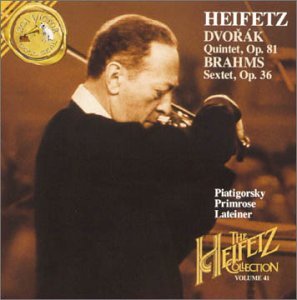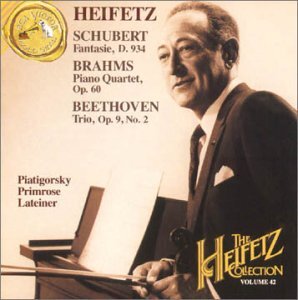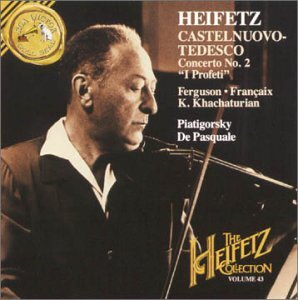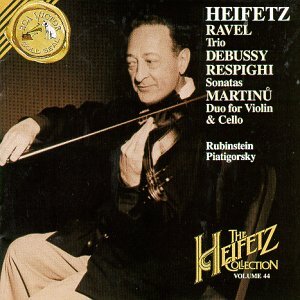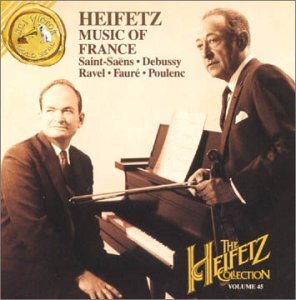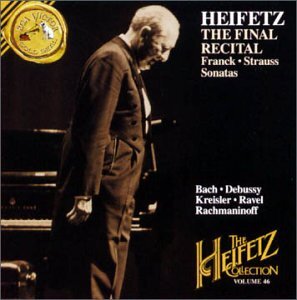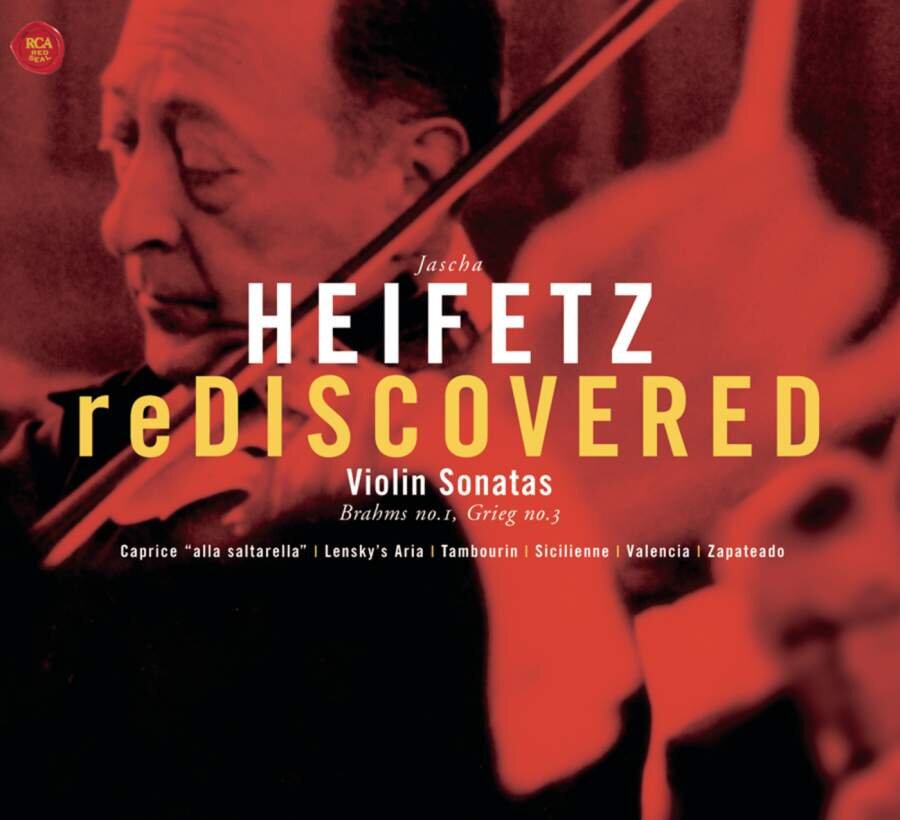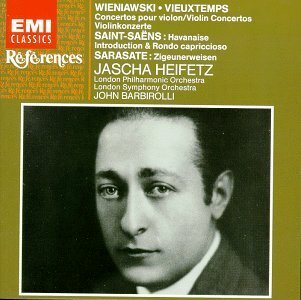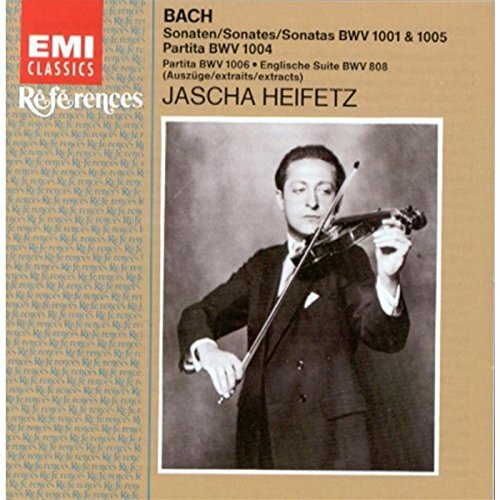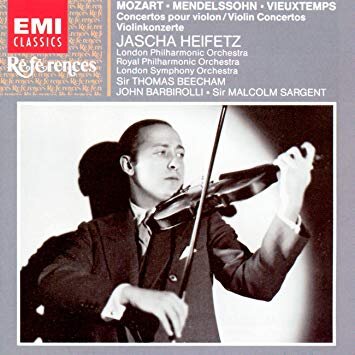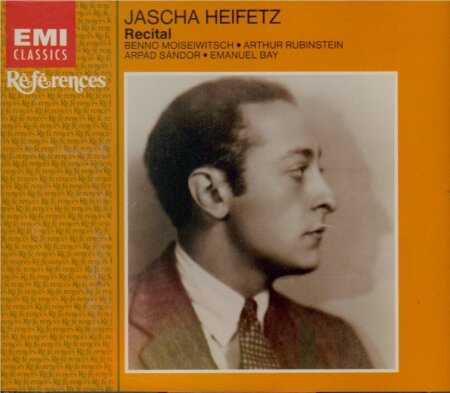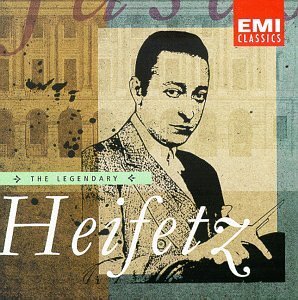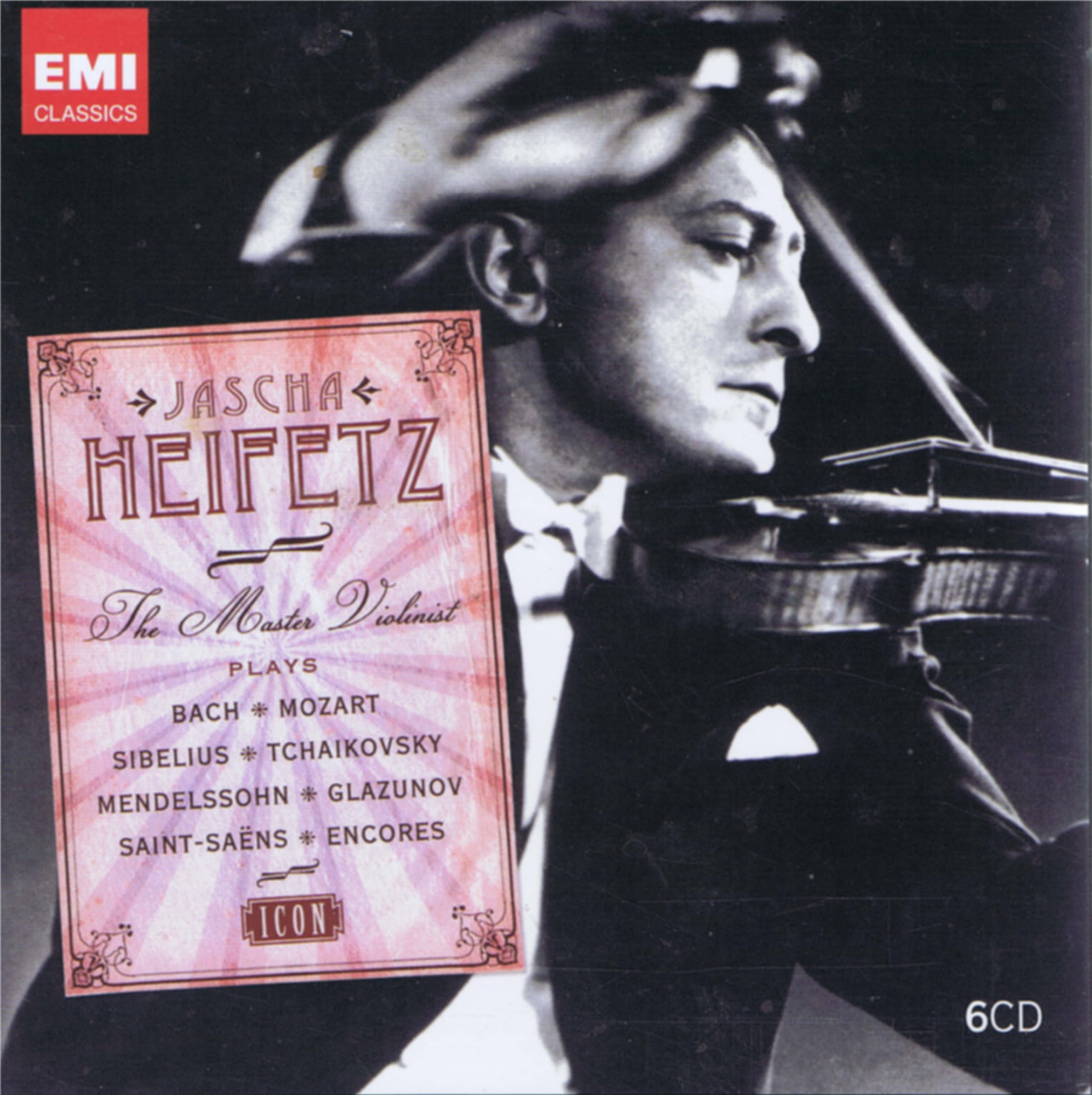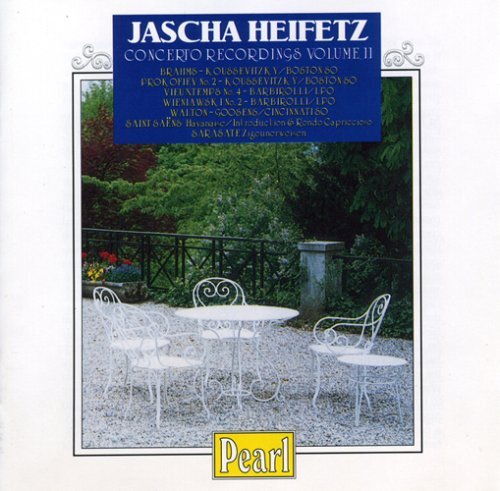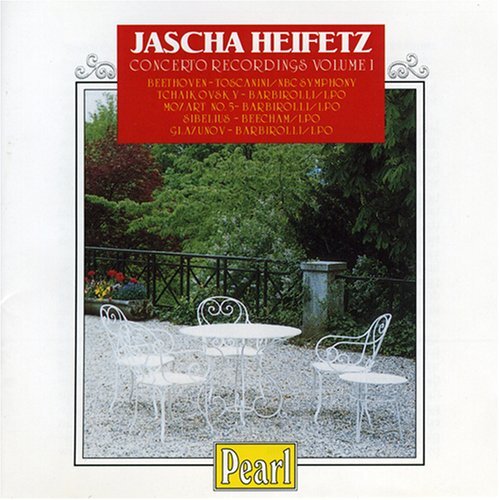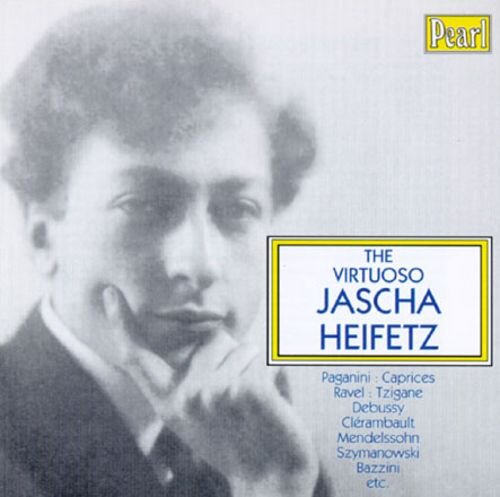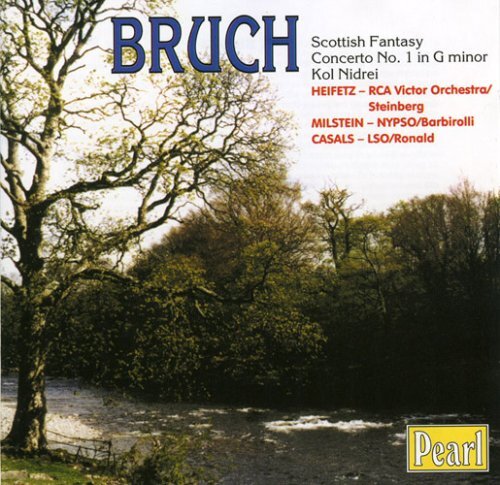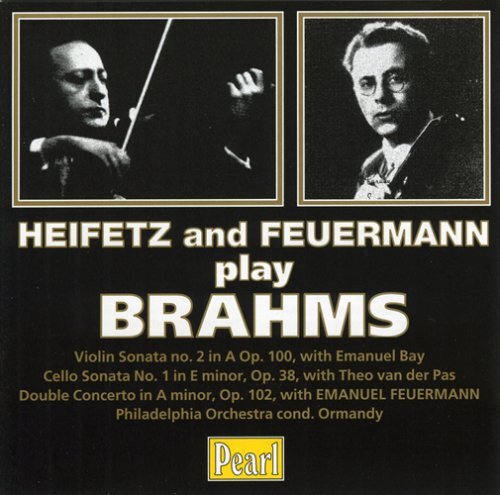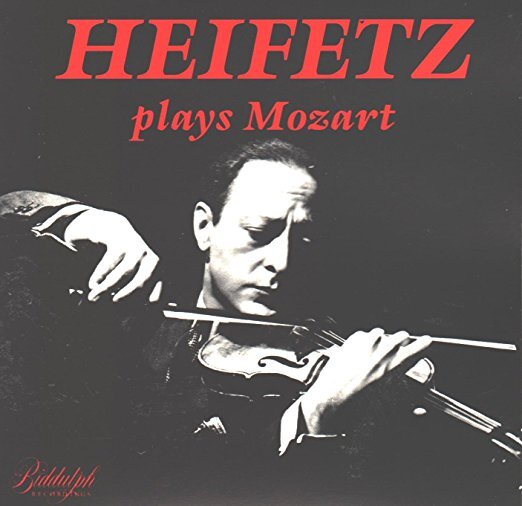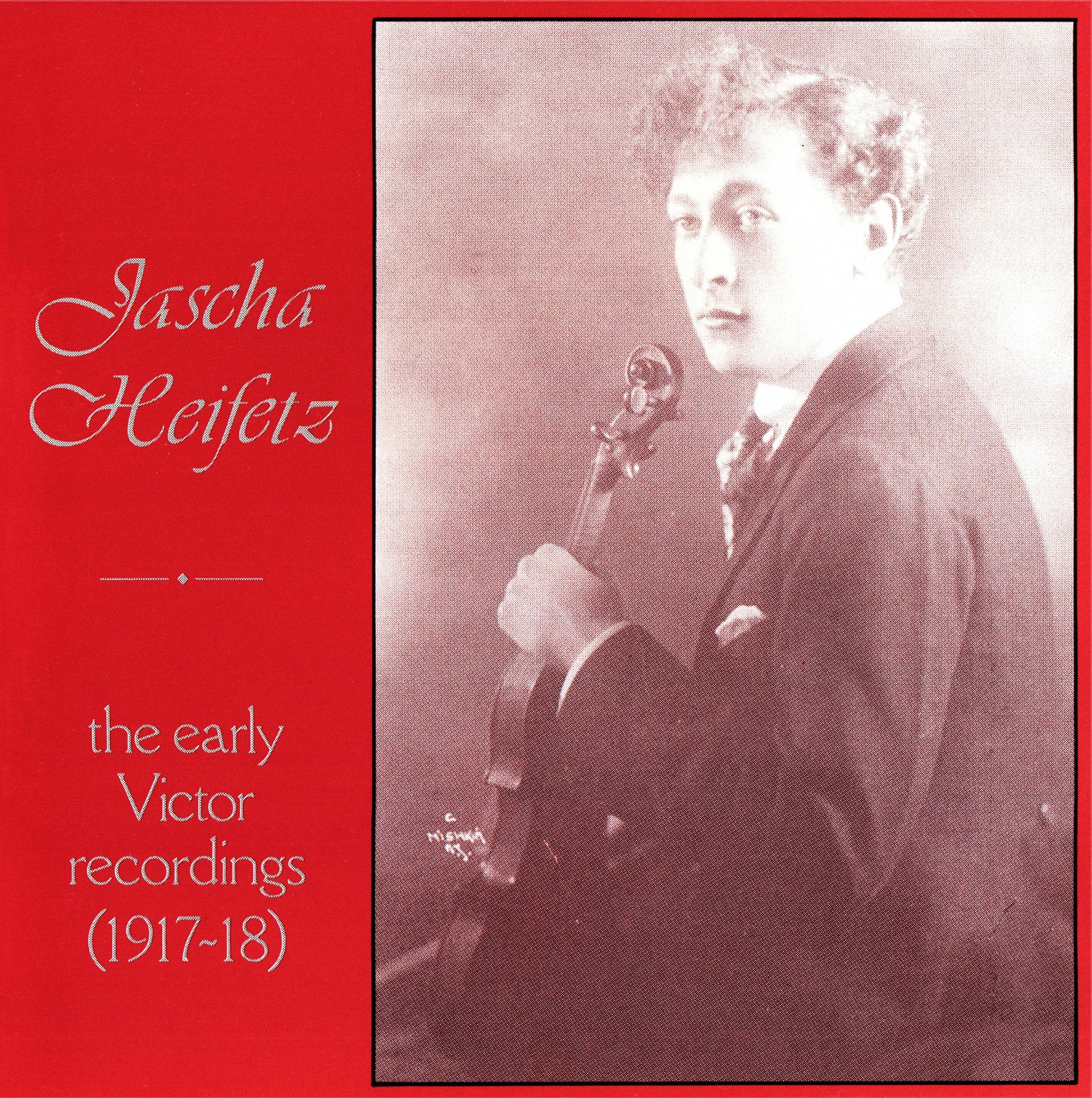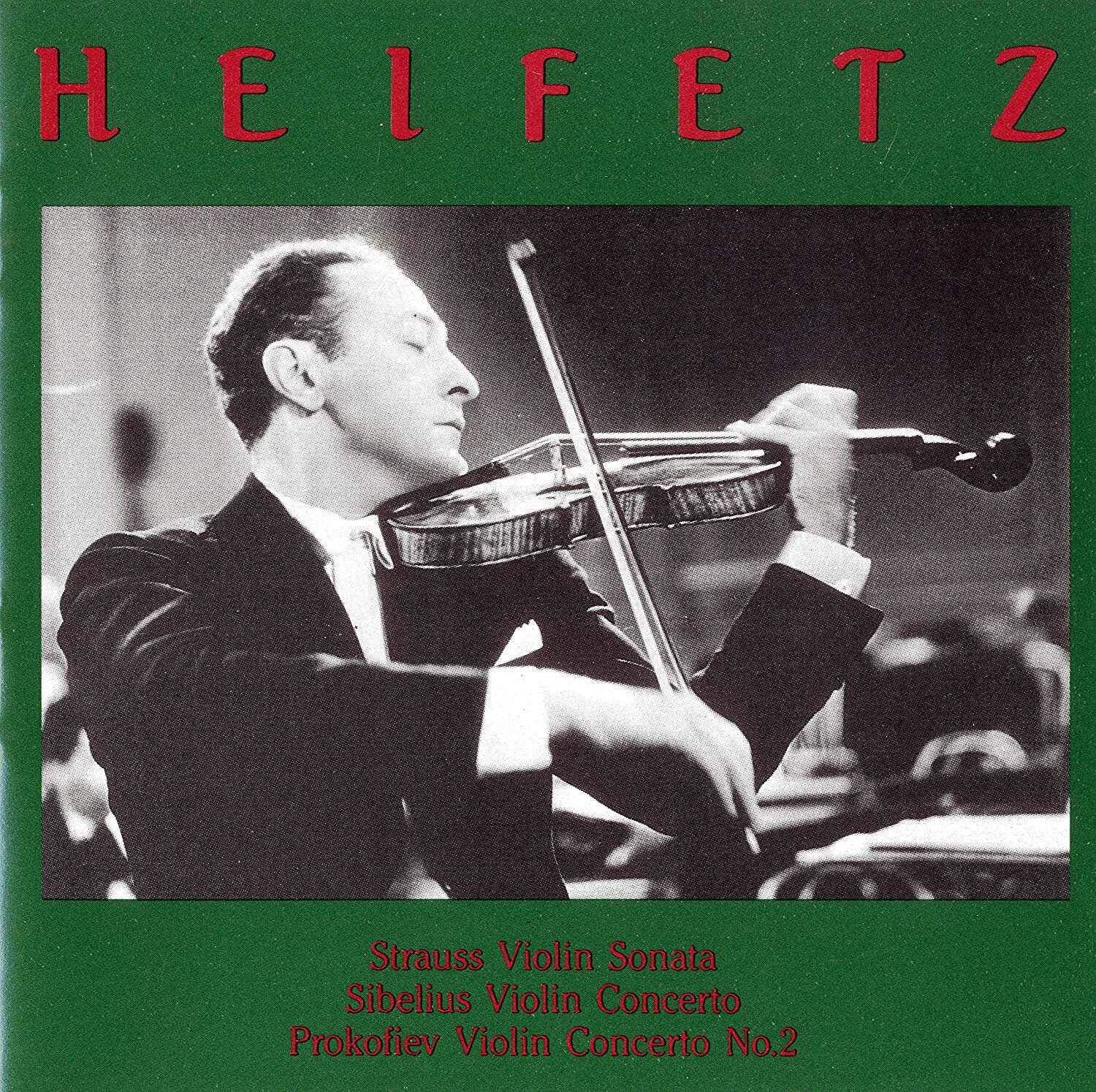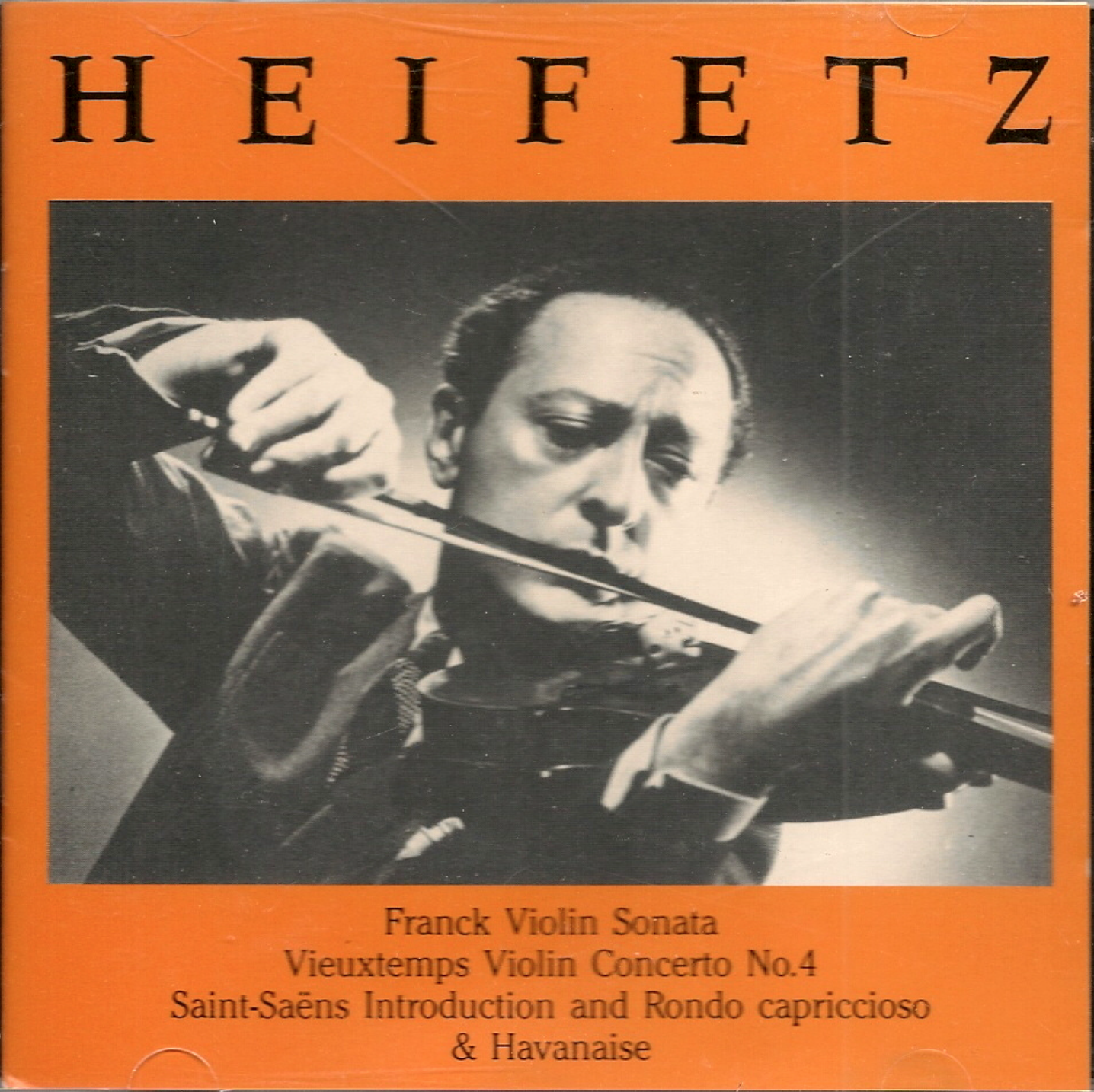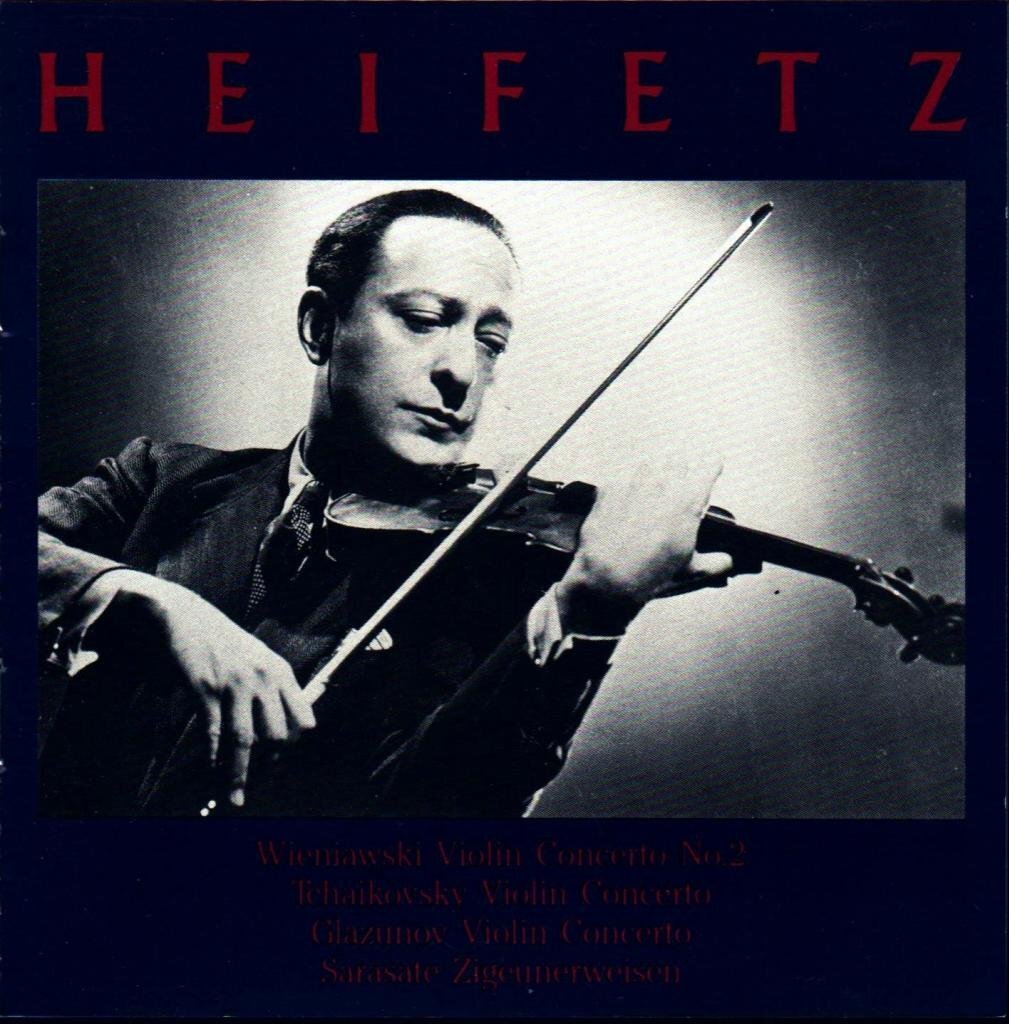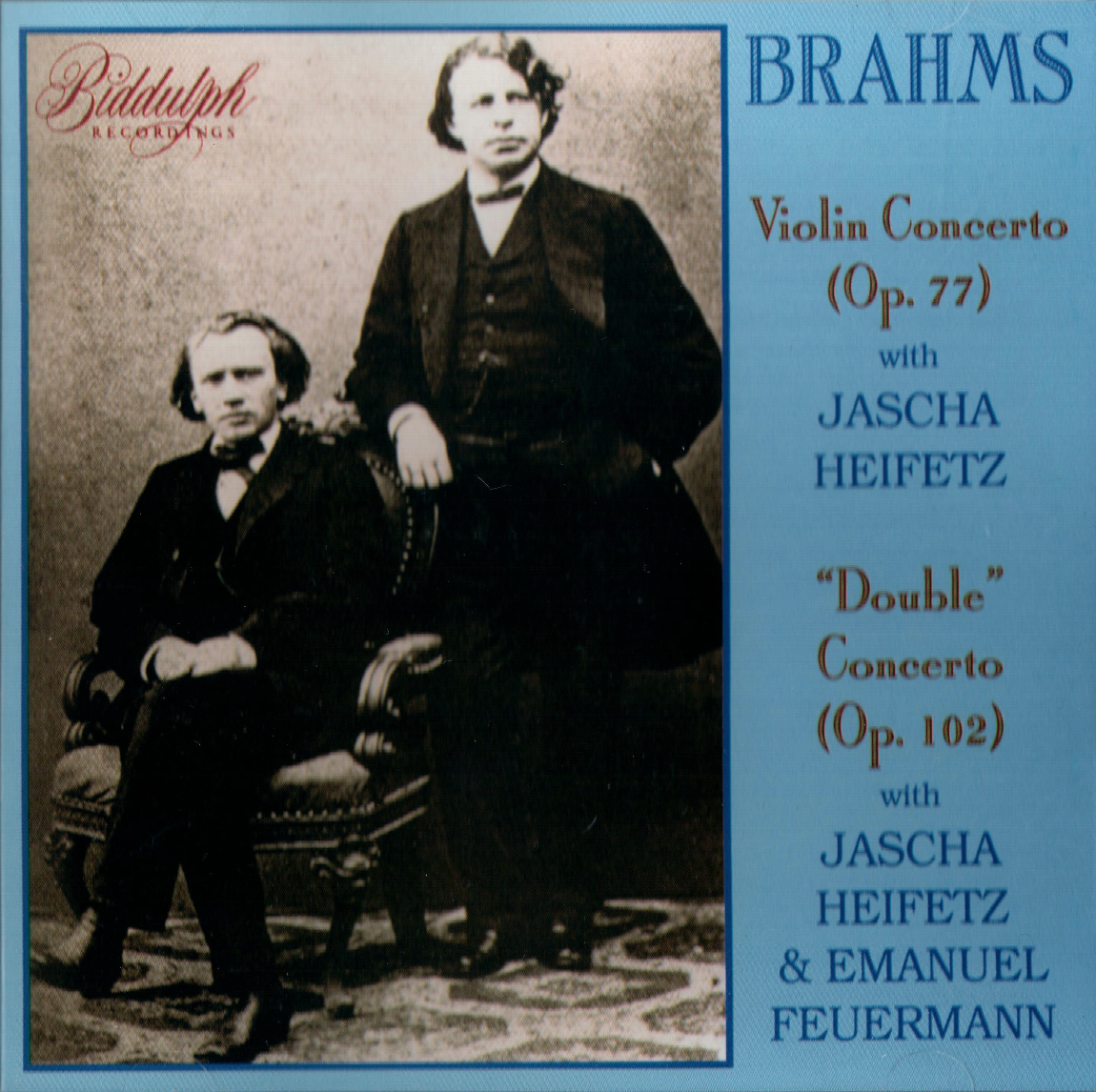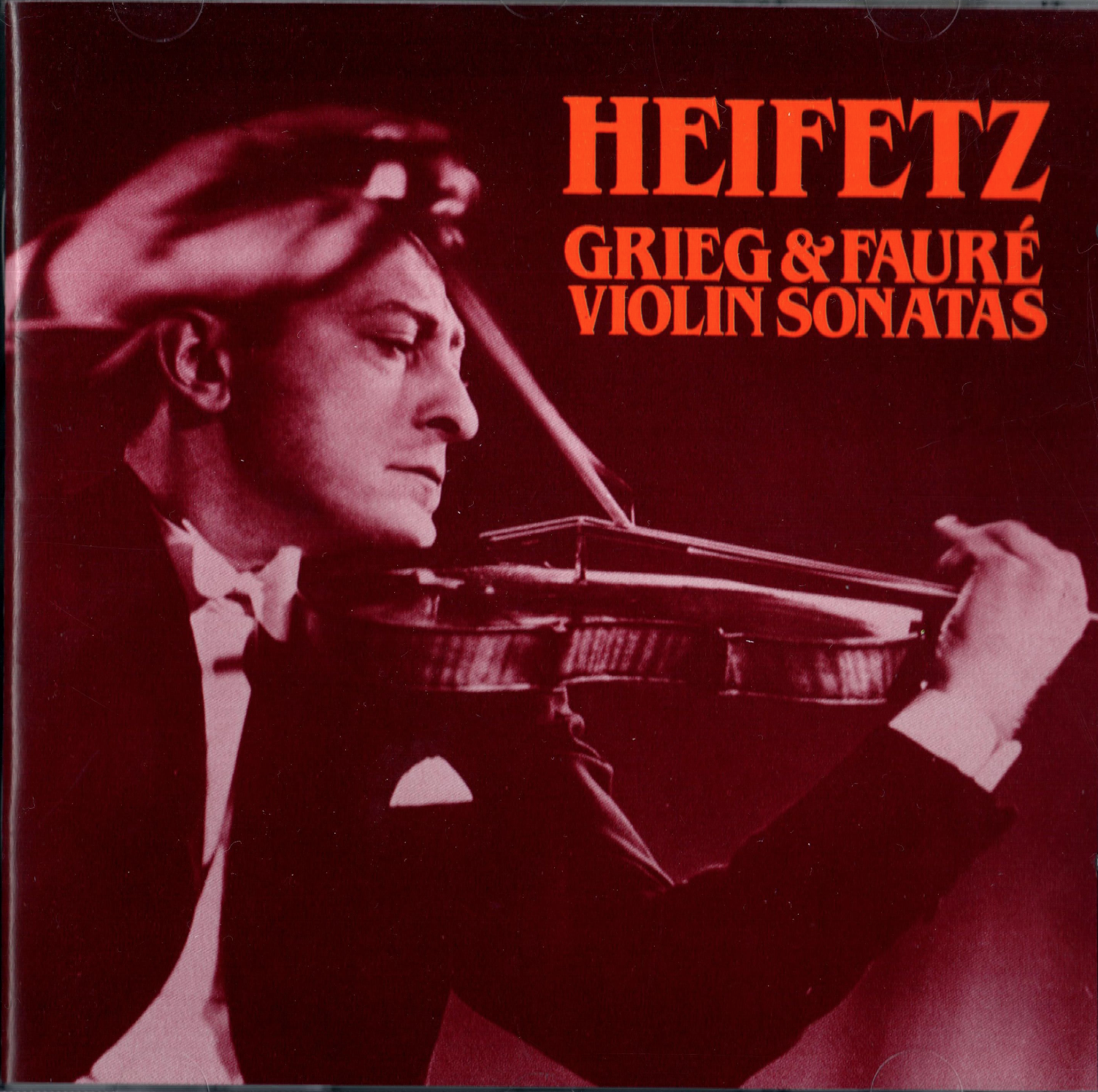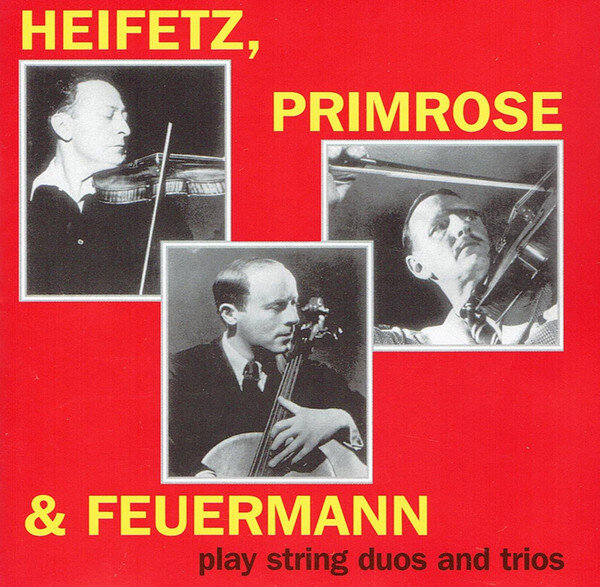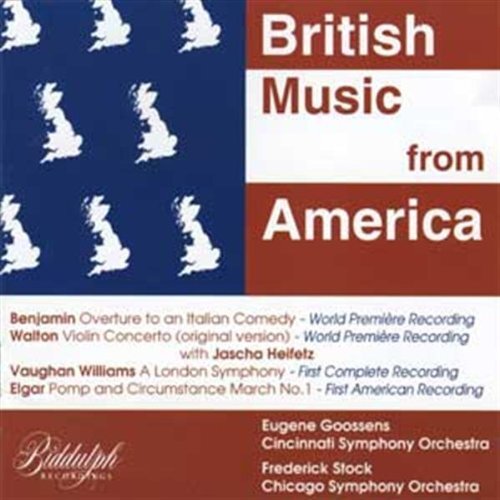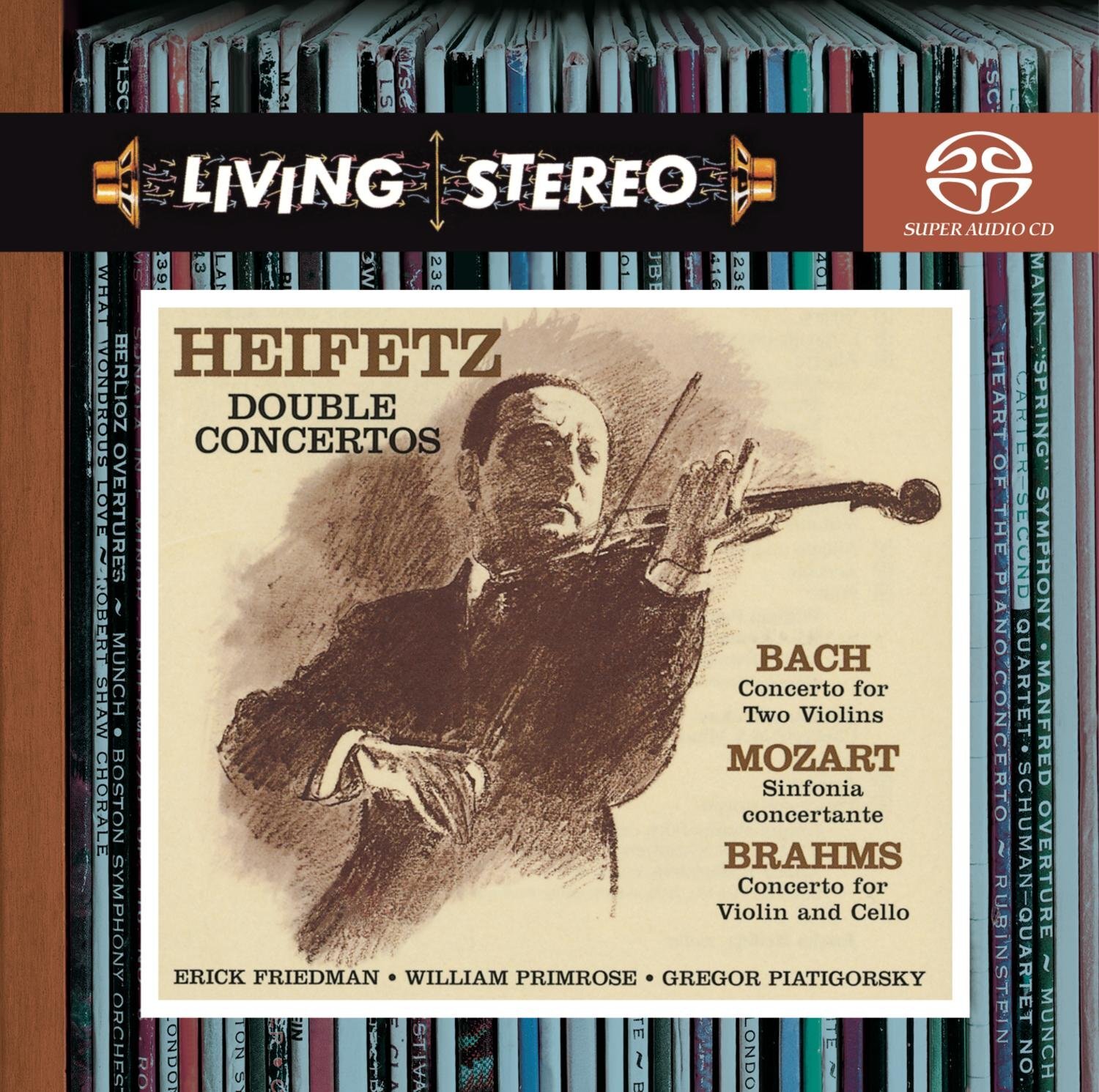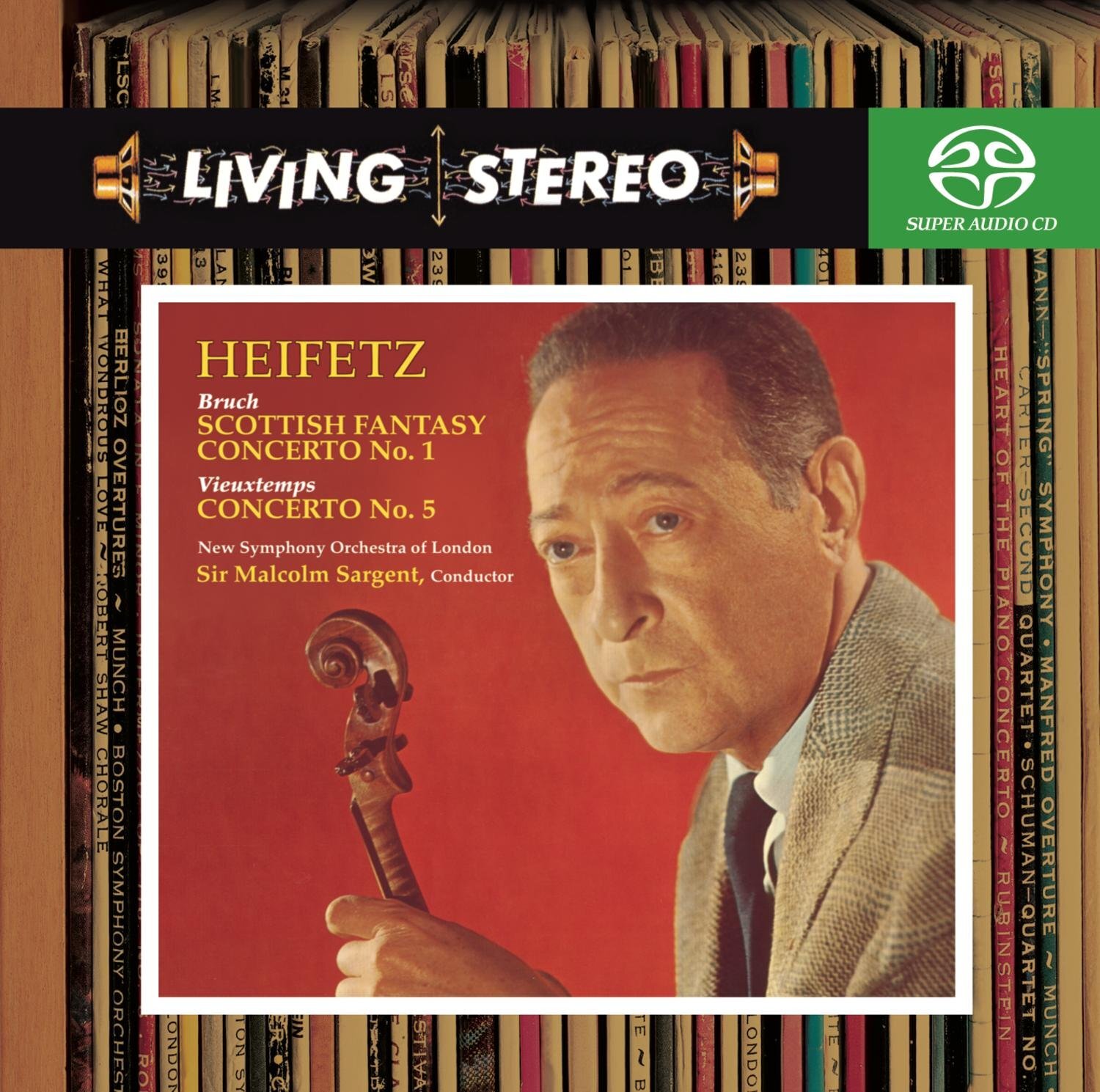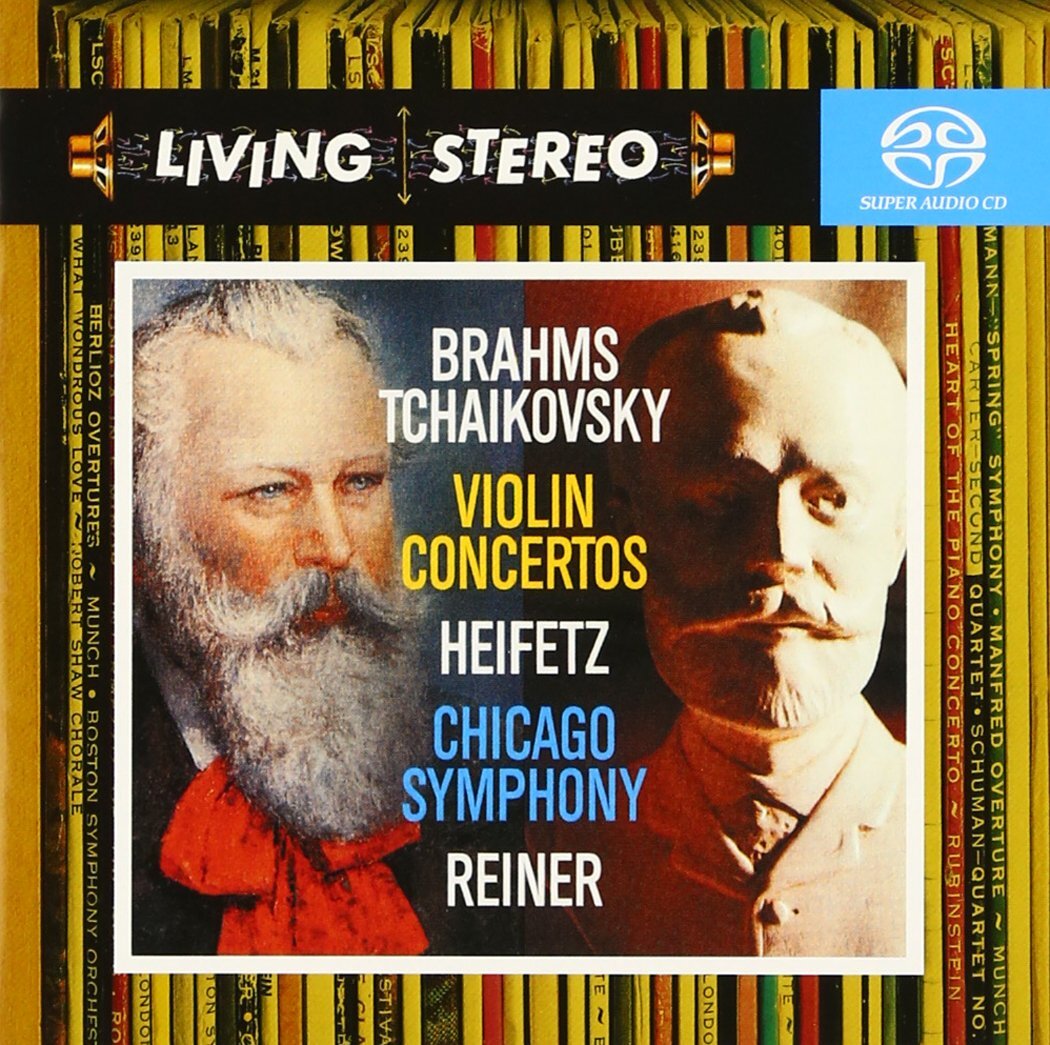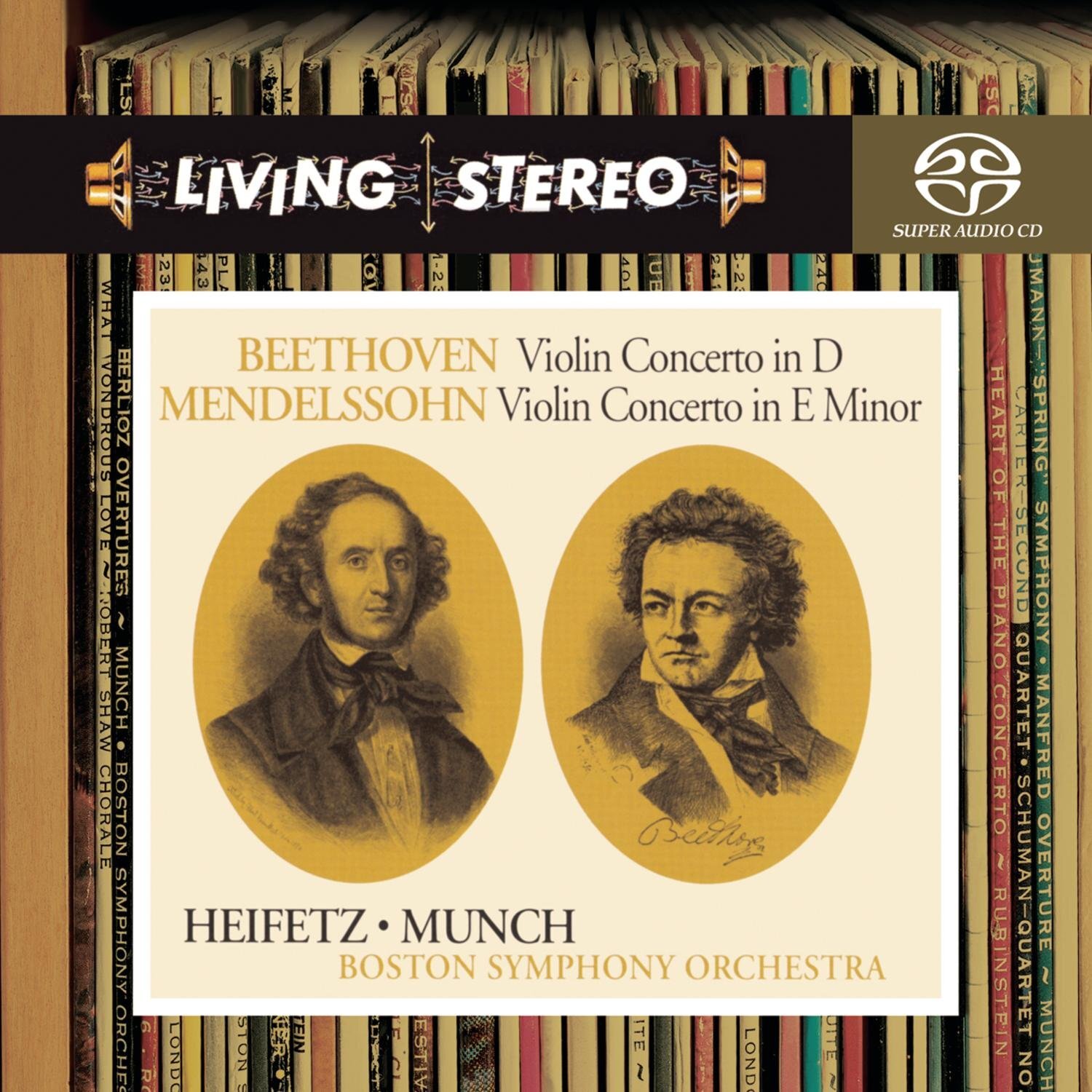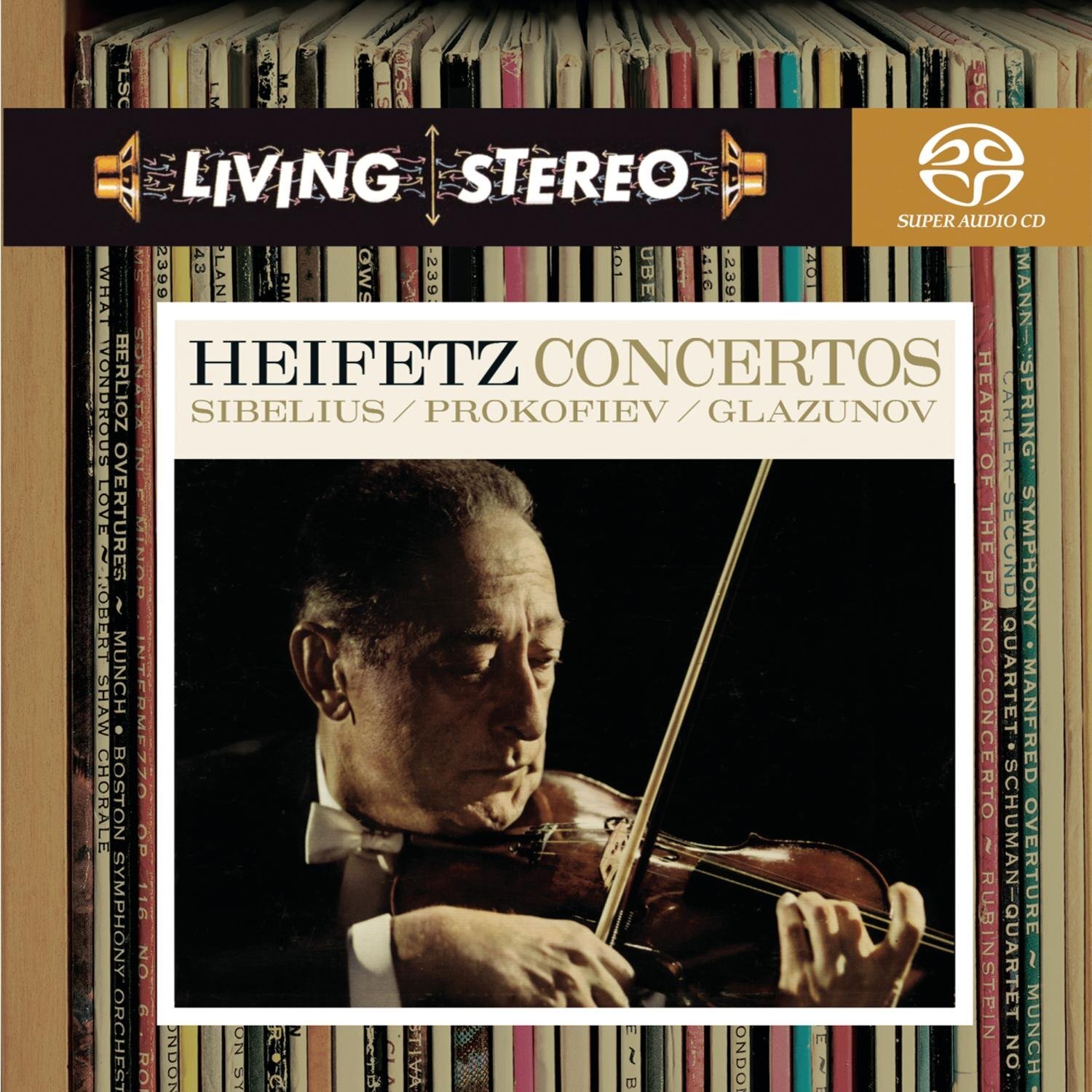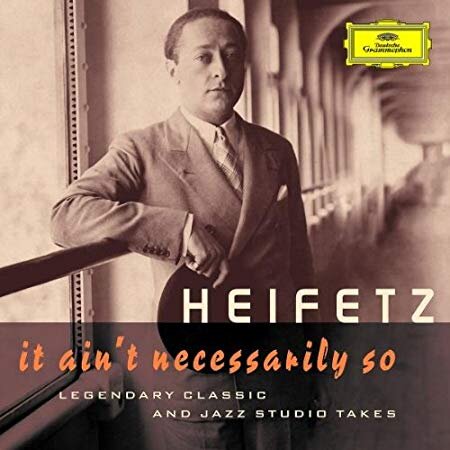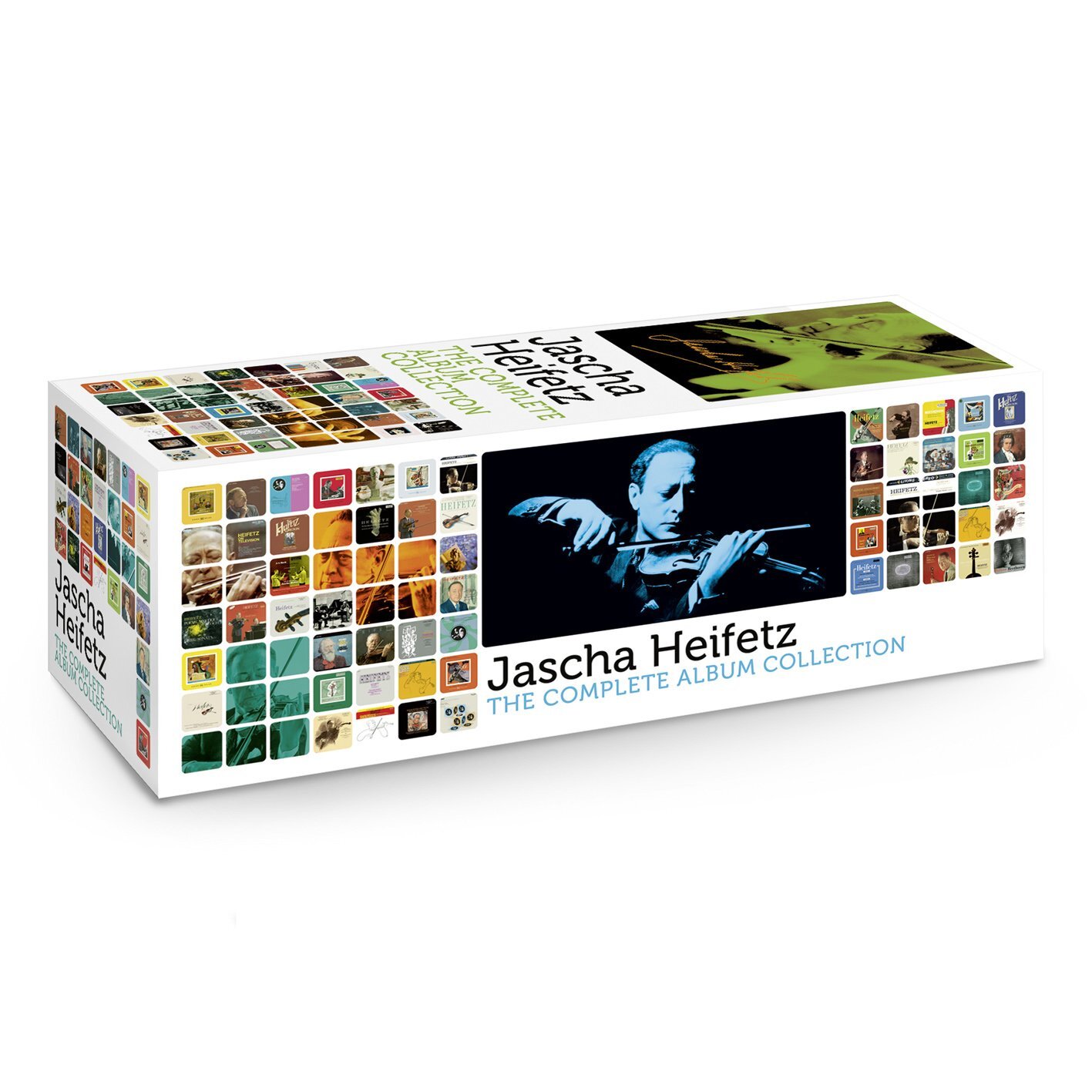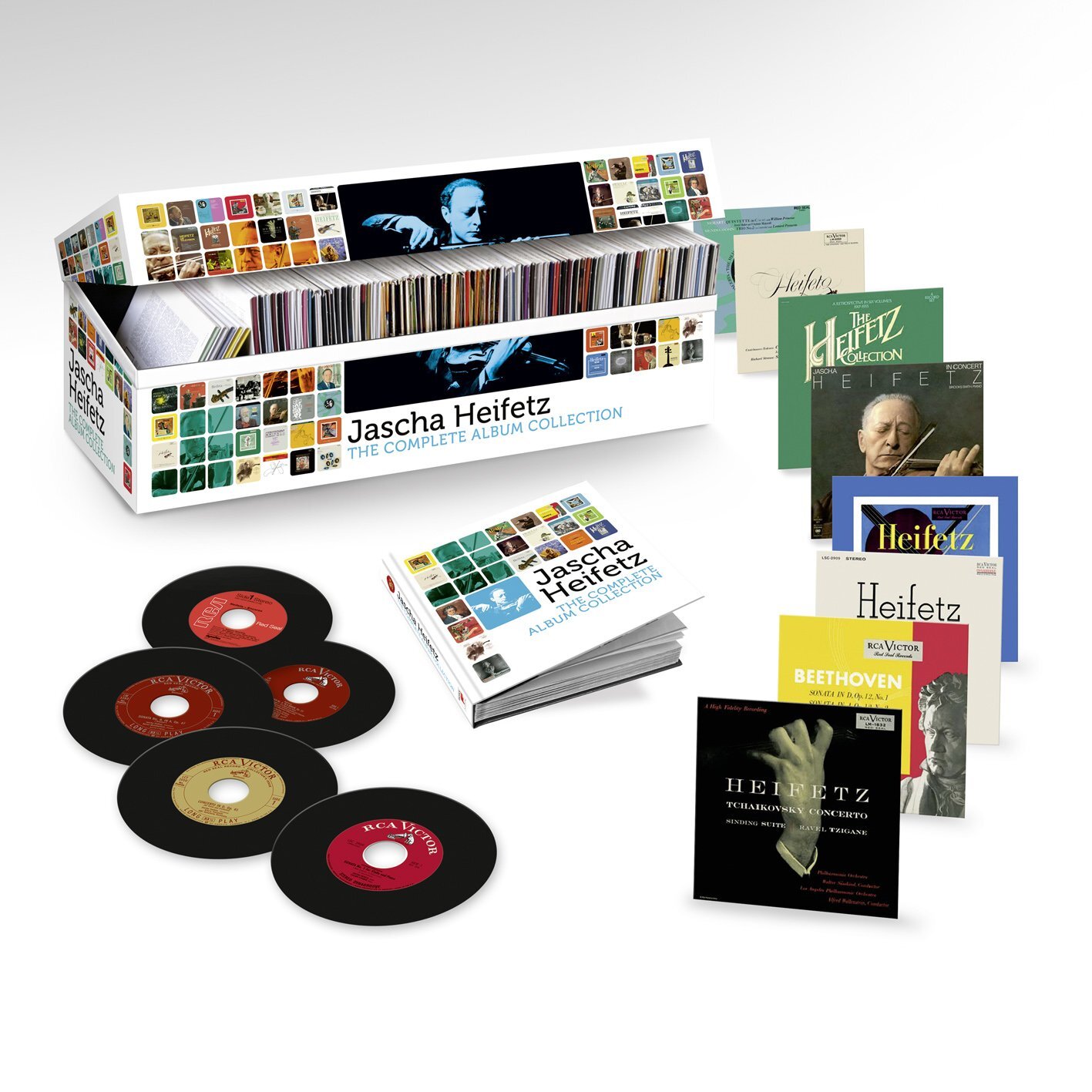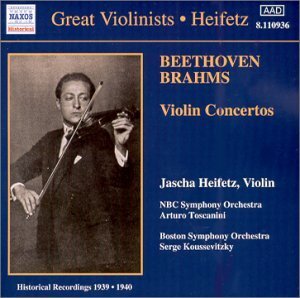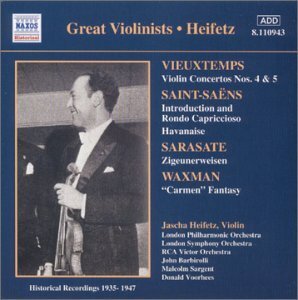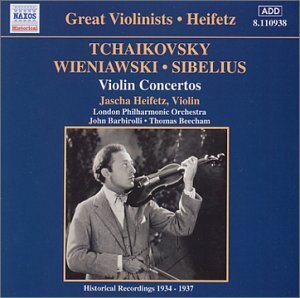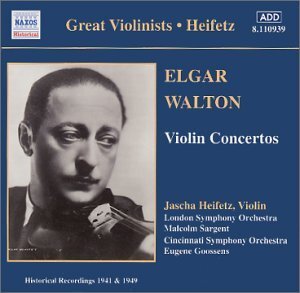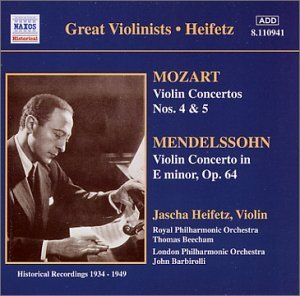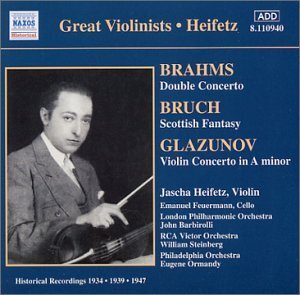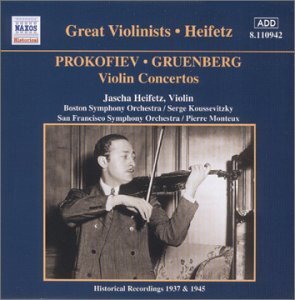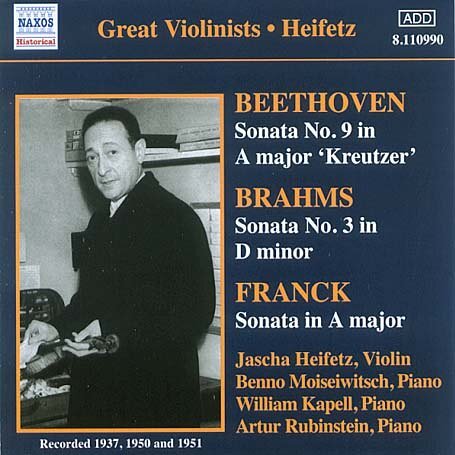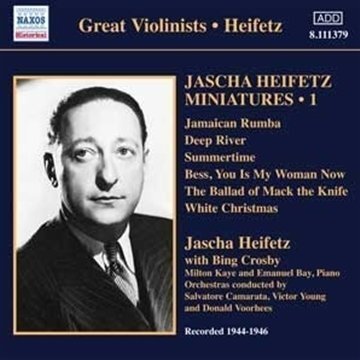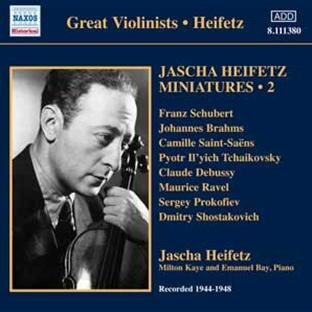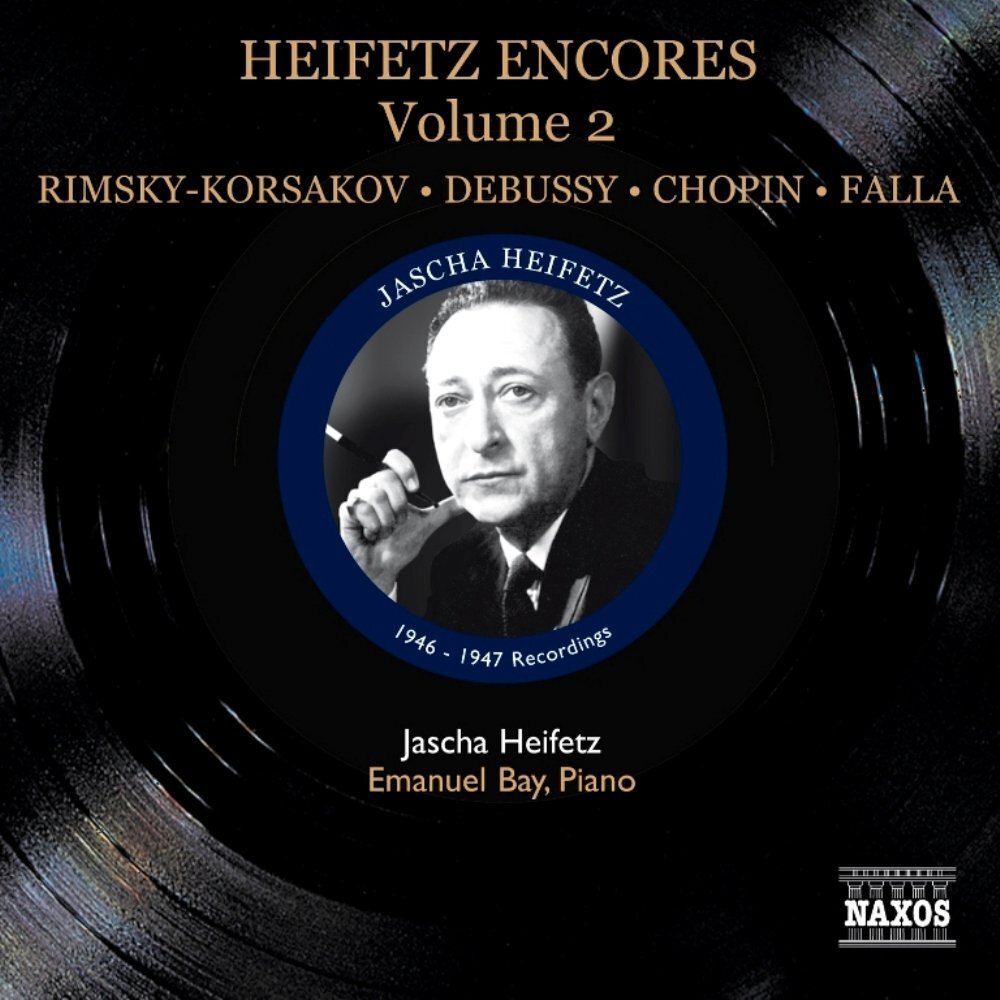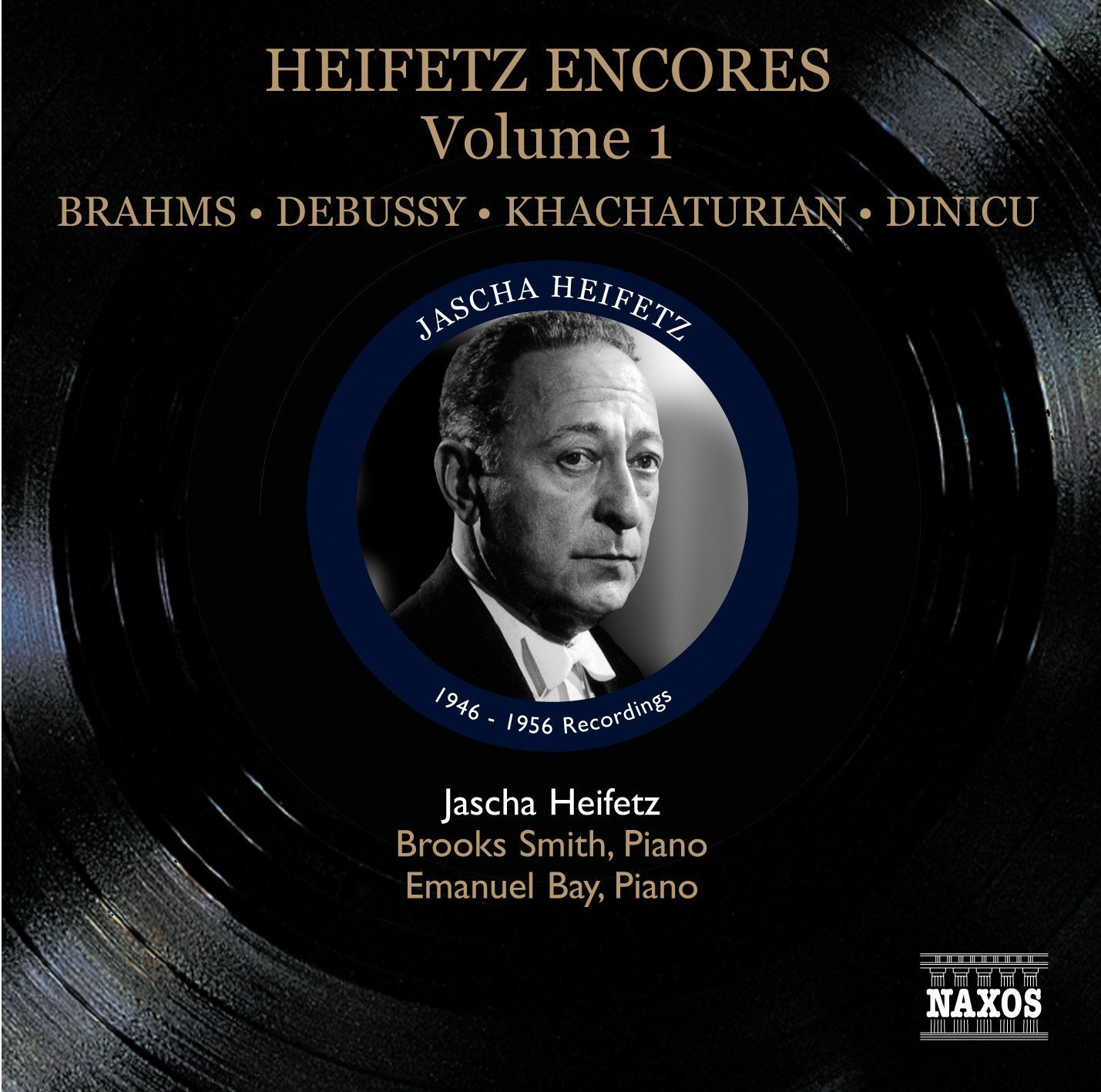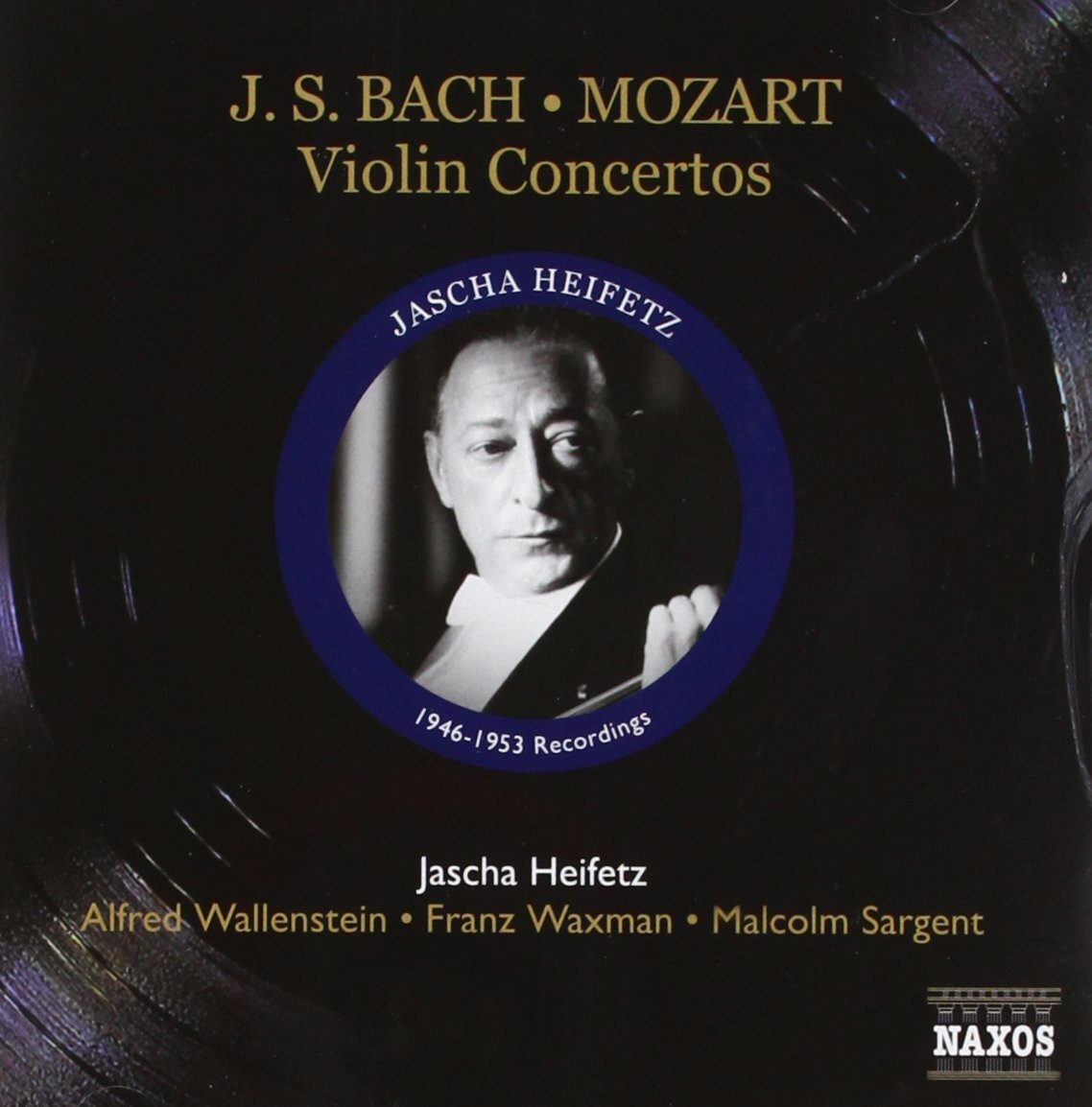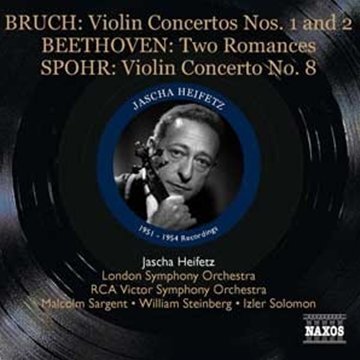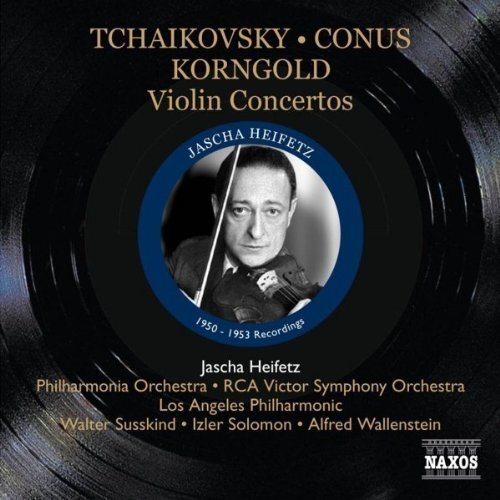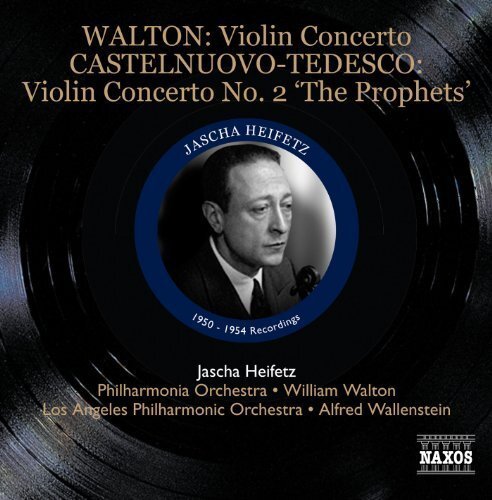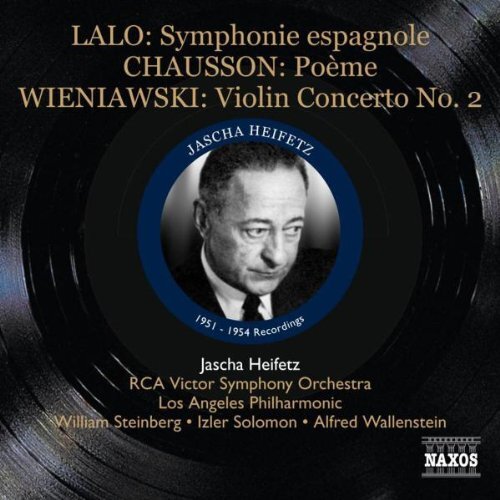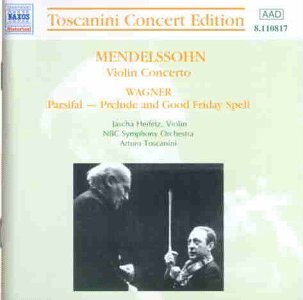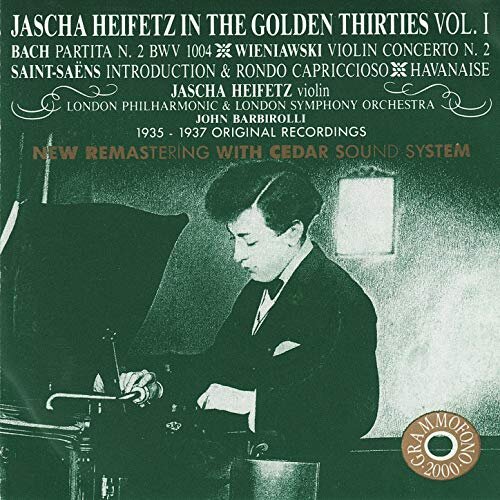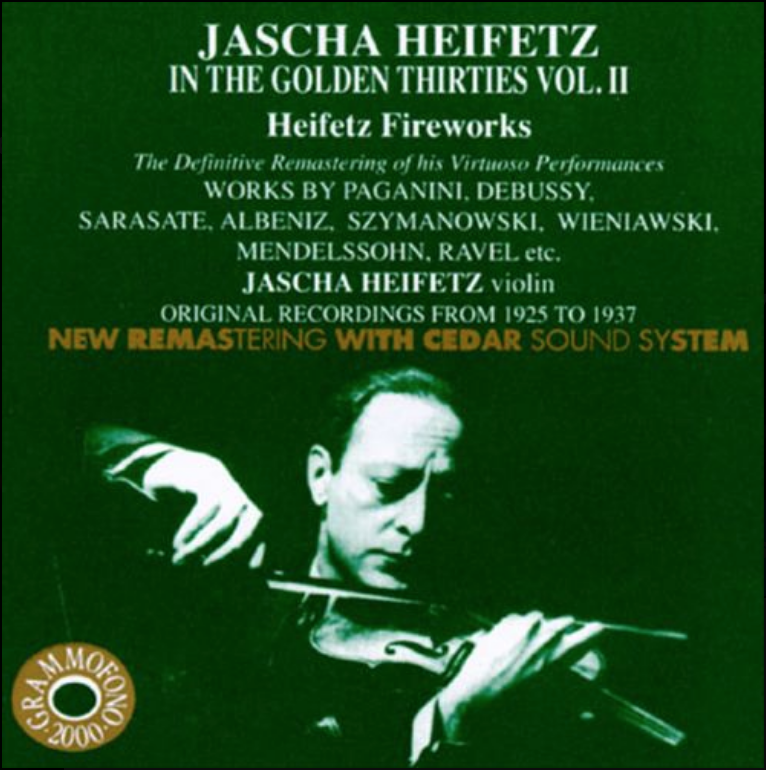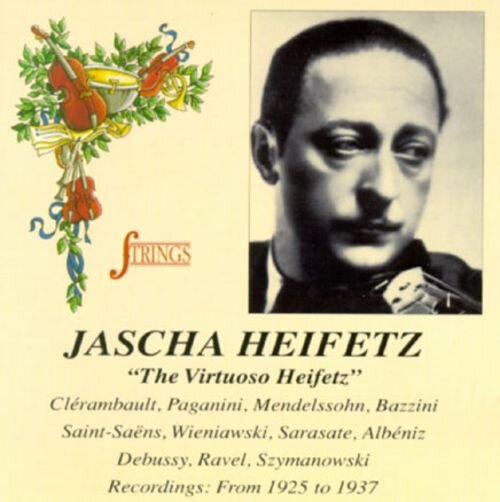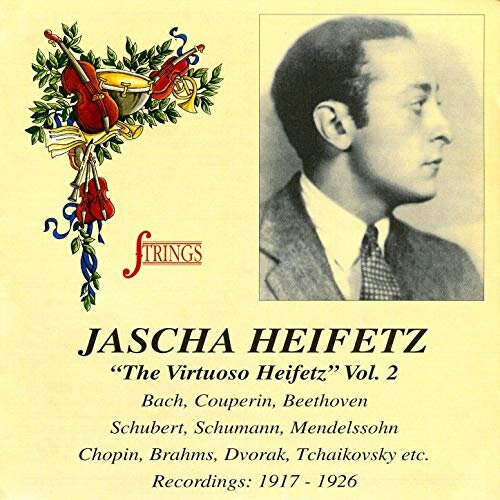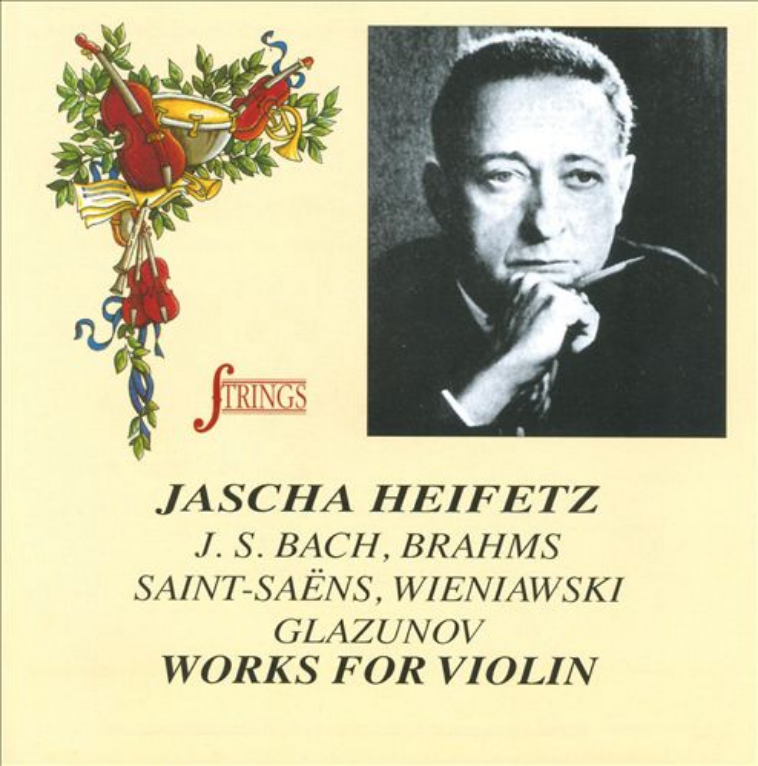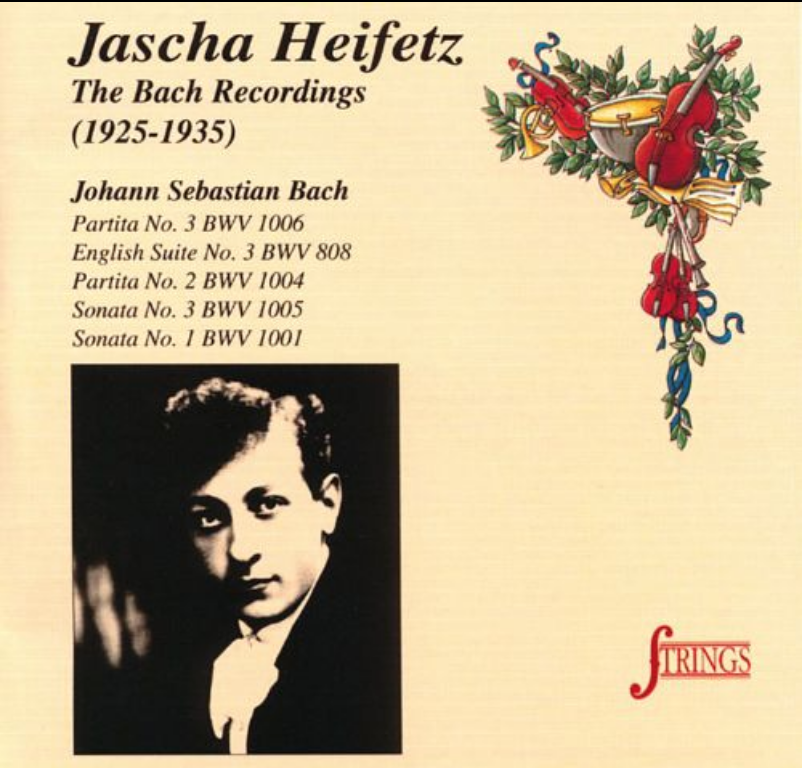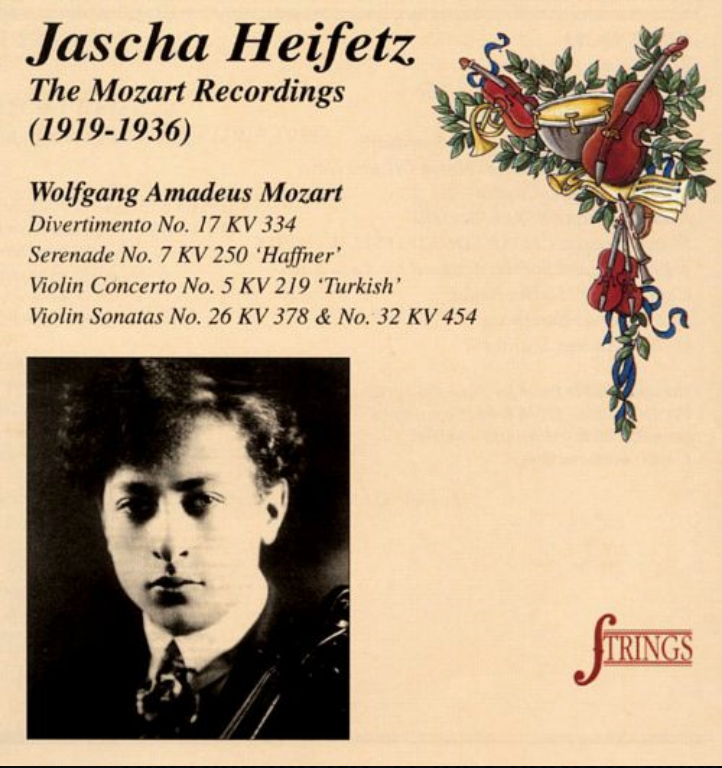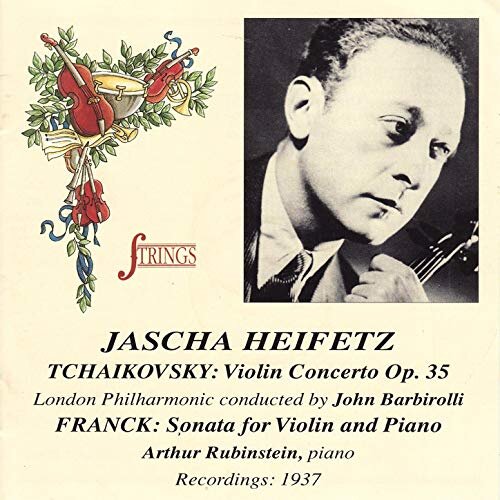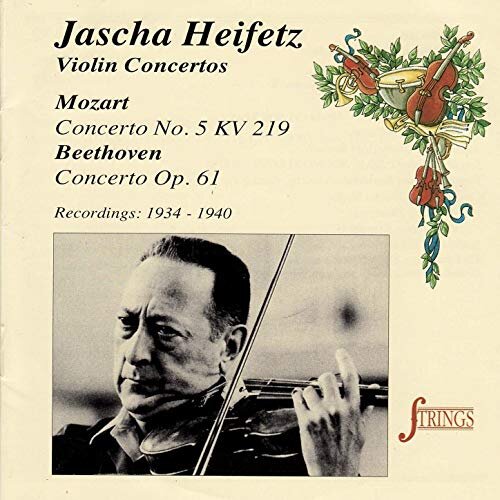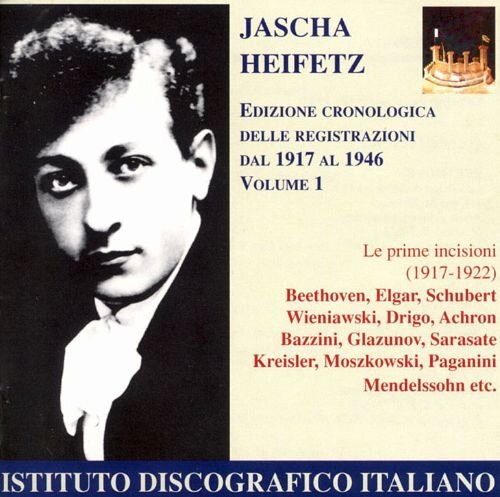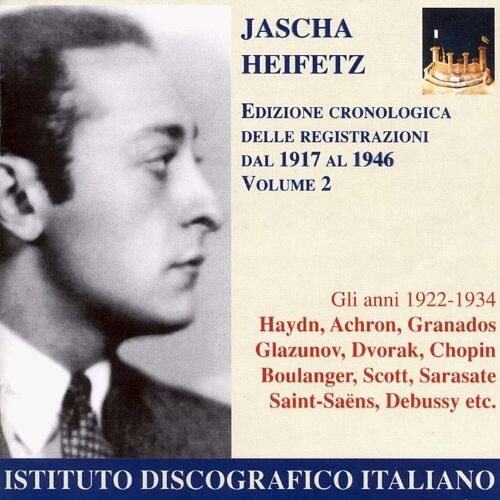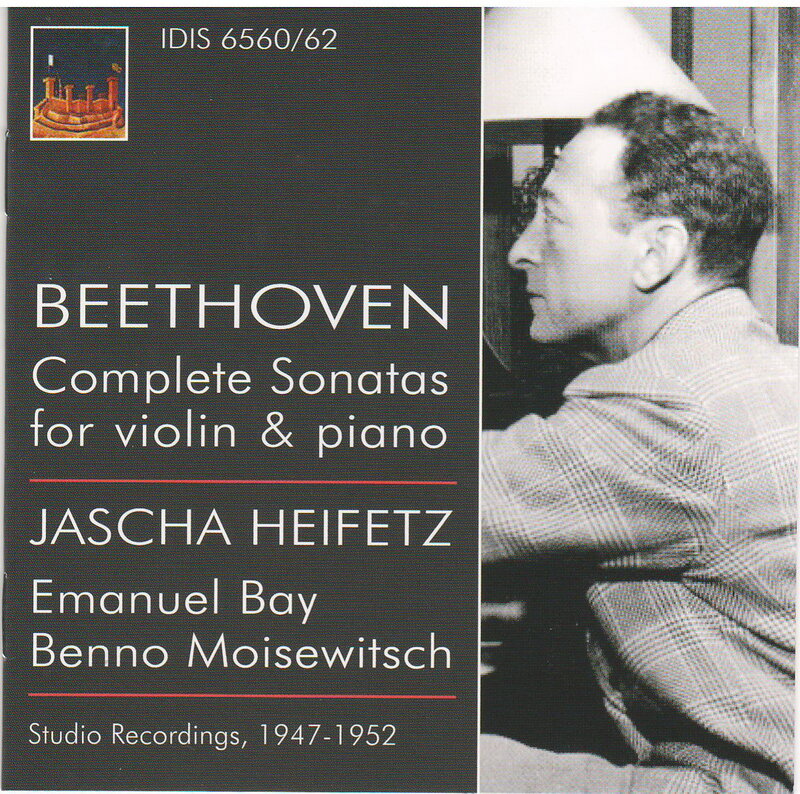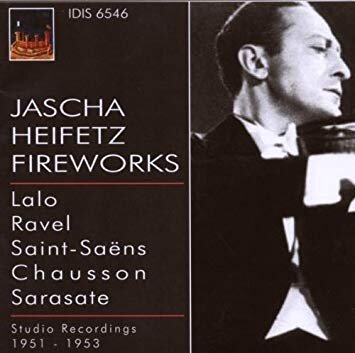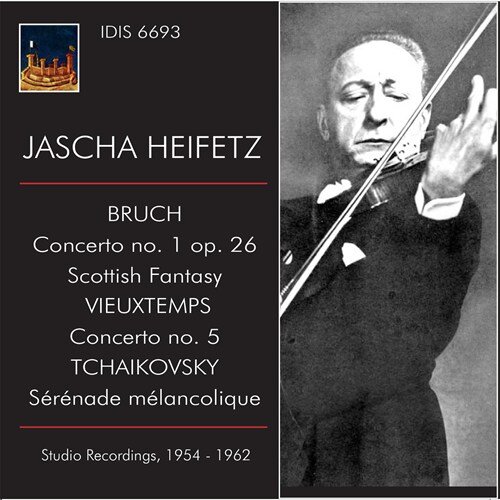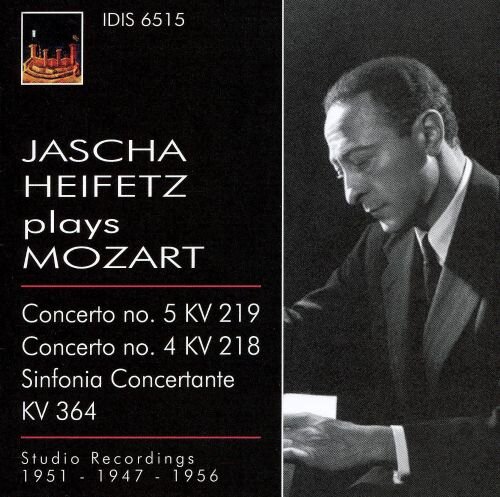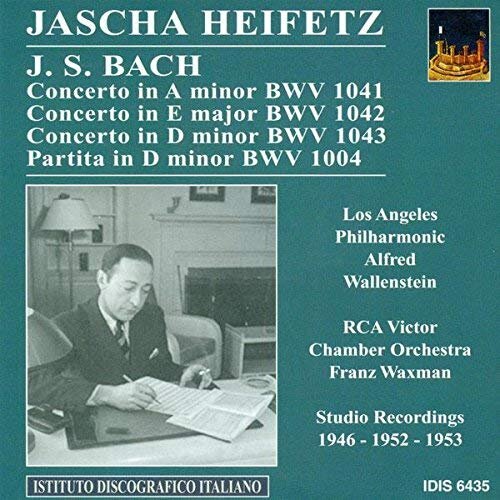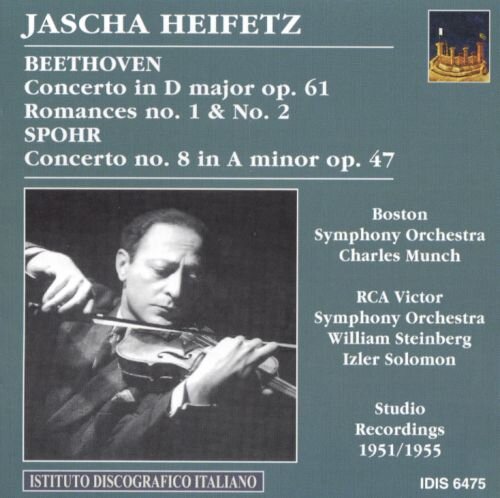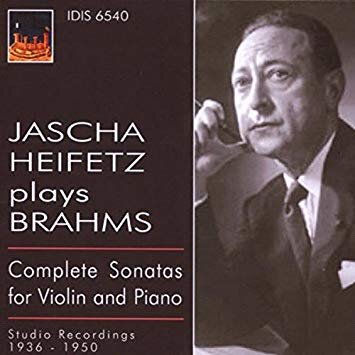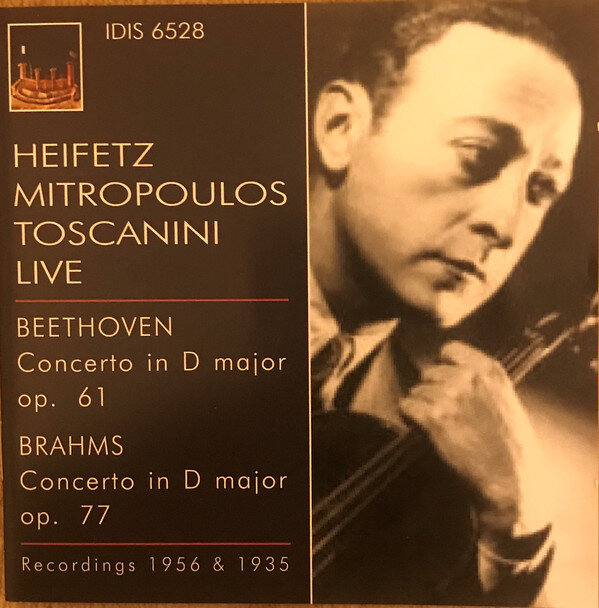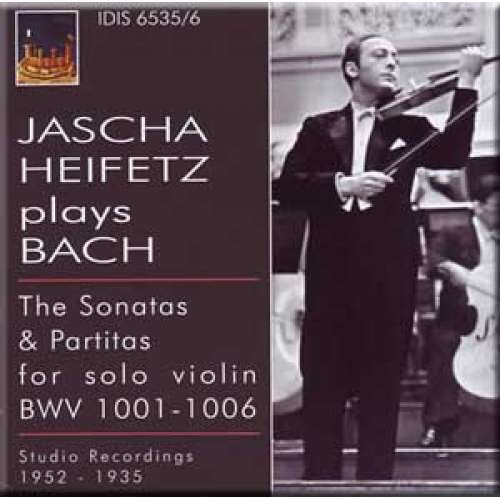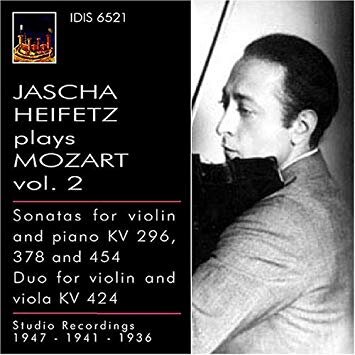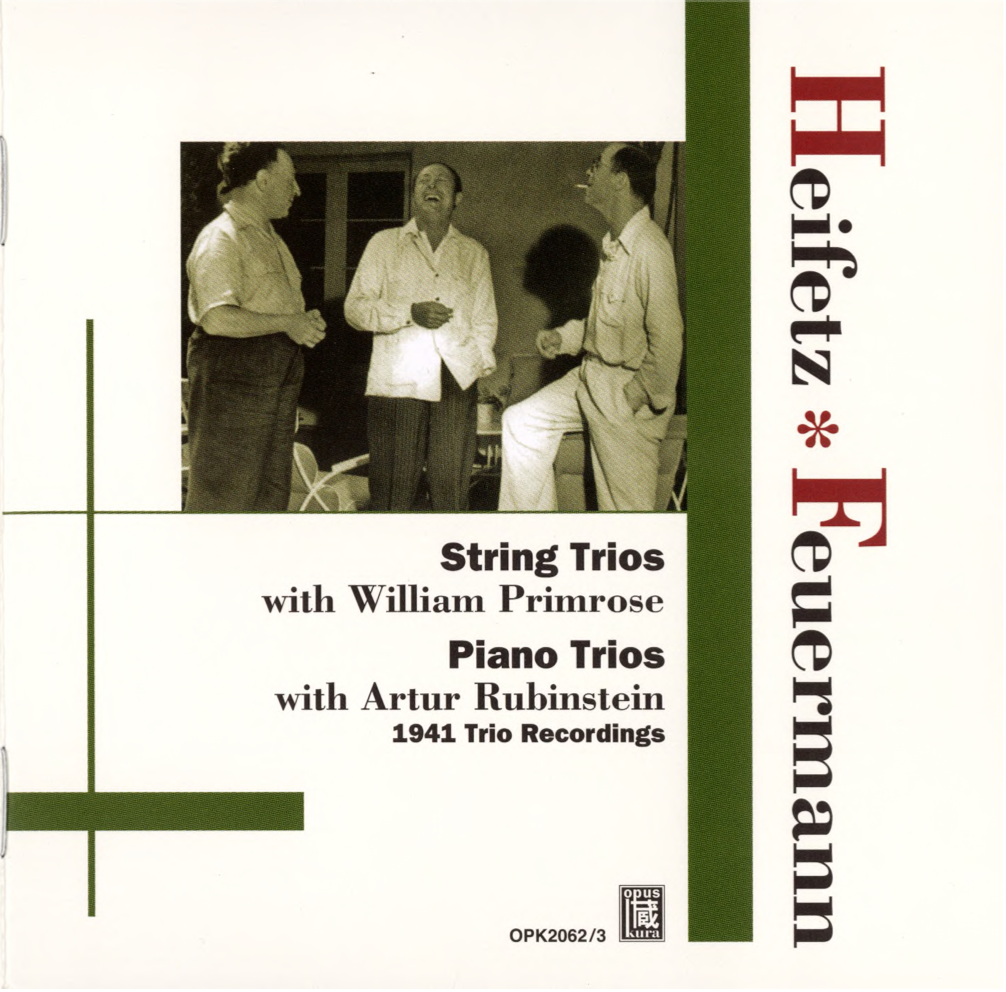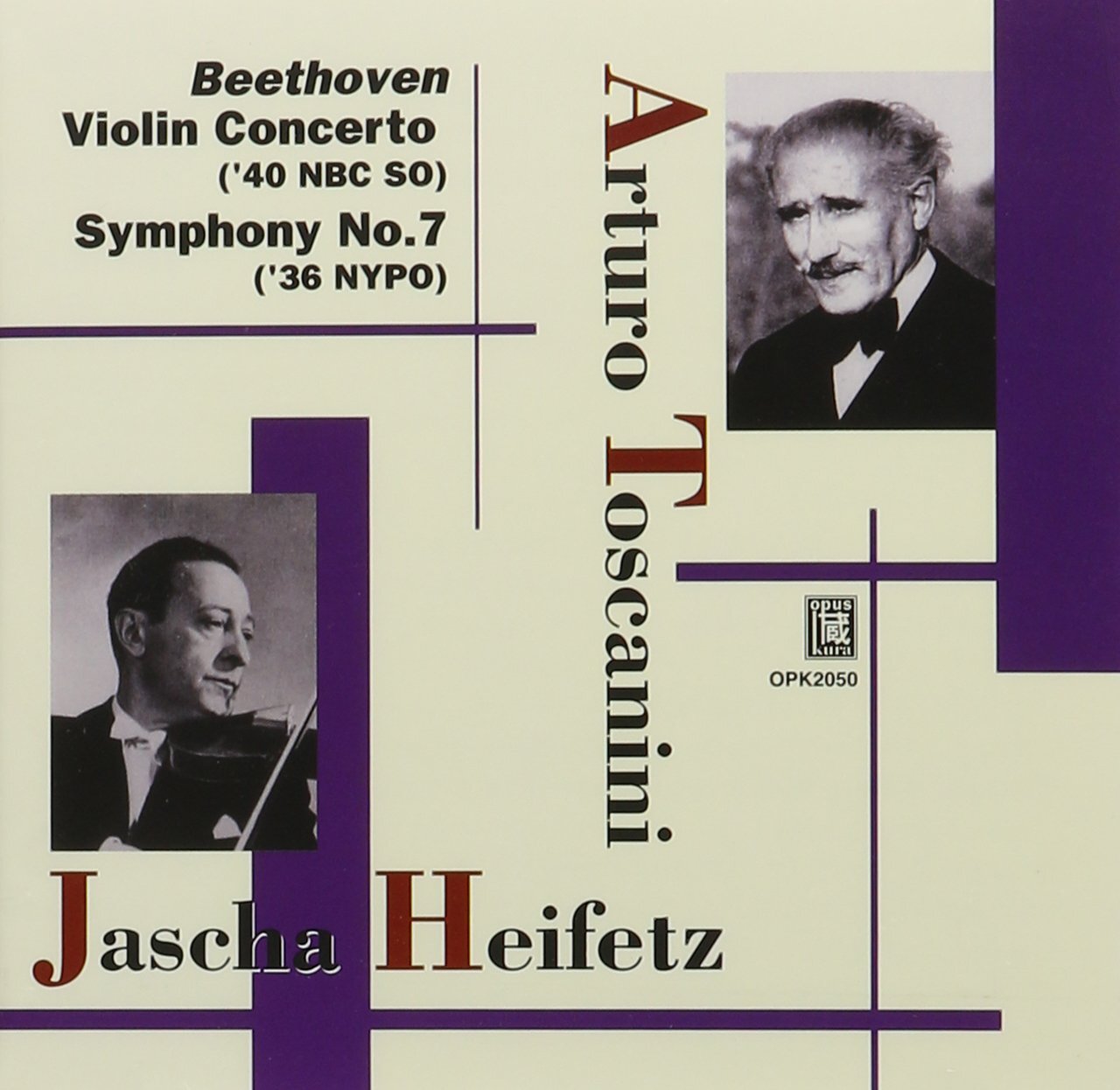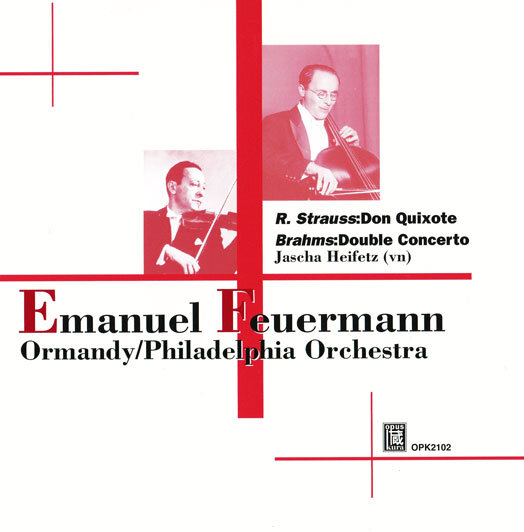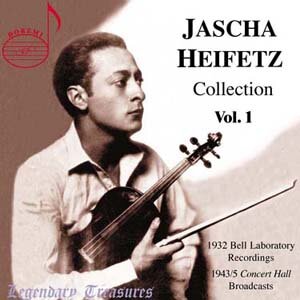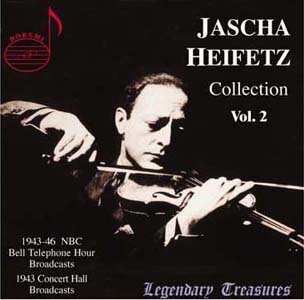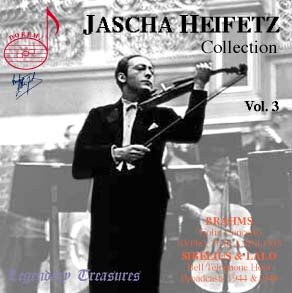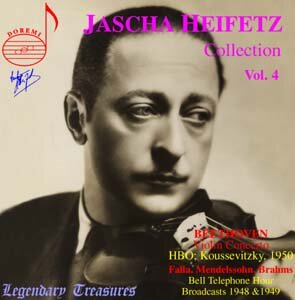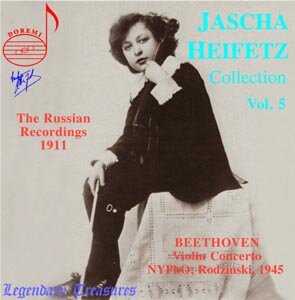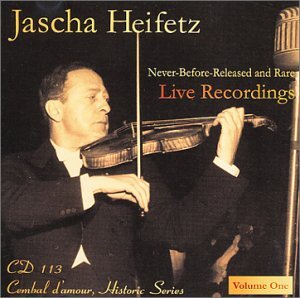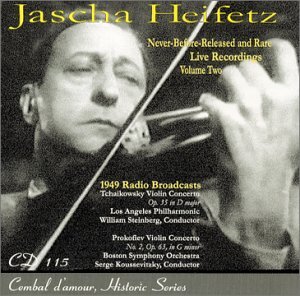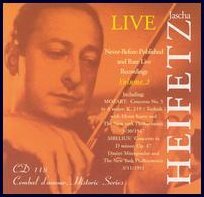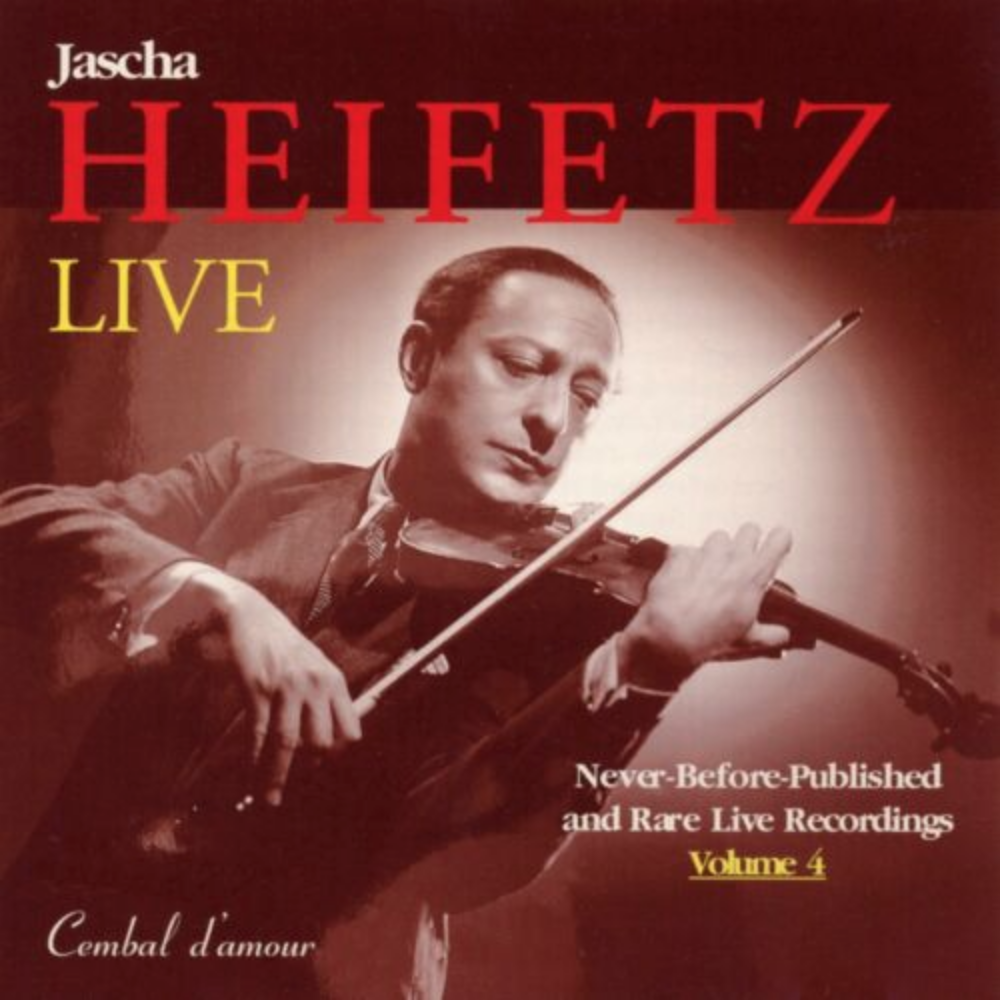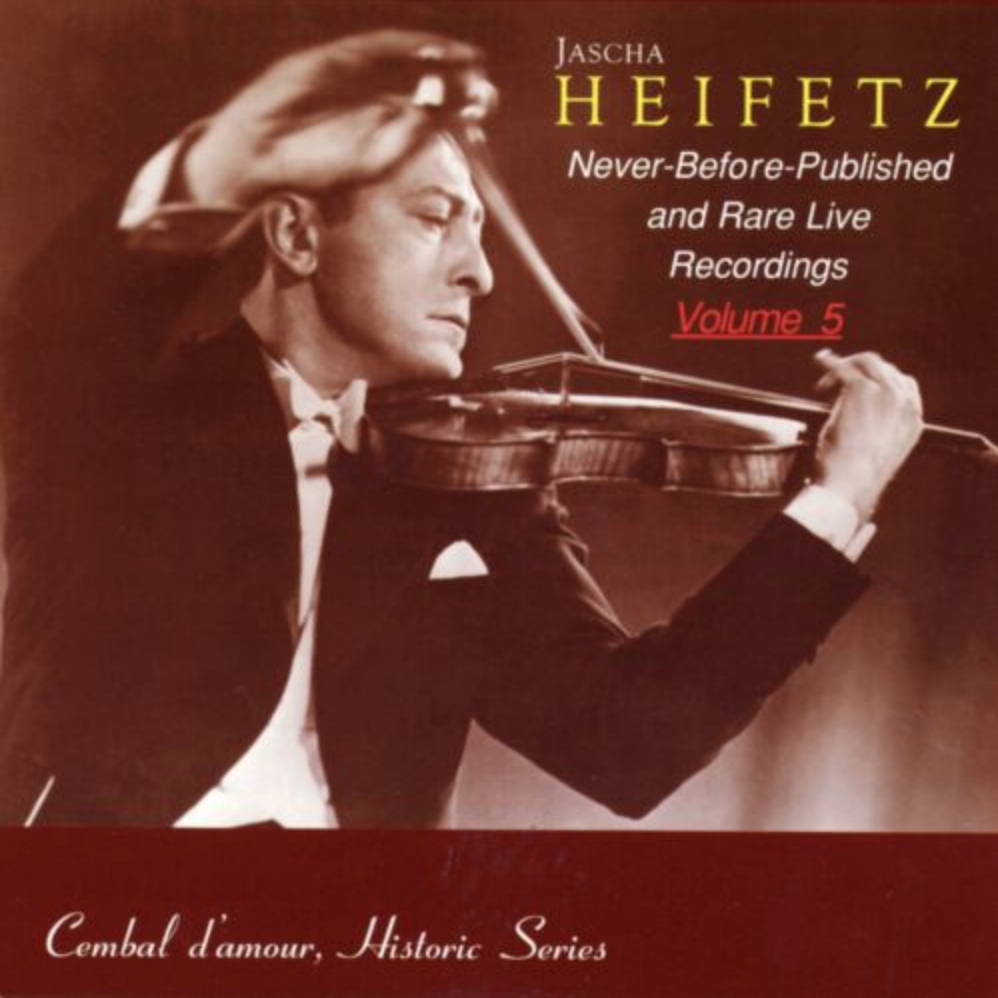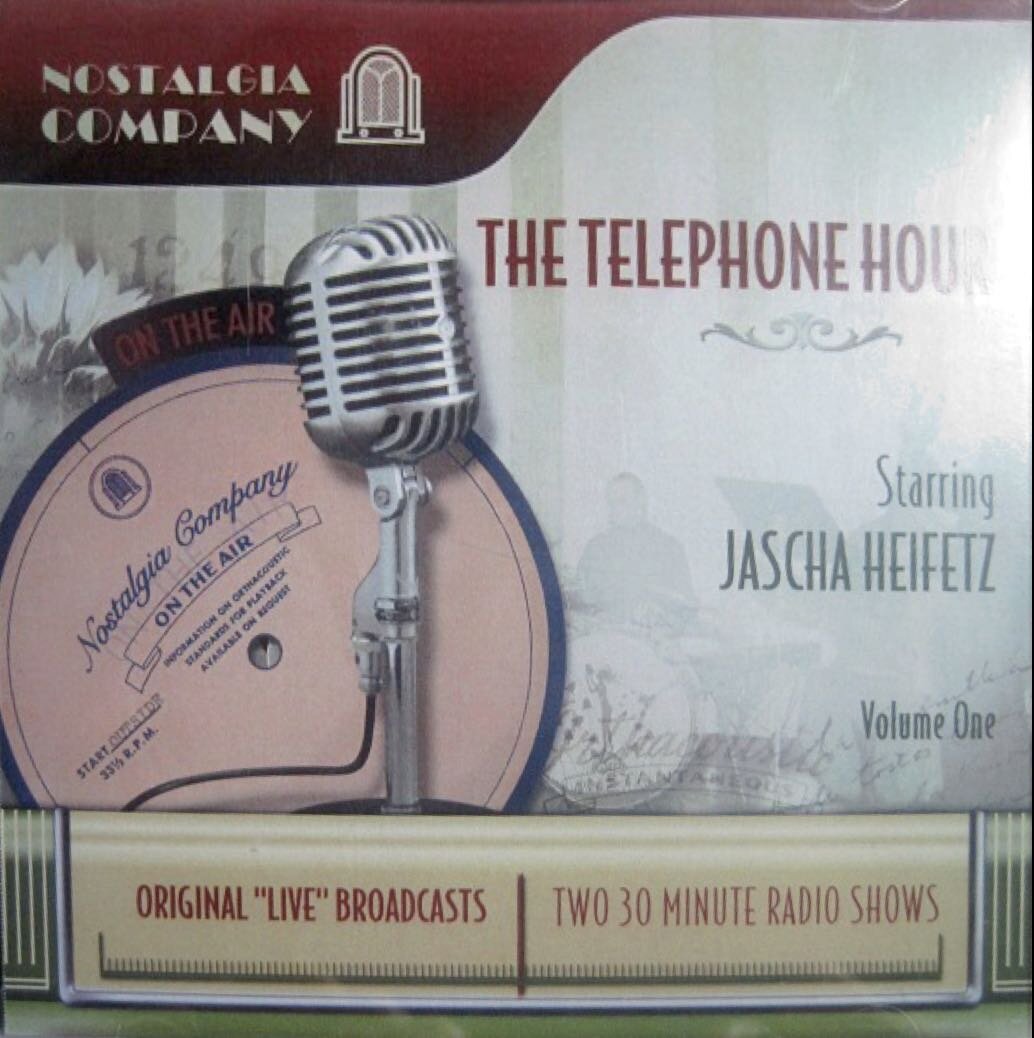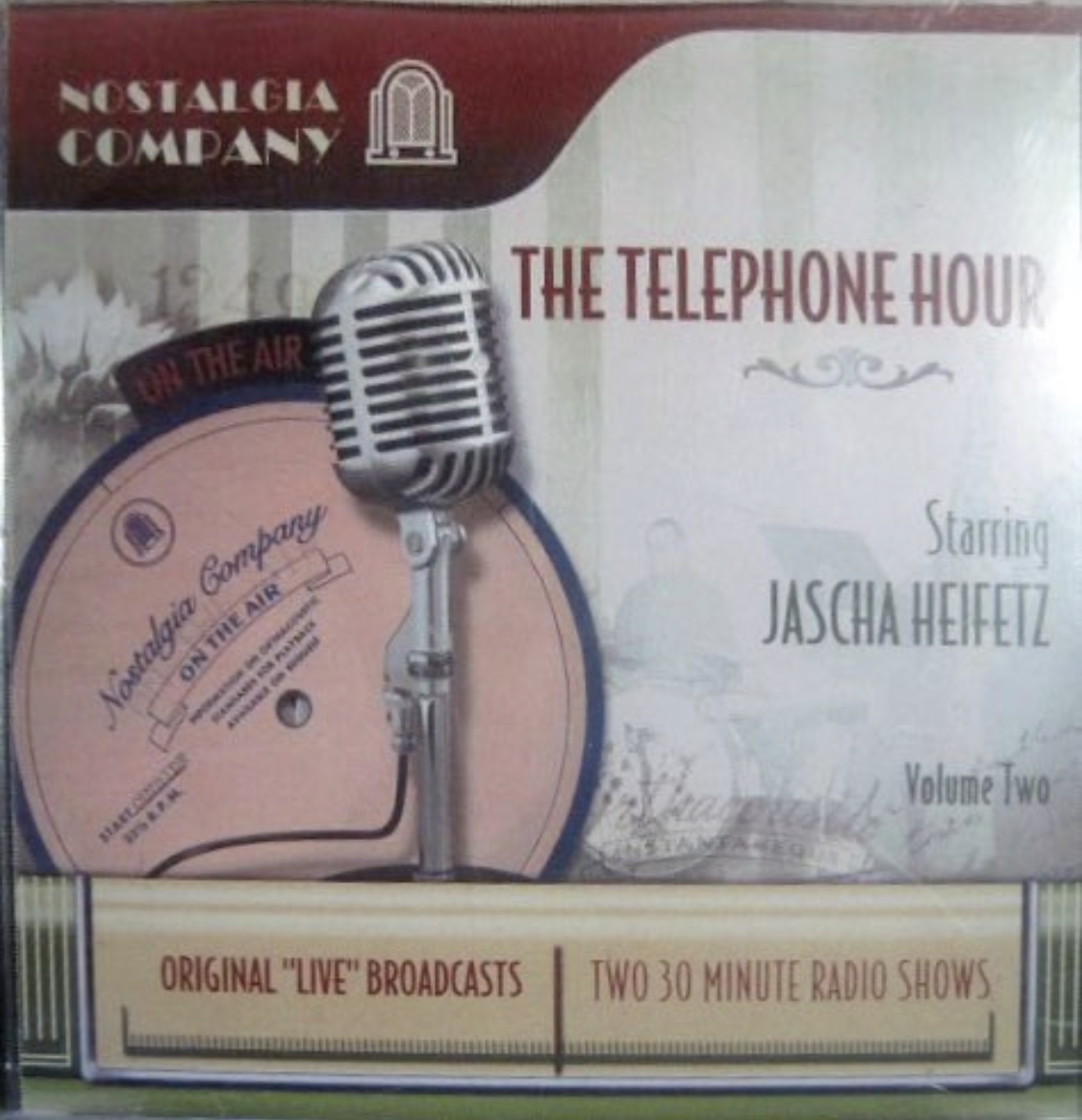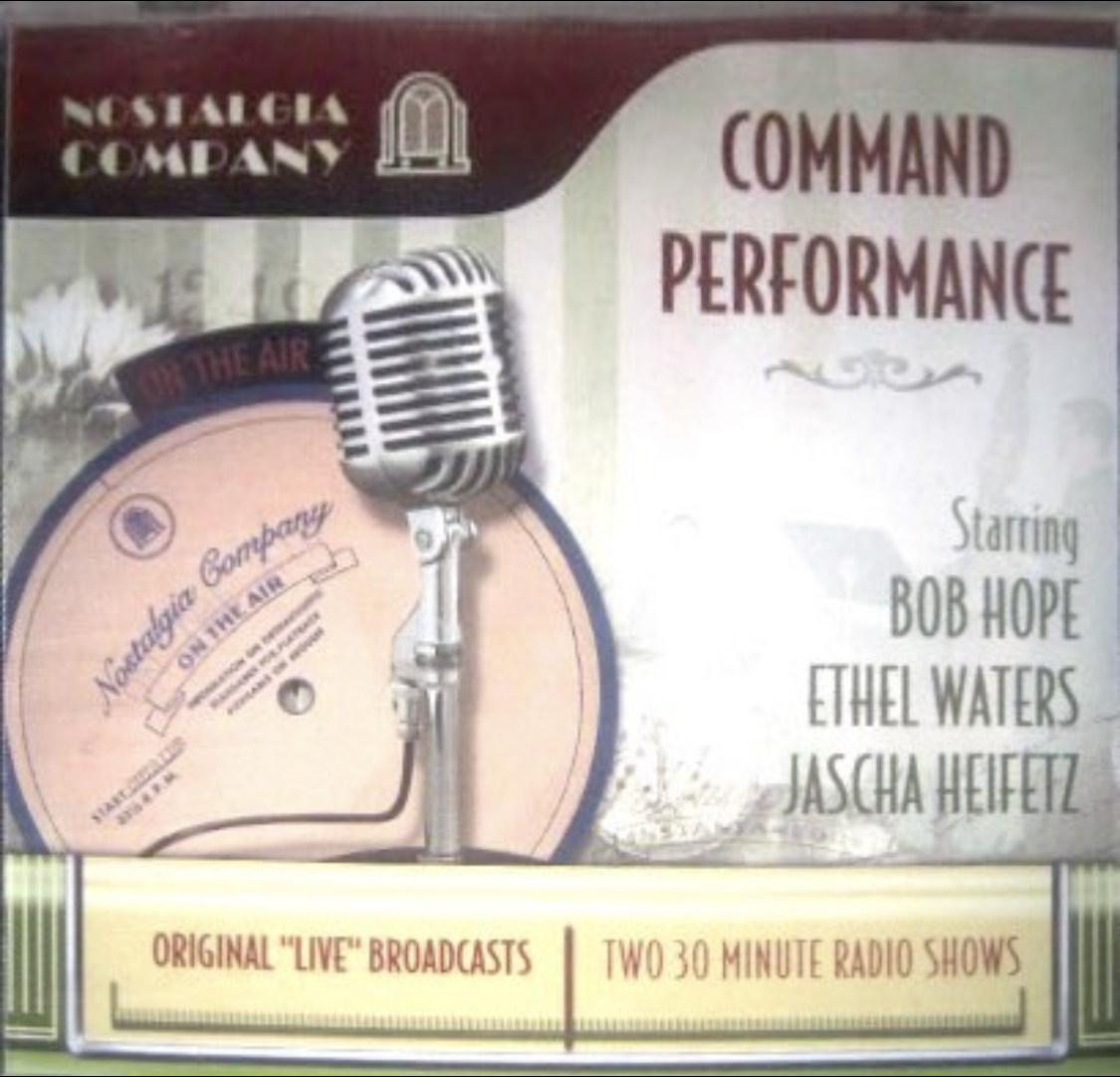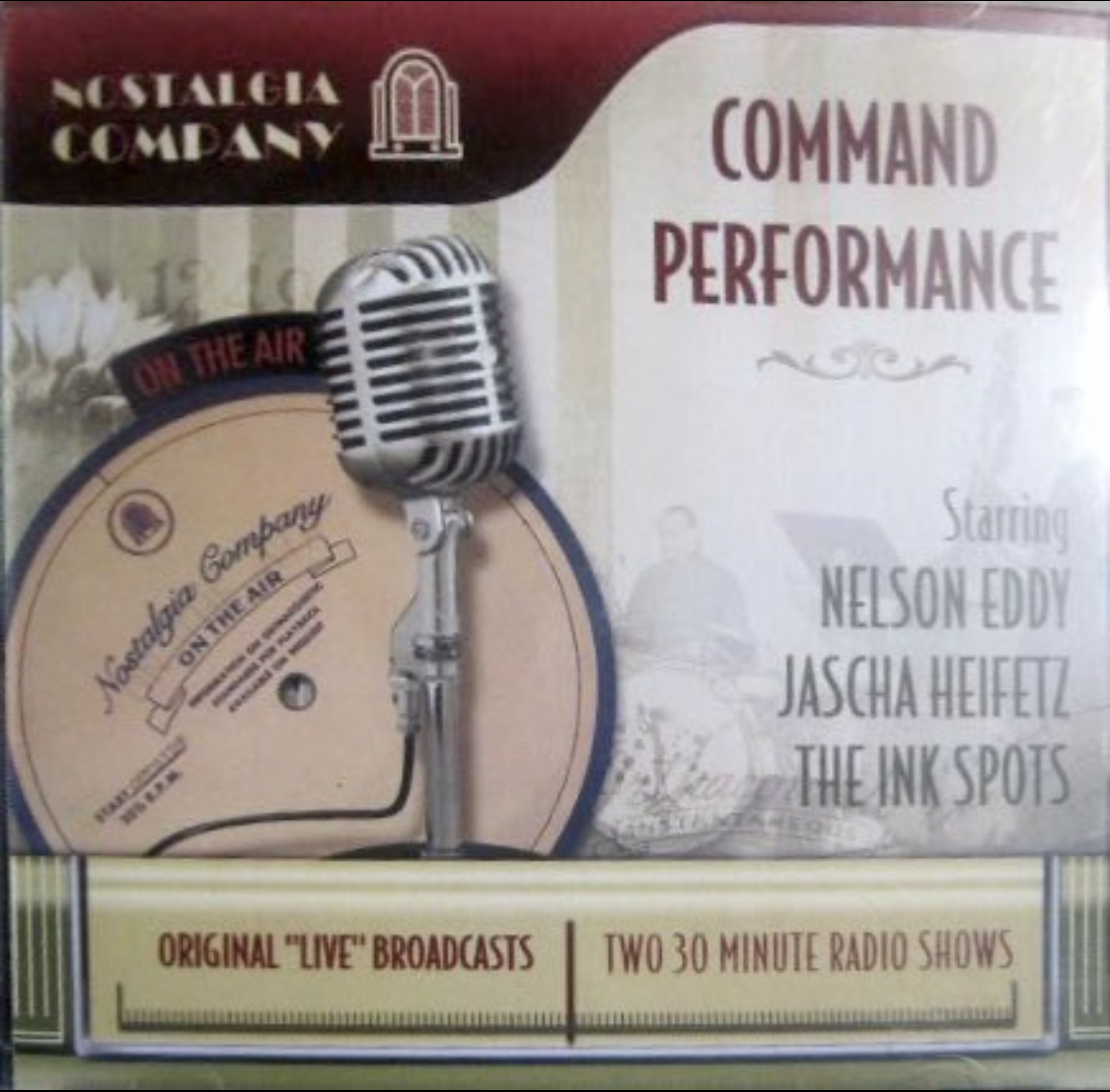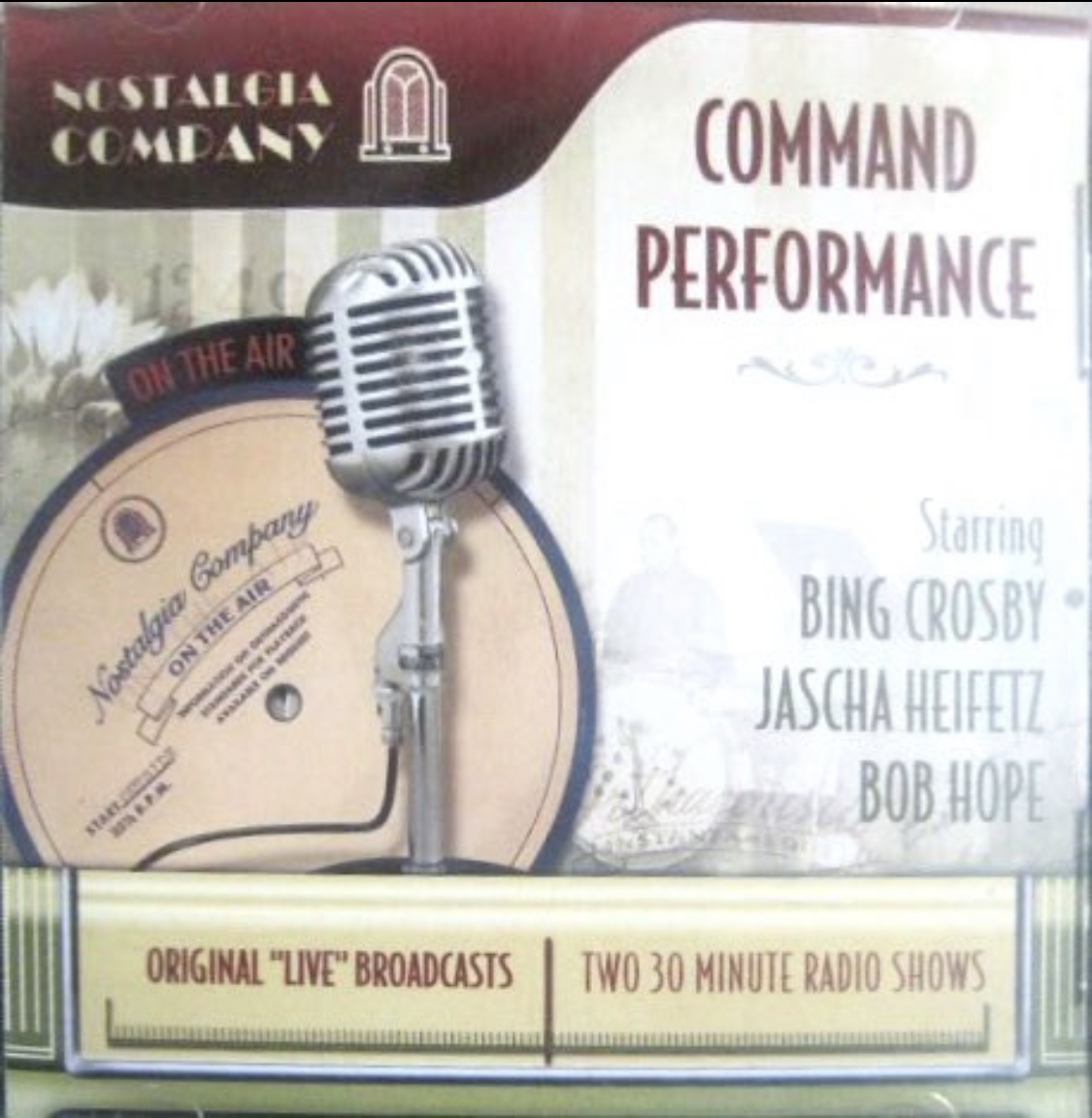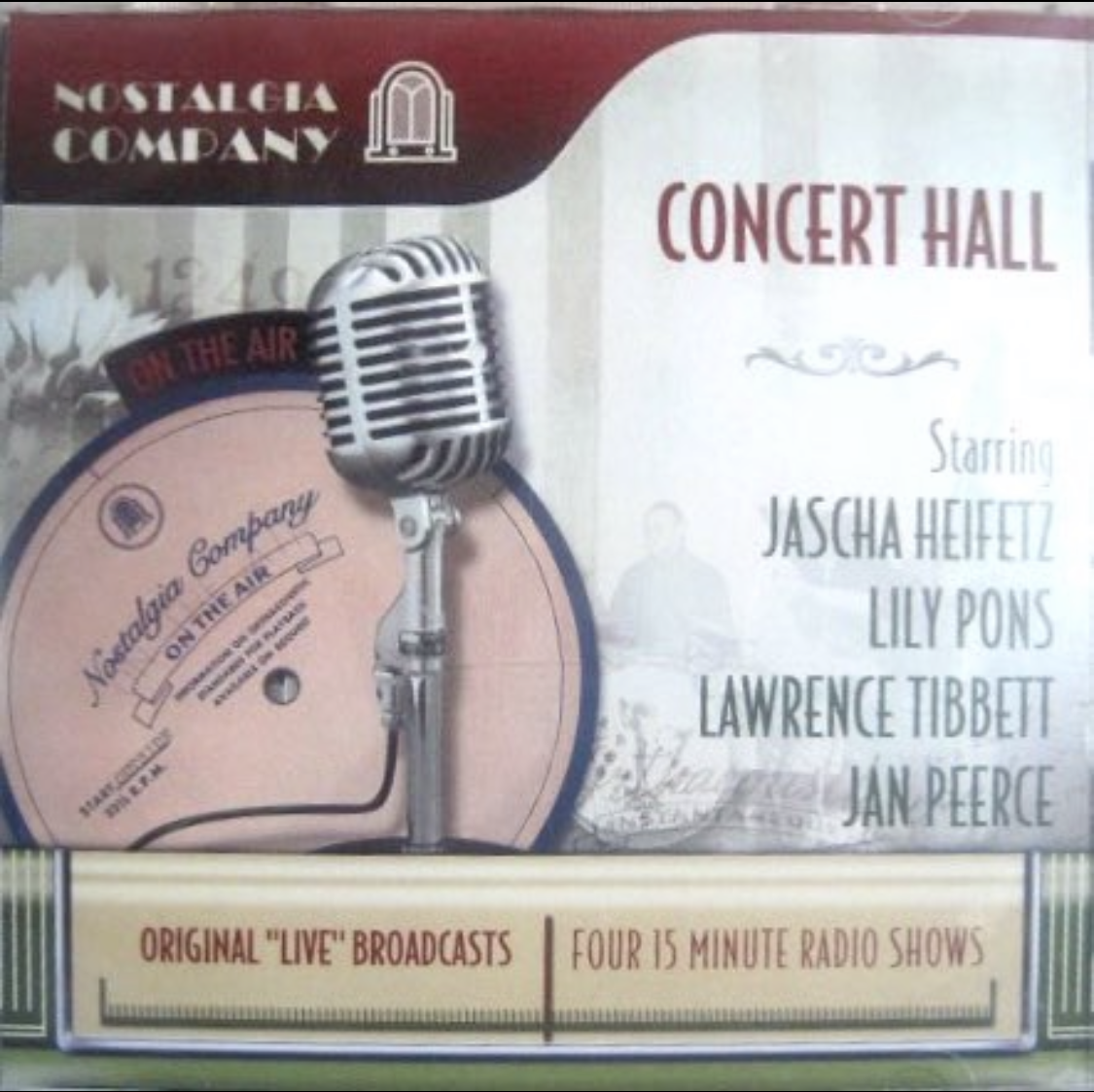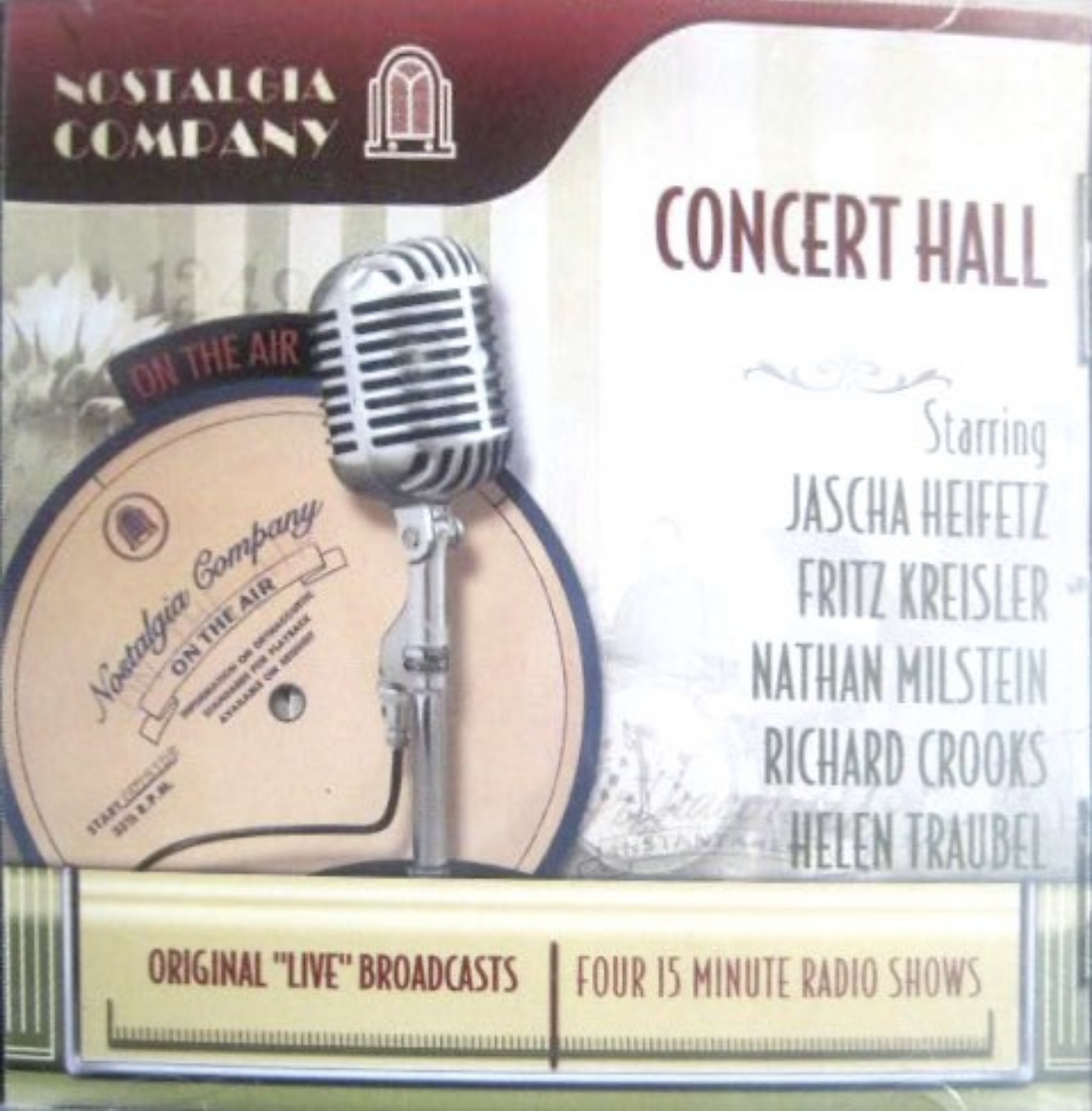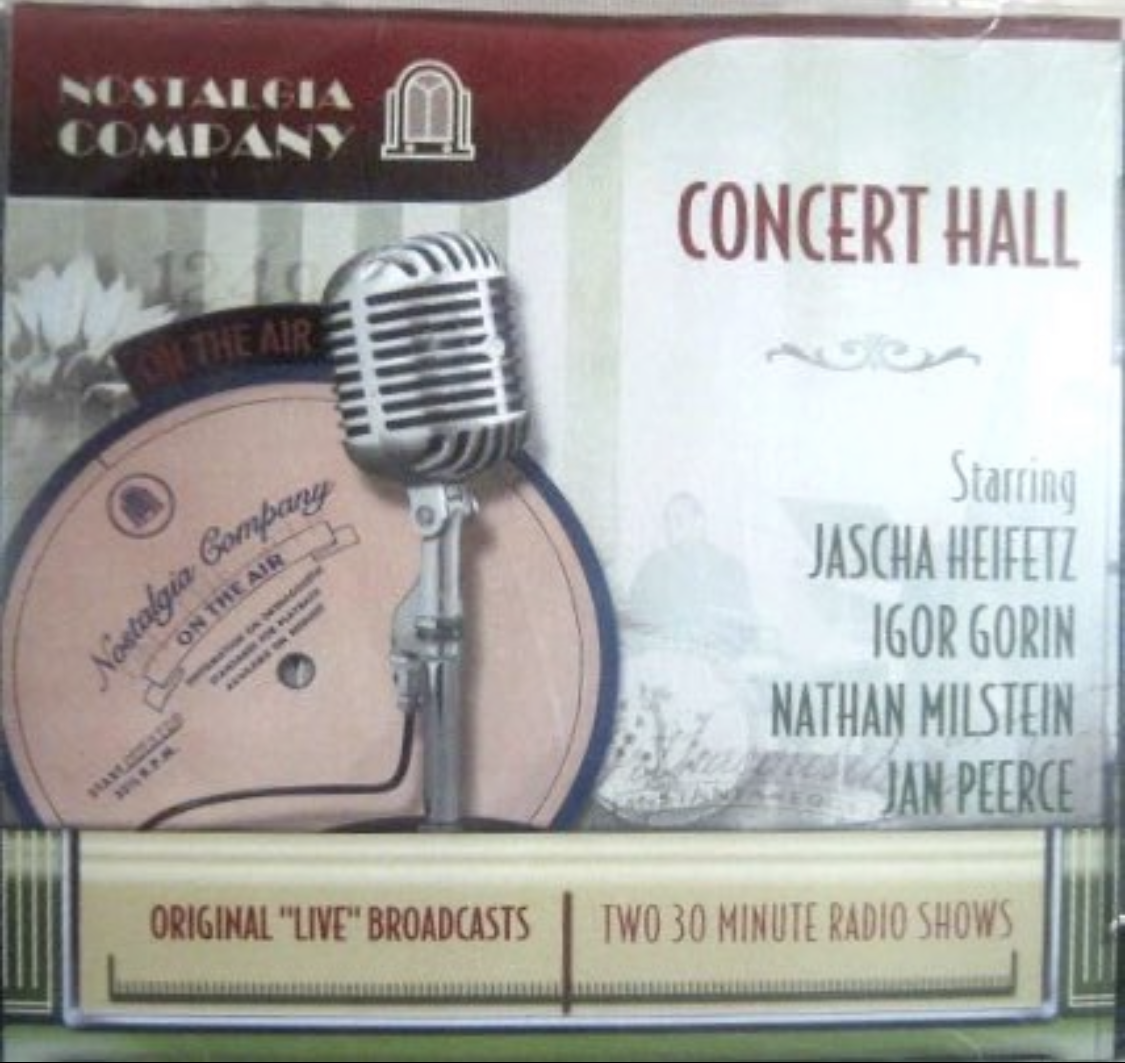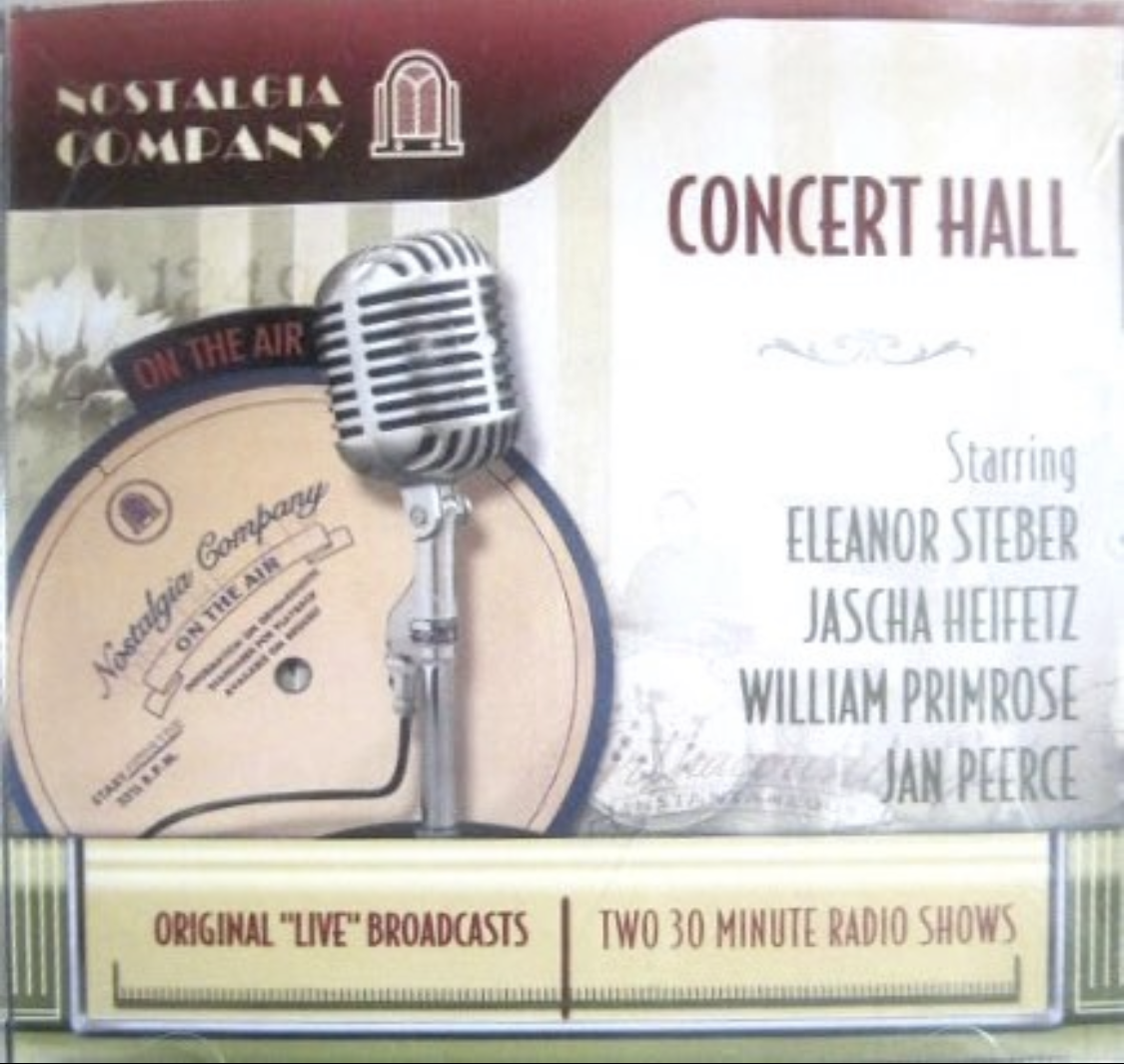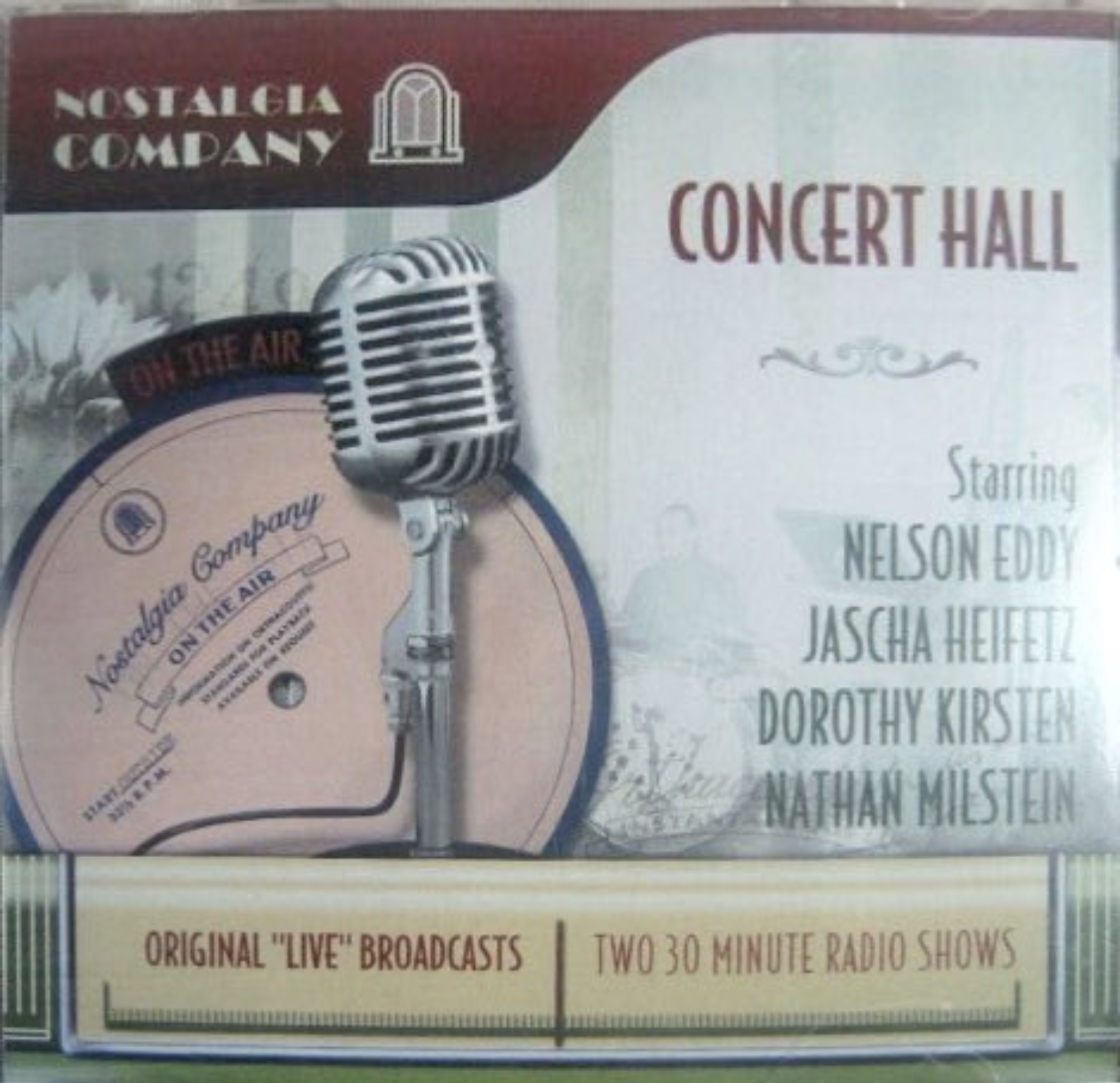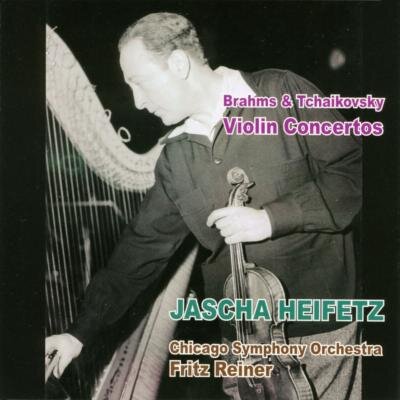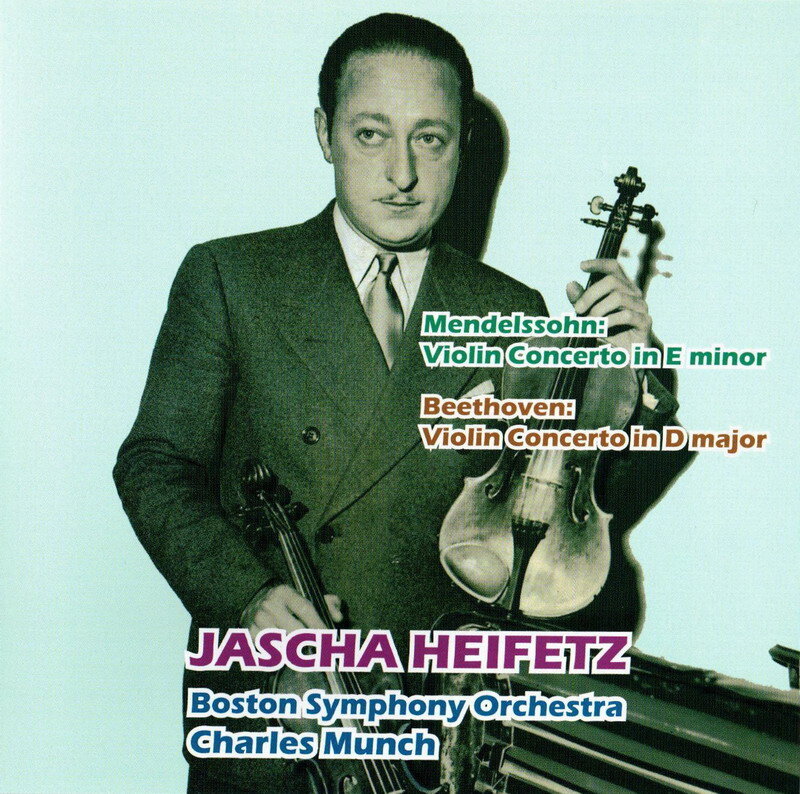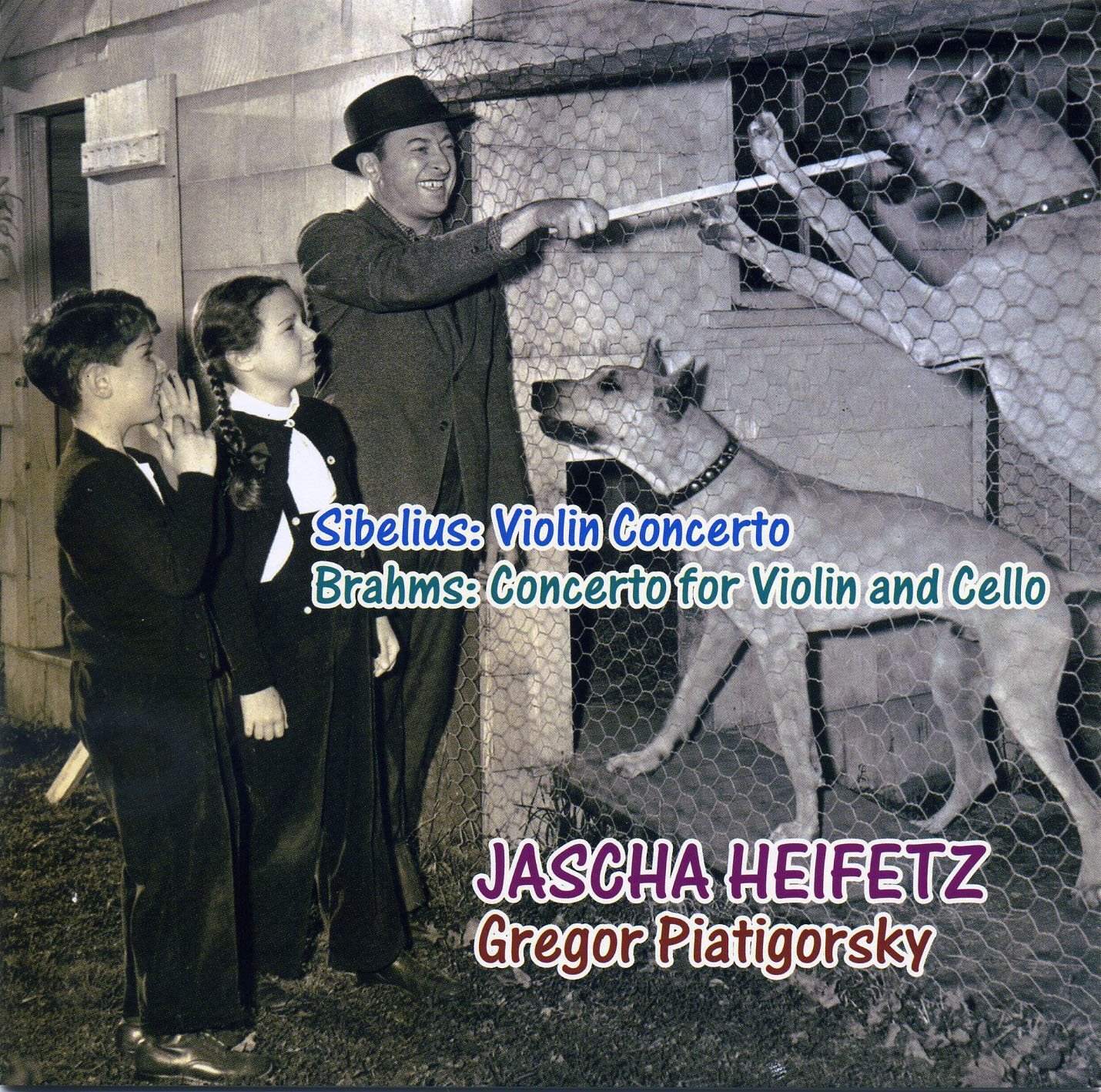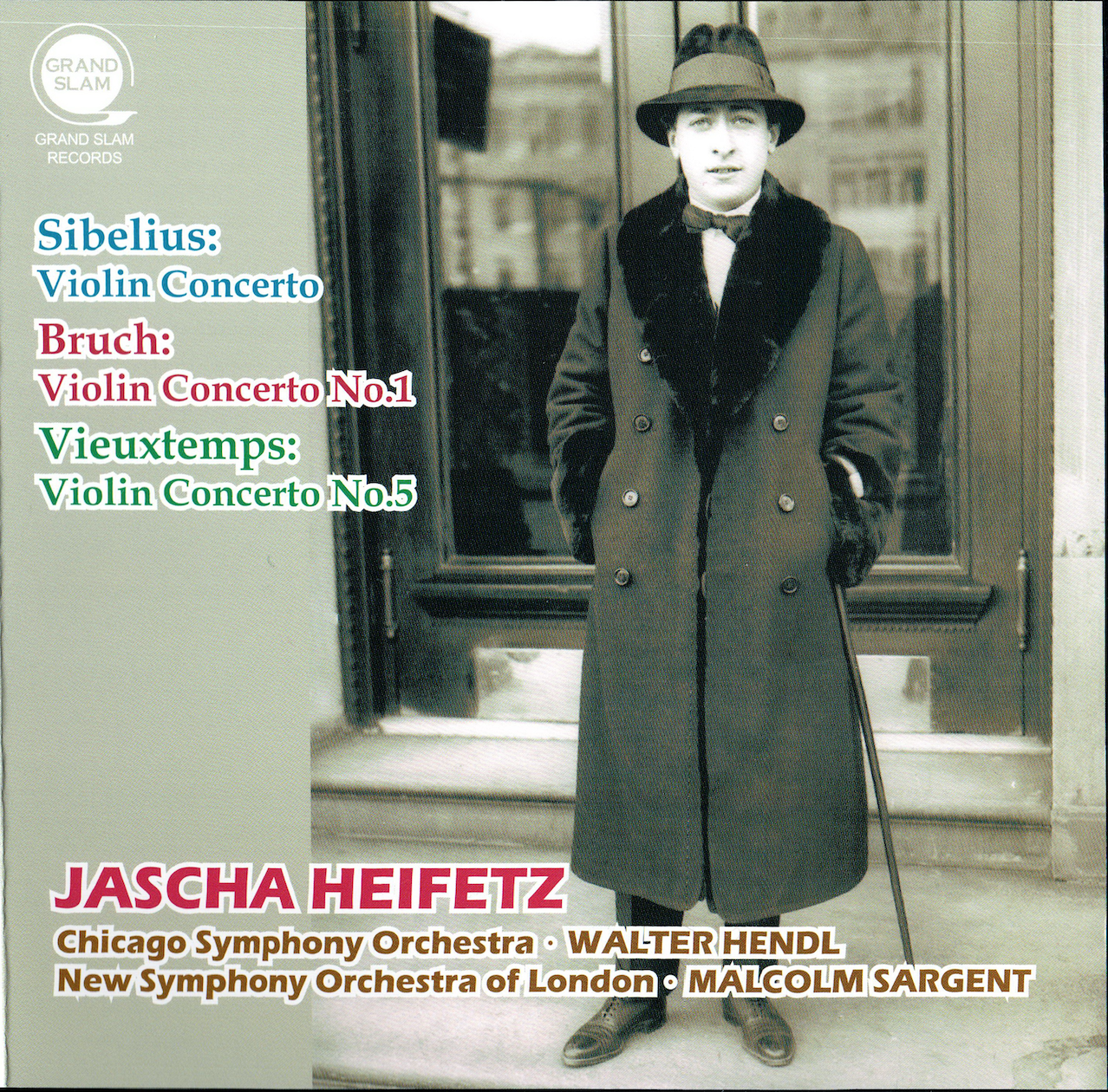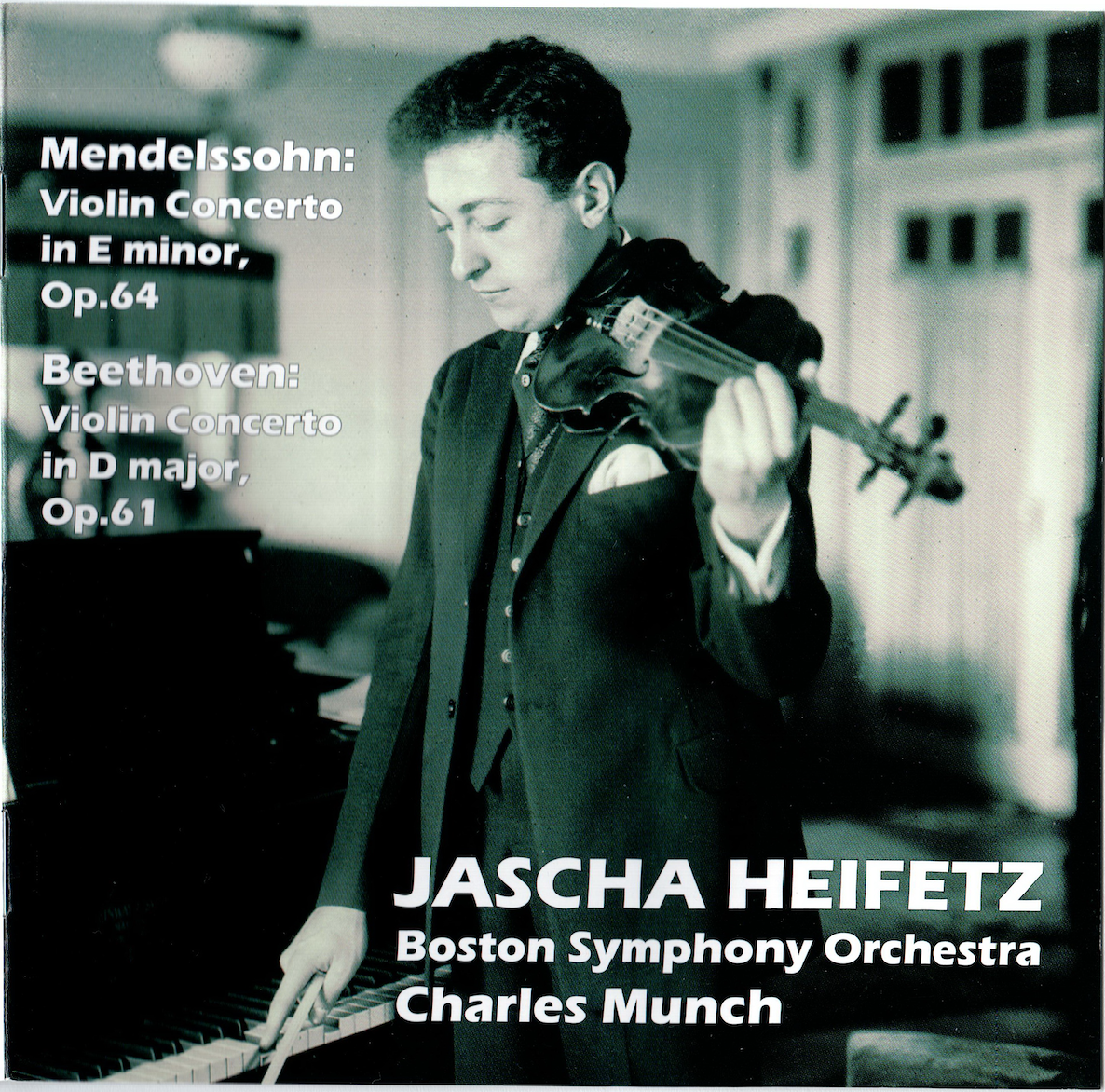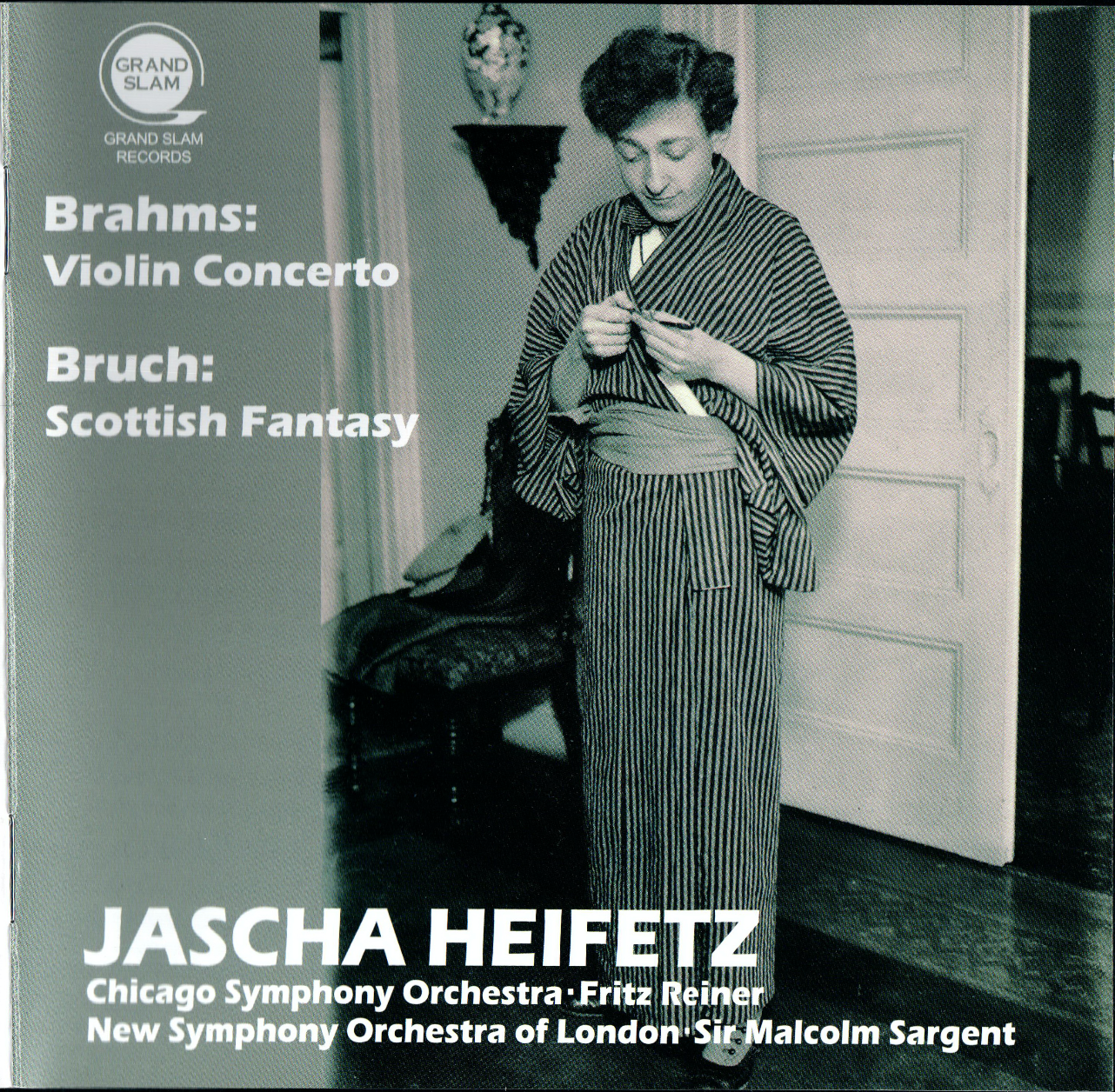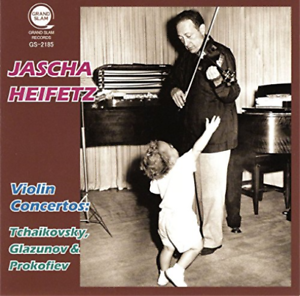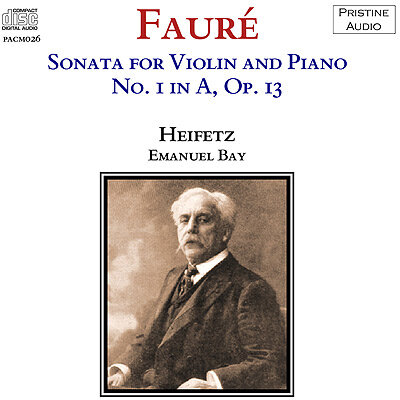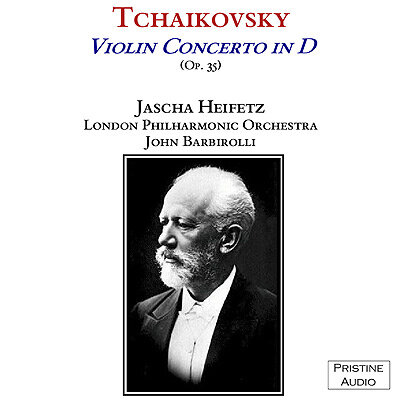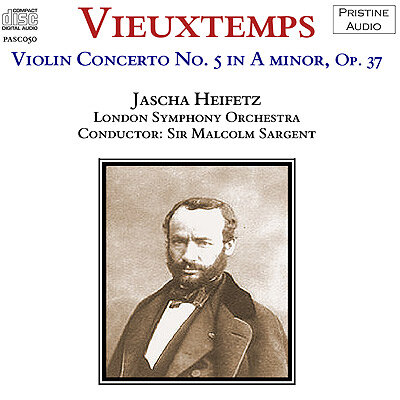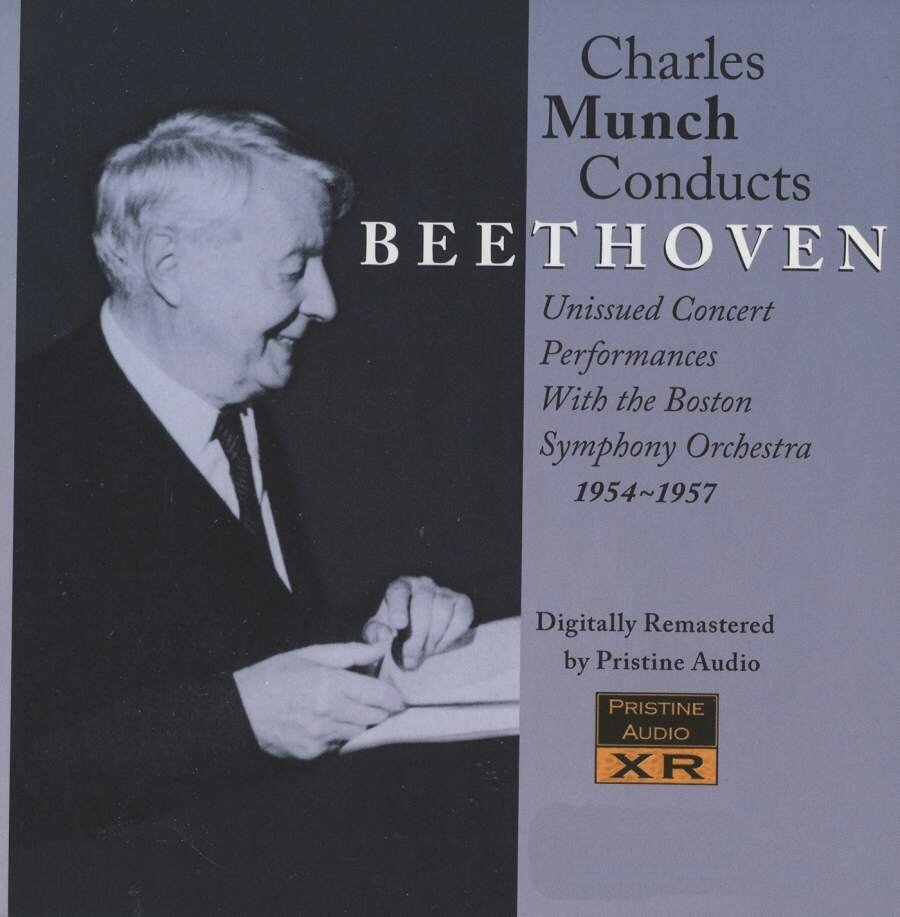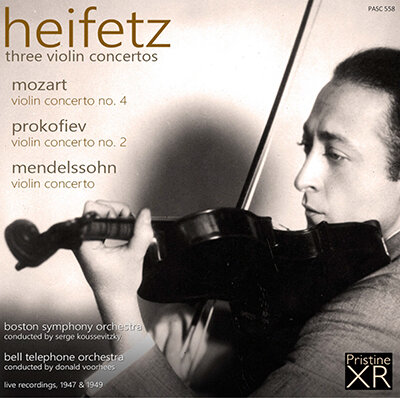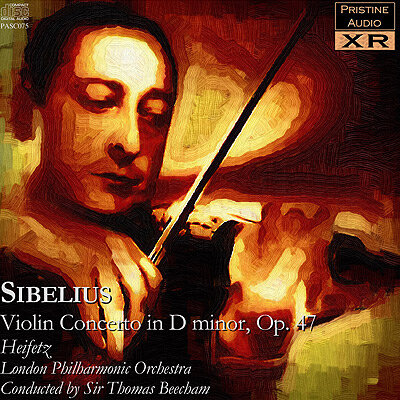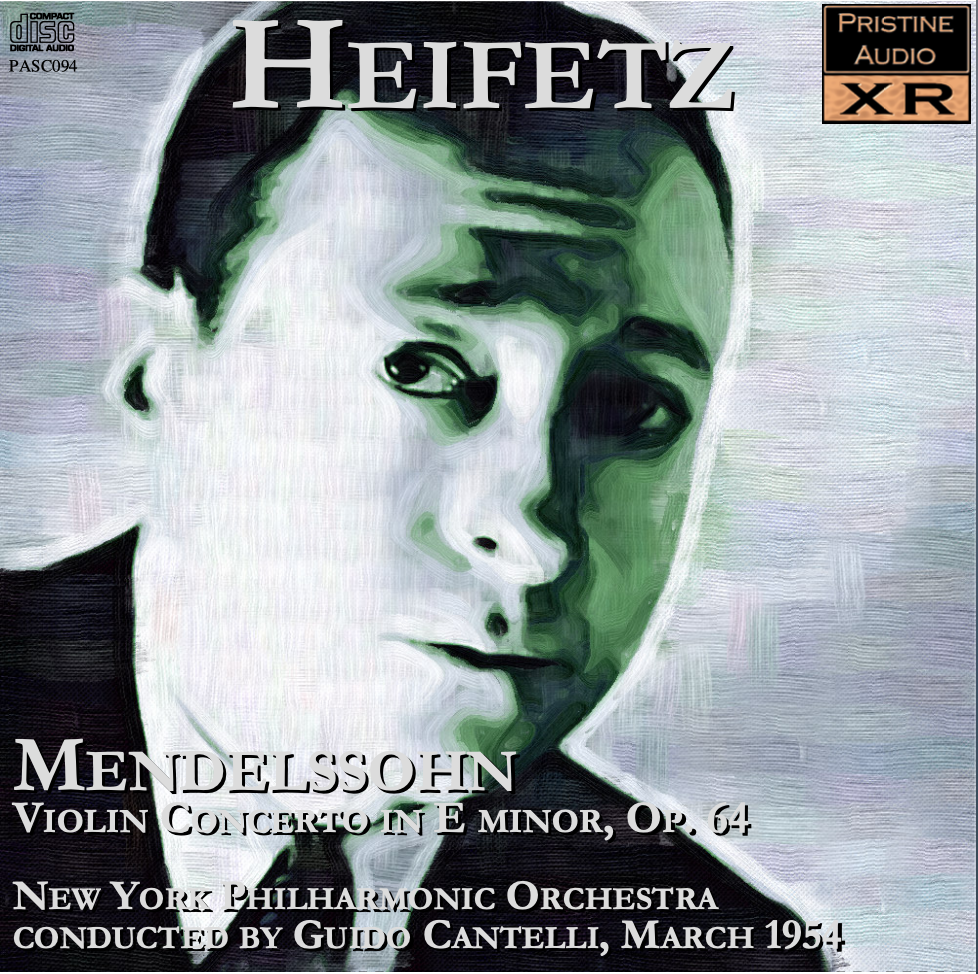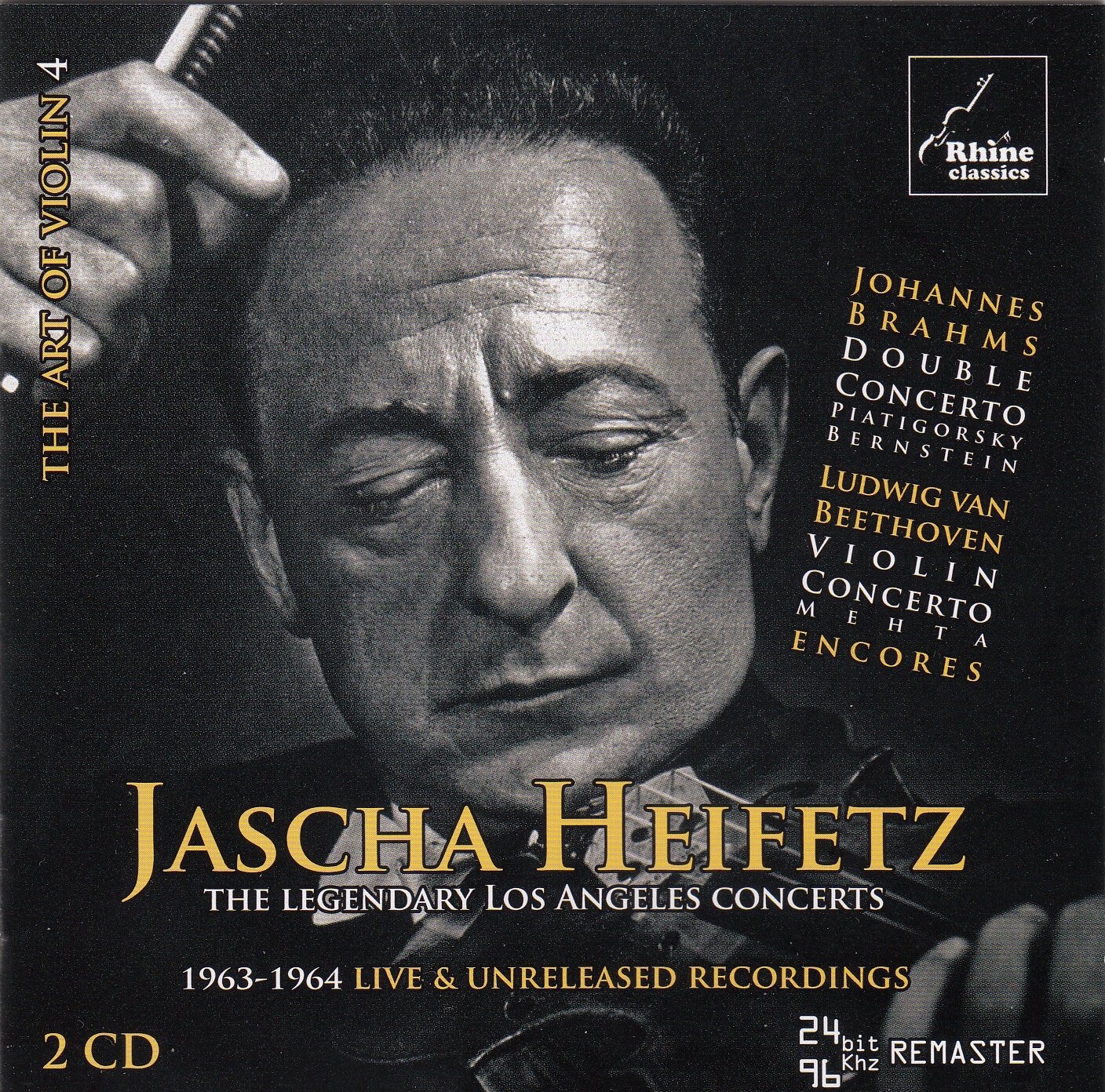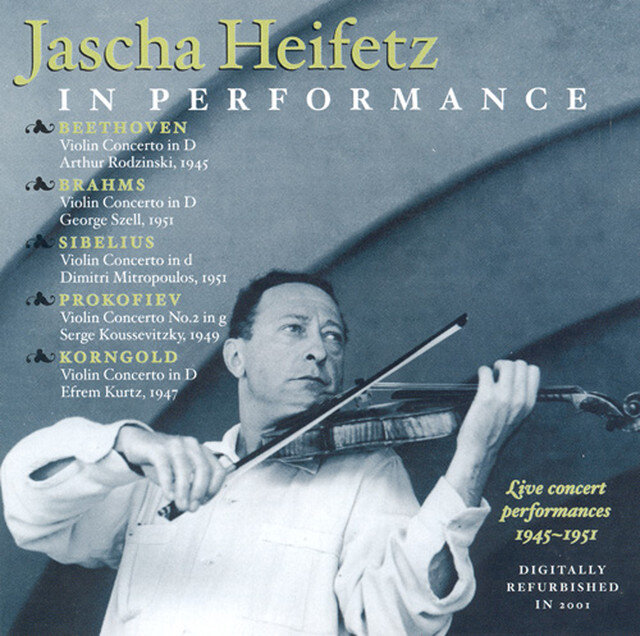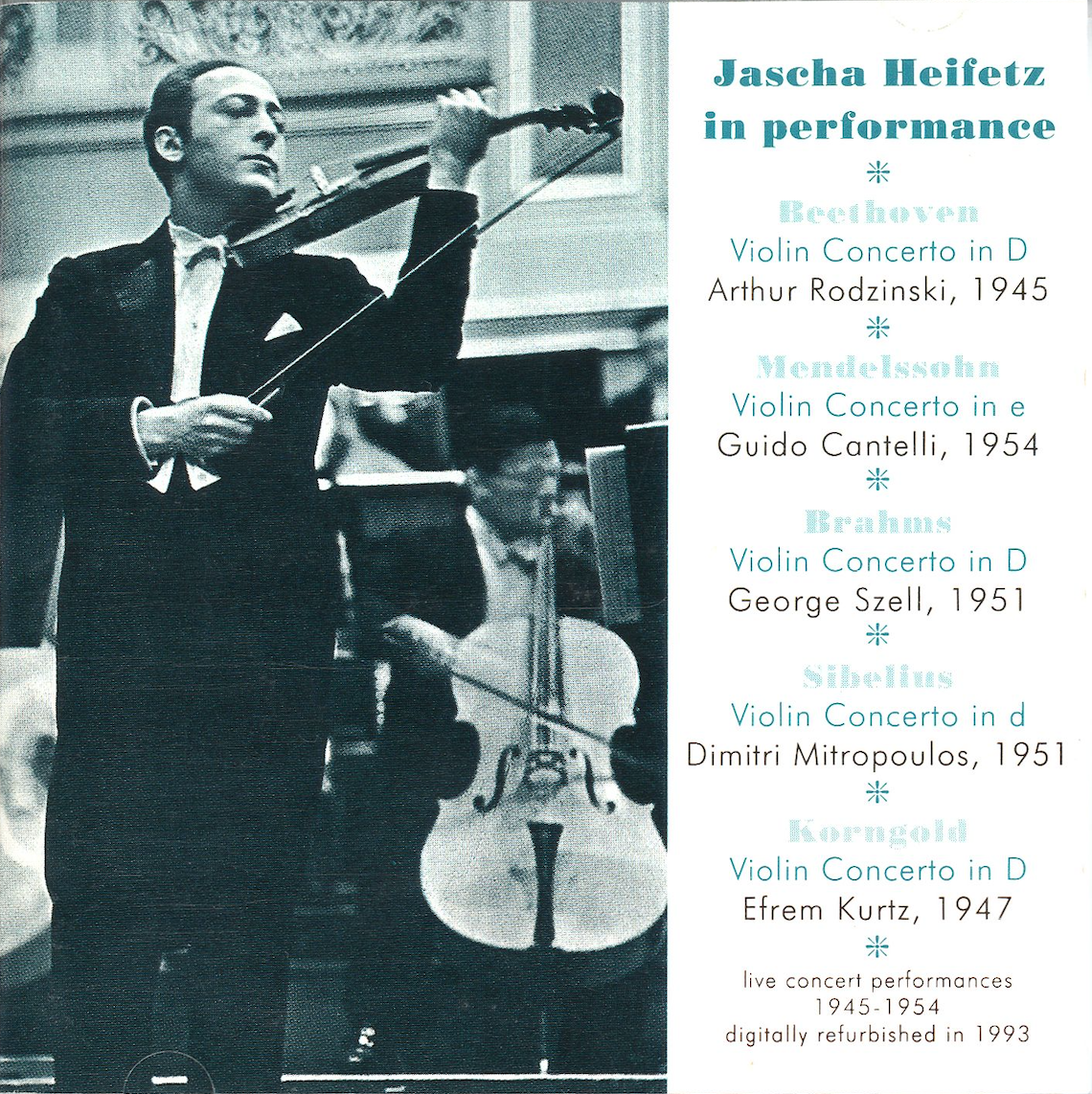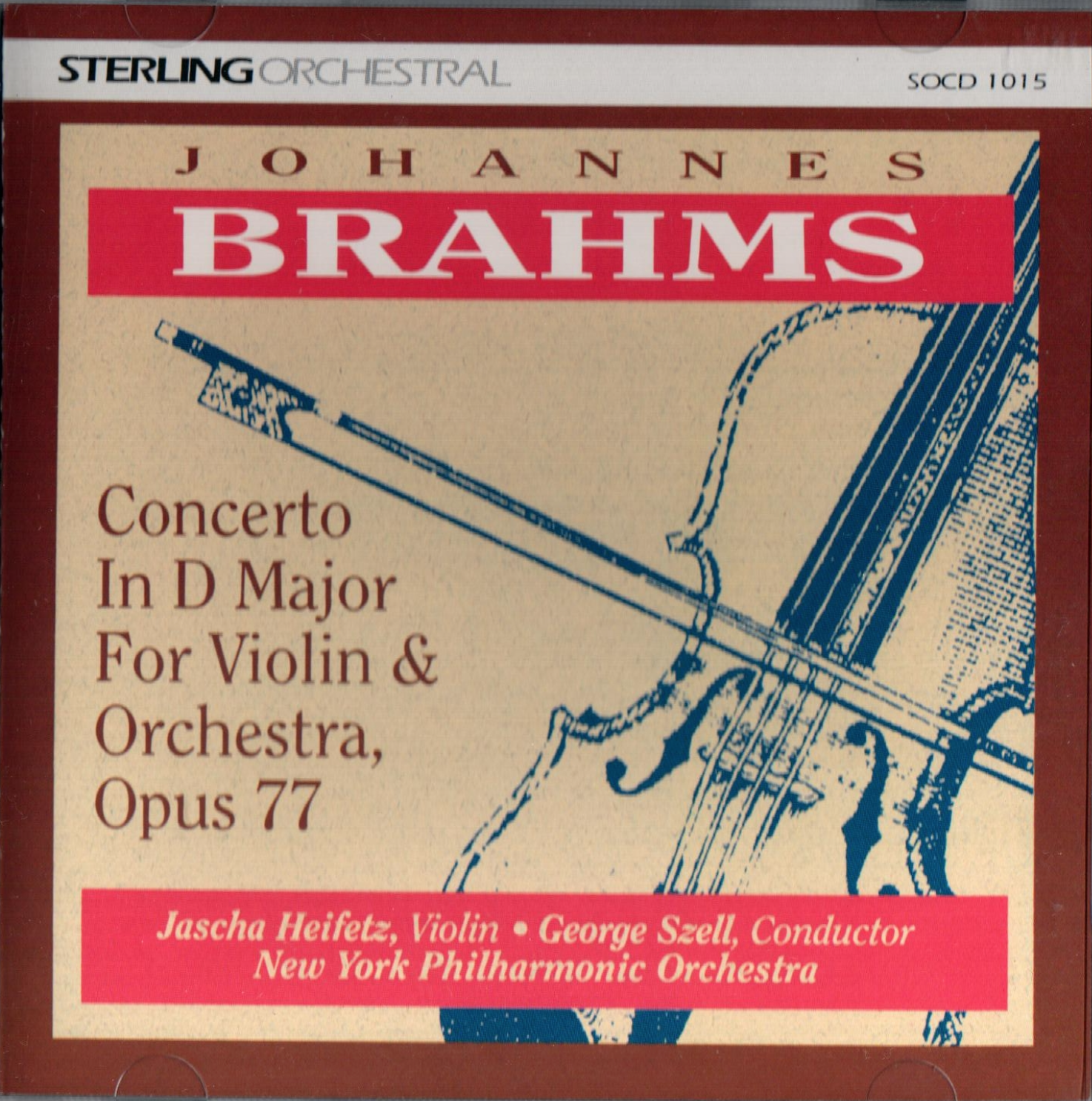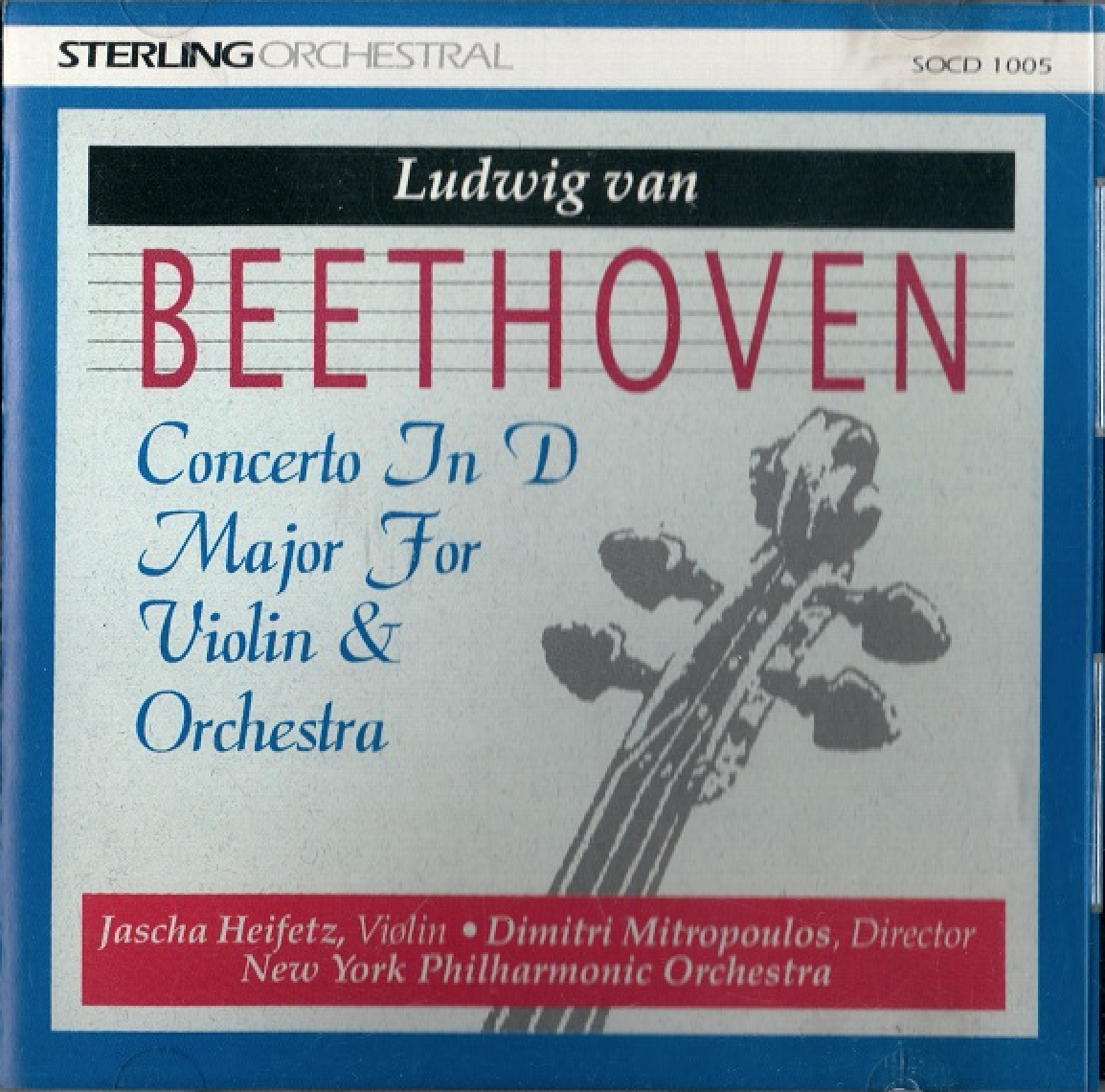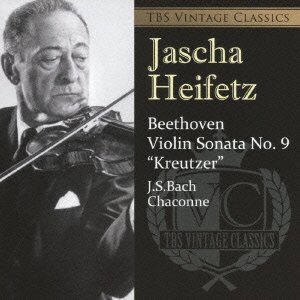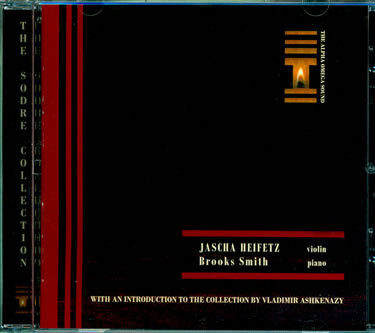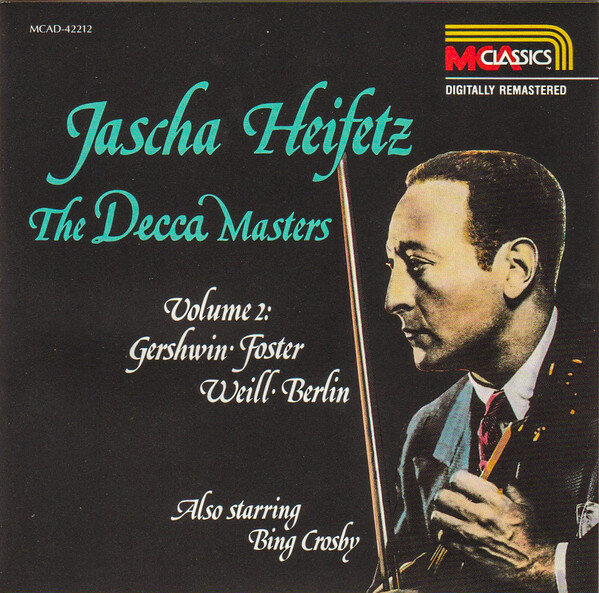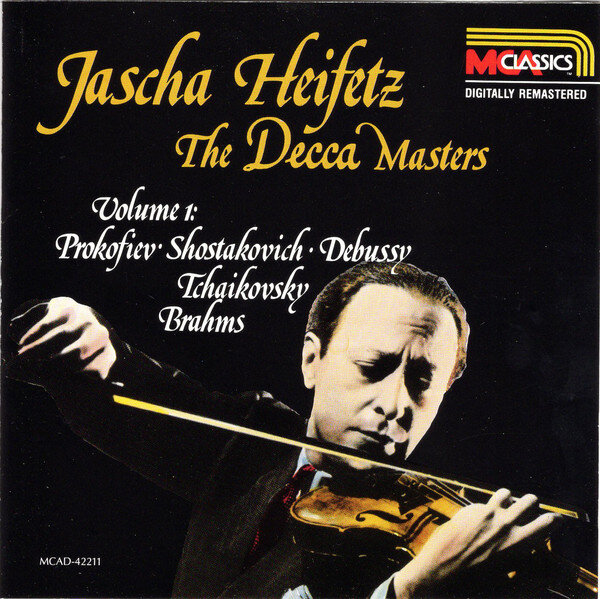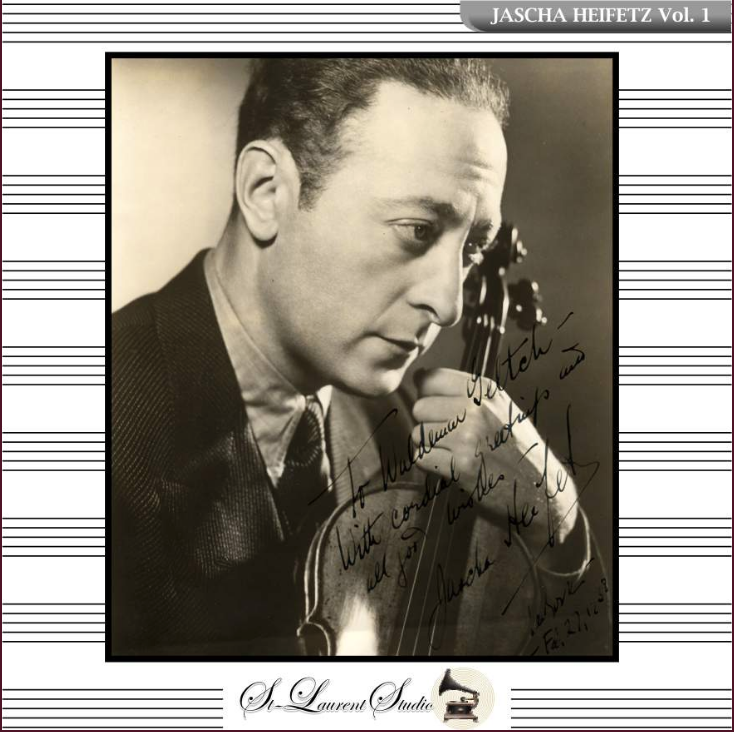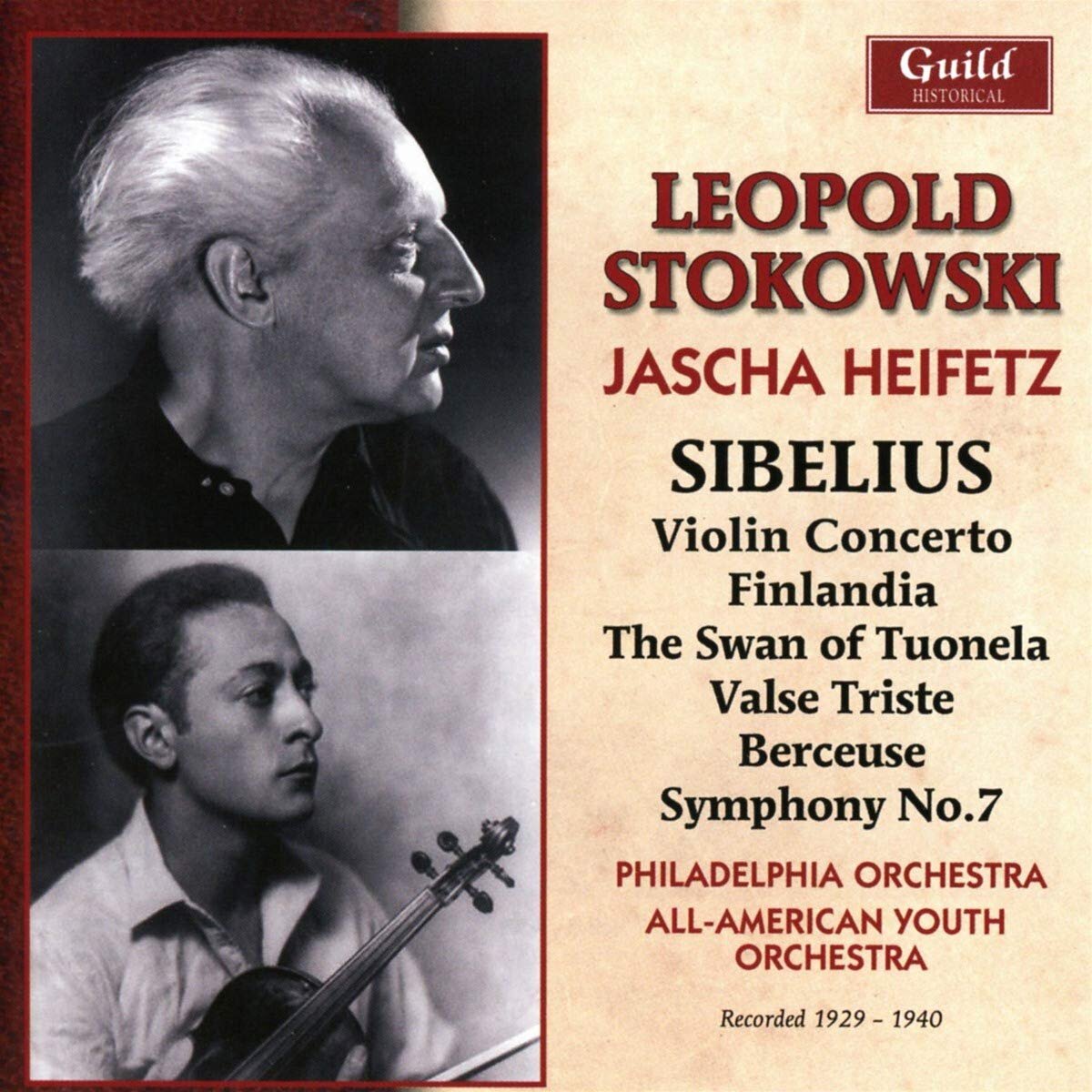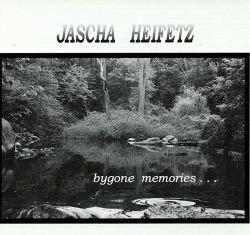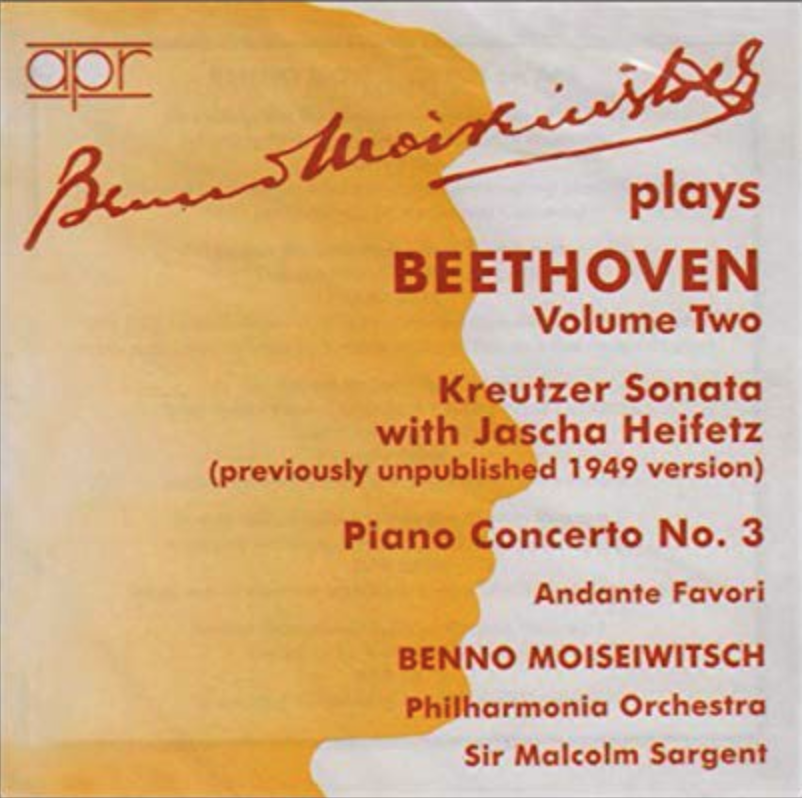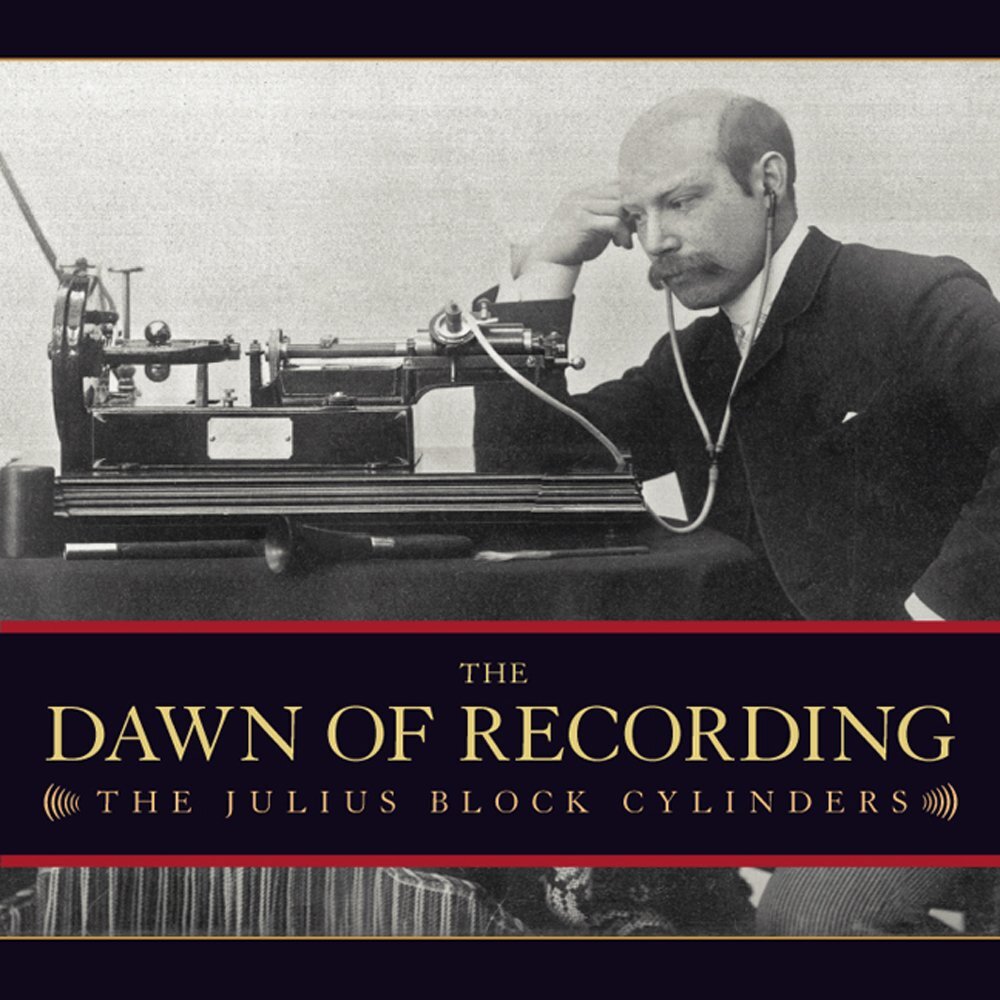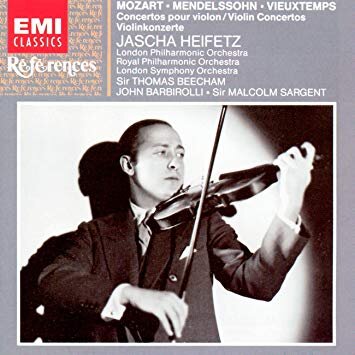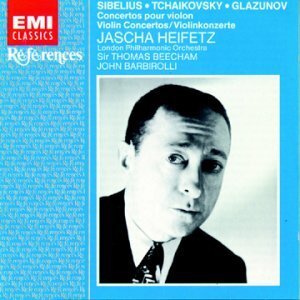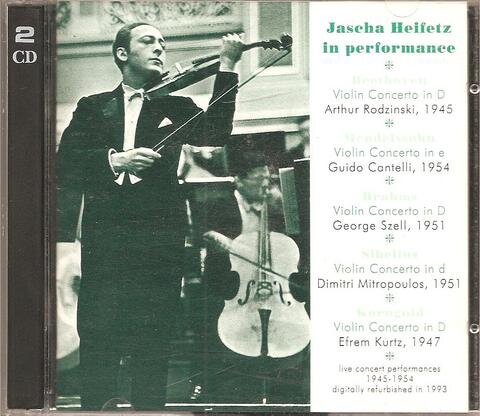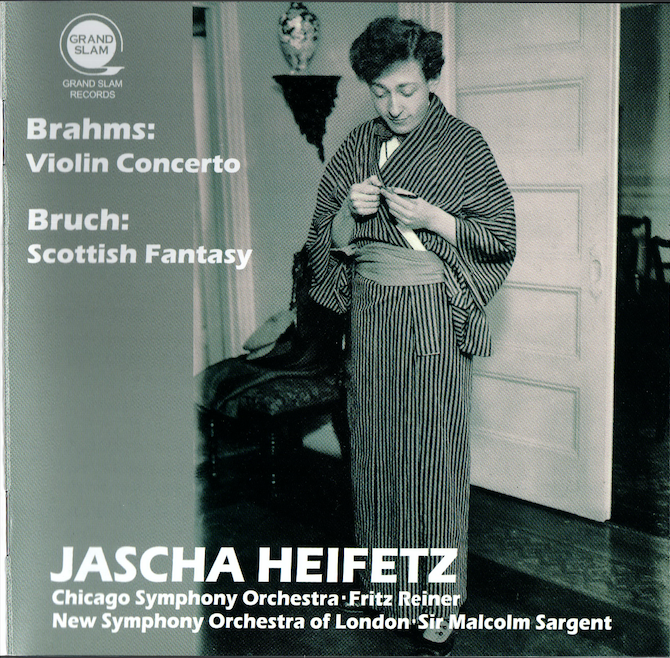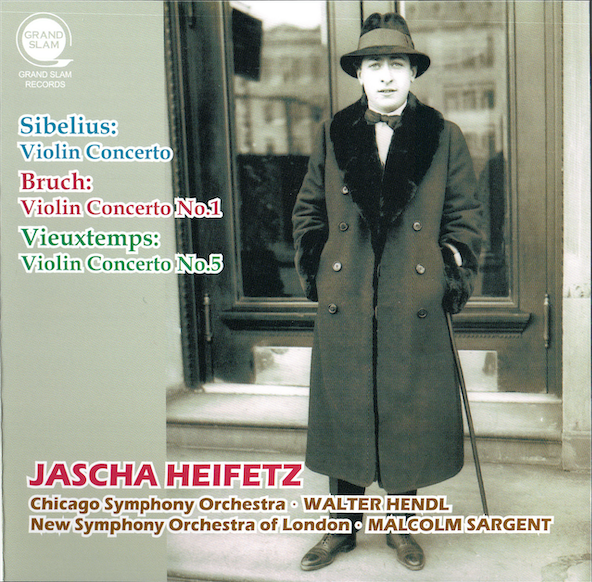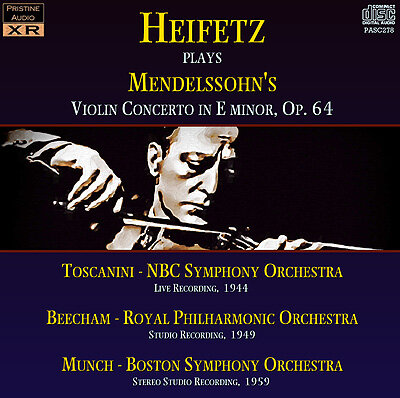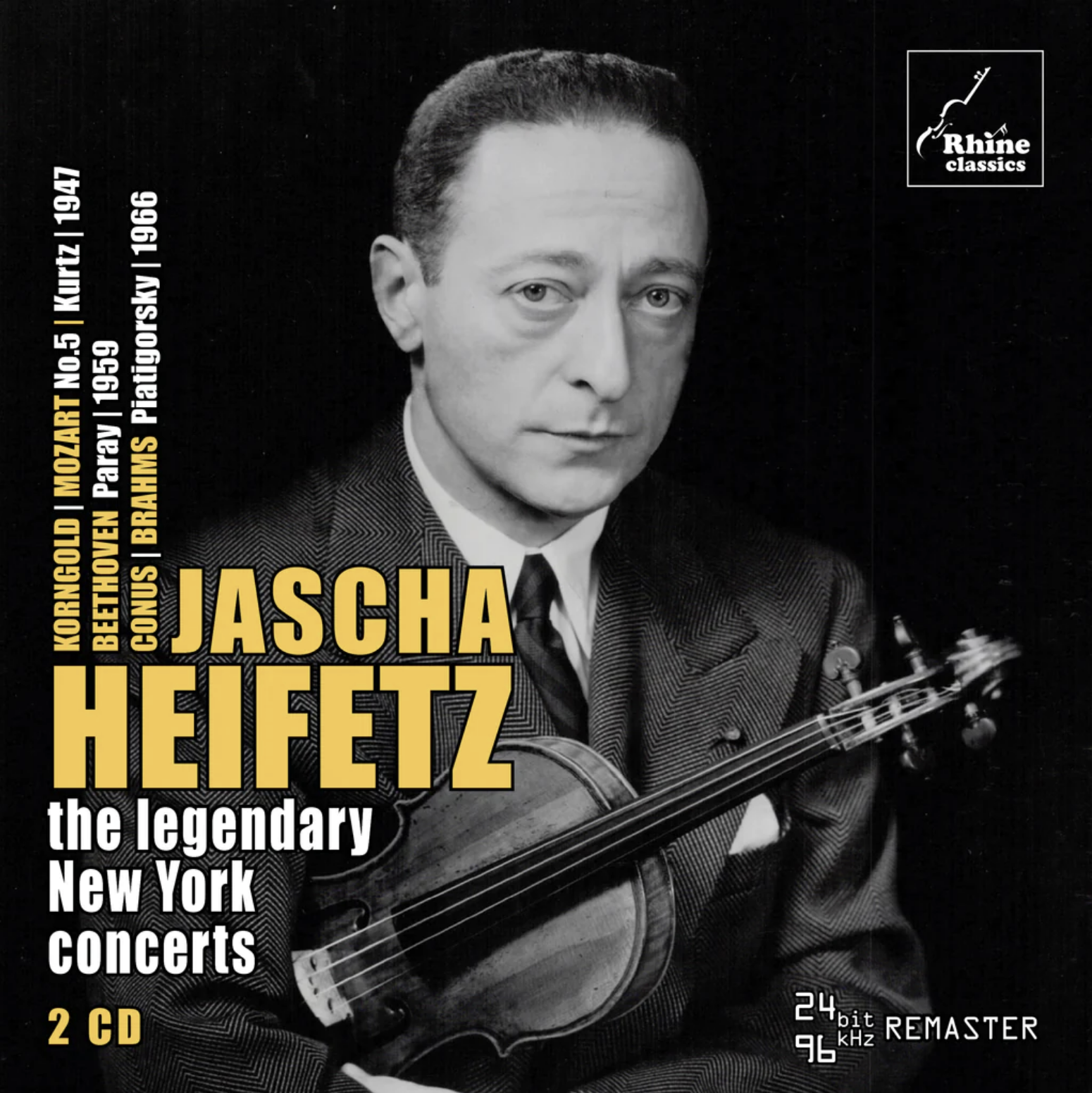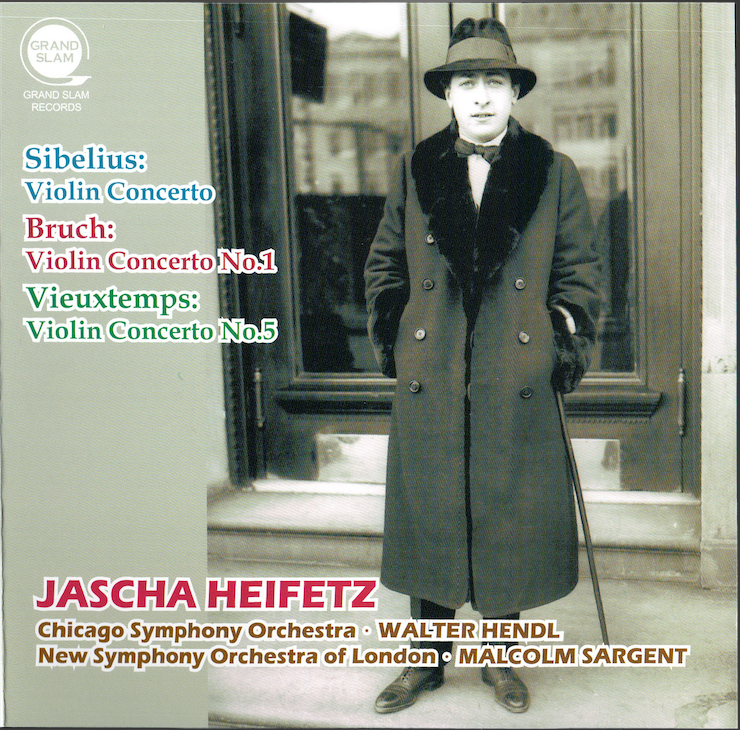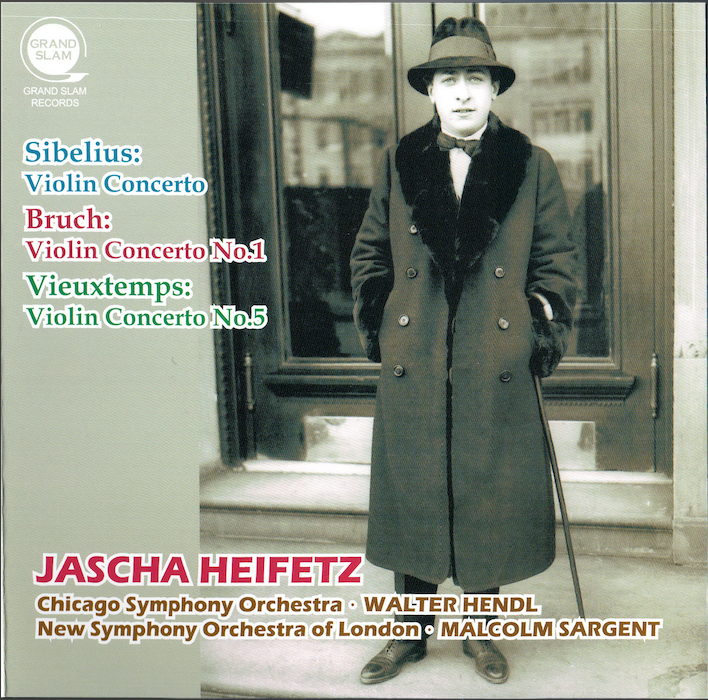❤️
Sincerely dedicated to my boyhood idol
Photographer: Penn Irving, New York 1948
Jascha Heifetz is the fiddle god in the 20th century and arguably the finest violin virtuoso of all time. His technique and intonation are perfect; his pace and speed are faster than anyone else; his personality and stage manner are old-fashioned and extremely self-disciplined; his full mastery of showpieces and gigantic concerti will probably never be equaled.
The only music aspect of Jascha that might elicit negative review is the aloofness and superiority in his interpretation of Bach, Beethoven and Mozart repertoire. The reason is pretty self-evident when you have a skim at his life trajectory. A classic Hollywood script starring a music hero: a born child prodigy who had dominated the throne since the 1917 debut in Carnegie Hall. Failure, weakness and sentimentality were never in his dictionary until death haunted him. You just cannot expect an Apollonian spirit to well understand the mundane, insipid life of the mortals.
My first Heifetz album
Mr. Heifetz has tremendous impact on my life path. It all started in 2002 when I was a boy studying the violin. Visiting Chengdu with my mom, I encountered his album RCA Red Seal: Sibelius, Prokofiev No.2, Glazunov Concertos on the shelf of a bookstore. I didn’t know any names of these composers back then. Out of curiosity and thirst for knowledge, I bought the disc and listened to it again and again.
In the following years, I fanatically hunted for his records. He was the priest in my little world. I imitated his playing, read his biographies; his perfectionism and integrity was deeply carved into my personality. This process went on until another life-time mentor found me in my sophomore year — which is a brand-new story that worths another chapter.
1) Jascha Heifetz’s Music Collection in a Snapshot
I can proudly claim myself being one of the biggest Heifetz music collectors, although due to generation reason I have totally missed the LP era and my collection is narrowly focused on CD and digital releases.
Heifetz Collection (HC, 65 CDs) + Rediscover (1 CD): an almost complete collection of his commercial recordings in CD format released in 1994, with the EMI and Decca masters included. There are only a few fishes that slipped the net and would be published later by other smaller brands. For serious Heifetz aficionados, this collection is an entry-level basic and the transfers are in average not bad.
The EMI References + 2 (9 CDs in total) are the earliest CD releases in the 1990s featuring Heifetz’s studio memories in London HMV. Later for sheer commercial purposes EMI repackaged them into the Icon (6 CDs) series, with some skeptical sound engineering stunts added.
Pearl (7 CDs): Pearl is a small record label based in England specialized in 78-rpm restoration. Their transfers are close to objective and more appealing to professional and hard-core ears as opposed to the general public. However they are subject to the technology in the 1990s and sometimes would over-manipulate the details.
Biddulph (10 CDs): Pearl’s English competitor, who is commercially more successful and their vision is more popular-oriented. While sacrificing slim amount of music, Biddulph usually achieves amazing public review since they would take bold moves on the latest noise reduction technology by that time.
In the early 2000s, RCA remastered the stereo recordings in Hi-Fi technology, notably the Living Stereo (5 SACDs) and the New Heifetz Collection (103 CDs); the NHC includes 3-CD content that has never been released, and the CD layers of the LS series is identical to those of the NHC. After the major labels including BMG, DG, EMI and Decca merged into Sony, another 2-CD album was remastered as well featuring his complete Decca recordings.
Naxos (18 CDs): in the 2000s and early 2010s, Naxos hired the top-level restoration engineers in the world to remaster Heifetz’s legacy. The result is fantastic, especially the vinyl transfers which have totally outshined the RCA ones.
Fono and IDIS: Similar to their Argentine tango colleagues, these two wide-spread Italian labels are notorious for bootlegging other brands. I list them here for alerting effect.
Opus Kura (4 CDs): one of the most famous Japanese labels in record restoration, mostly 78-rpms. Trace amount of manipulation, pure authentic shellac sounds.
Doremi + Cembal d'amour (11 CDs): Live recordings, pirate recordings, radio bootlegs, unknown sources. Some are extremely rare. Good and bad are intermingled. Remember the greatest musicians always perform more like themselves off record.
Nostalgia (10 CDs): Radio programs in the wartime. A few gems.
Grand Slam (7 CDs): a very popular Japanese label in the 2010s specialized in reel-to-reel tape transfers paired with the cutting-edge sound restoration skills. Some output are superior than the official transfers from the master tape.
Pristine Audio (12 CDs): “we specialize in bringing classic historic recordings back to life using cutting edge digital technology and making them available as high quality downloads.” As for Heifetz’s catalog, they have successfully revitalized many previously unknown/unpopular/undesirable materials.
Other Live Recordings and Re-transfers:
2), Criterion of Evaluation, Philosophy of Labels
In the record restoration profession, aside from equipment, there are three important aspects sound engineer have to deal with: curve issue, noise issue, and speed issue (see previous chapter). Among these three, noise reduction is probably the most controversial, especially in the 78-rpm realm.
In general there are two types of philosophy in regard of noise reduction: more appealing to the general public, or more faithful to the original performance. The problem is that the music in the records is always saturated in the background noise and it is impossible to completely separate those two, even with the most cutting-edge technology. Sound engineers have to choose between either “less noisy less music” and “more noisy more music”. I will analyze some important transfers of Heifetz’s Sibelius Violin Concerto (cond. Thomas Beecham, LPO, 1935) as an case study:
(legit headphone or sound system needed hereafter with high screen brightness)
Version one, RCA The Heifetz Collection Vol.18: RCA’s philosophy is to keep the transfer as intact as possible. From the spectral frequency display we can see that only above 12k hertz a slight low pass eq curve was applied and 18k above is intact. Most of the information on the record was kept. Juicy and earthy, a little bit noisy as it could be.
Version two, Biddulph Lab 018: a strong low pass curve along with an antique noise reduction technique in the 1980s was applied. This makes Biddulph’s transfer dull and distorted.
Version three, EMI Icon Vol.1: More advanced noise reduction technique such as the famous Cedar was developed in the later years. EMI used such softwares extensively, and the output is almost free of any noise while the music was kept at a very high extent. It is apparently designed for the general public the most of whom have historical-recording-phobia. However, it inevitably sounds extremely dull.
Version four, Naxos Historical 8.110938: this is what I called a “camouflage” technique, which is widely used by famous sound engineer Mark Obert-Thorn. The upper 8k part that has very low signal-to-noise ratio was boldly taken out, noise reduction is used at trace amount, yet the hiss above 17k is kept to avoid dullness. It is a very smart move in my opinion.
Version five, Pearl Concerto Recordings Vol. I: a faithful transfer with slight noise reduction 7k-17k, as well as some EQ at 3k to weaken the sharpness in shellac records. But I would call it a bit “over-manipulating”.
Version six, Pristine Classical PASC 075: quote from sound engineer Andrew Rose: “Most of the microphones used to make historic recordings had very uneven frequency responses. We use advanced computer analysis of the tonal content of these recordings to “reverse engineer” and counter the impact of those tonal distortions…” XR Remastering yields an impressive result, turning the Guarneri in Heifetz’s hand sounds like a viola. To me it is also kind of over-manipulating.
Version seven, EMI References: this transfer is done before the Icon version, and the condition of the source 78-rpm is superb. However there is noise reduction and several over-manipulated notches at 7k, 9k and 10k.
3), Version Comparison and Simple Analysis
I do not want to make this chapter too lengthy and dreadful to read so I skipped the curve issue and speed issue. After all, this article is only a tribute to my 20-year fanaticism on this man, and a reflection process of relentlessly collecting his records. With a succinct version of restoration knowledge and criterion explained above, I will further explain on my recommended list to the best available version of Heifetz’s concerto recordings. If you have a second opinion, please feel free to PM me.
The version comparison will be limited to concerto recordings. The available choices of albums for Jascha’s chamber music repertoire are very limited and in most cases the Heifetz Collection already offers the best solution; another reason is that Heifetz’s heroic character renders him a better soloist than a chamber musician, in spite that he, as a professor, always have chamber music repertoire in his syllabus
a), 1934-1946: 78-rpm Era Collection Guide
19340203, Mozart Violin Concert No.5, Heifetz’s first concerto recording
Best Version: Pearl Jascha Heifetz Concerto Recordings Vol. 1, slight over-manipulated; Reference’s 78rpm source is in mint condition but there’s strong noise reduction.
19340328 Glazunov Violin Concerto, an old Russian reminiscence
Best Version: EMI References, sounds fantastic after fixing the notches; Pearl has slight noise reduction
19341224 Sibelius Violin Concerto, a technically flawed studio experiment
Best Version: The Philadelphia Orchestra Centennial Collection - Instrumentalists Vol.7 (Disc 3), slight over EQed; there is another release under Guild label which is dull and over EQed.
19350314 Vieuxtemps Violin Concerto No.4, Heifetz’s signature panache
Best Version: EMI References, need to fix the notches in frequencies; HC Vol.3 is a more primitive transfer
19350318 Wieniawsky Violin Concerto No.2, Heifetz’s signature panache
Best Version: EMI References, need to fix the notches; HC Vol.3 is a more primitive transfer
19350224 Brahms Violin Concerto, historical value
Acceptable Version: Immortal Performances, Philharmonic-Symphony Society of New York, Toscanini Brahms 1935, the only existed version.
19351214 Sibelius Violin Concerto: the monumental recording of the concerto, arguably the best Sibelius in history
Best Version: EMI References, again need to fix some details and it sounds fantastic after; HC Vol.18 is an objective transfer; Pearl and Pristine are over-manipulated.
19370325 Tchaikovsky Violin Concerto, his very best condition, version revised by Auer
Best Version: Pearl Jascha Heifetz Concerto Recordings Vol.1
19371220 Prokofiev Violin Concerto No.2, another monument, first recording in history
Best Version: Pearl Jascha Heifetz Concerto Recordings Vol.2
19371221 Brahms Violin Concerto, even better than the 1939 version
Best Version: RCA The New Heifetz Collection Vol.101
19390411 Brahms Violin Concerto, great performance
Acceptable Version: Pearl Jascha Heifetz Concerto Recordings Vol.2; other transfers are generally bad due to wartime shortage of shellac material
19391221 Brahms Double Concerto, Heifetz + Feuermann, the best violinist/cellist summit
Best Version: Opus Kura
19400311 Beethoven Violin Concerto, a musical triumph, a recording regret
Best Version: Opus Kura; RCA has access to test pressings however the post-restoration is awful
19410218 Walton Violin Concerto, the only recorded 1st draft of the piece, historical value
Best Version: Pristine
19410528 Chausson Quartet Violin Concerto, a Heifetz’s personal fond
Acceptable Version: RCA The Heifetz Collection Vol.5, restoration is awful
19420720 Benjamin Double Concerto, Heifetz + Primrose, the best violinist/violist summit
Best Version: RCA The New Heifetz Collection Vol.102
19440409 Mendelssohn Violin Concerto, the most dazzling performance
Best Version: Naxos, severe speed and curve issues.
19450114 Beethoven Violin Concerto, Heifetz at prime, his personal best version
Best Version: Music & Art 1st Edition; the 2nd edition M&A uses strong noise reduction which takes the magic away.
19450217 Gruenberg Violin Concerto, a tribute to Gershwin, benchmark of modern violin technique
Best Version: HC Vol.23
19461014/19 Bach Double Violin Concerto, the man plays two violins
Best Version: Naxos
19461107 Bruch Scottish Fantasy, amazing performance, the final 78 glory
Best Version: RCA The New Heifetz Collection Vol.101
b), 1947-1954: Vinyl/Mono Era Collection Guide
19470327 Korngold Violin Concerto, was touring after the premiere
Best Version: Pristine
19470327 Mozart Violin Concerto No.5, why so fast with Mozart…
Best Version: Pristine
19470330 Korngold Violin Concerto, same venue/line-up 3 days after, similar performance
Best Version: Music & Art 1st Edition, severe speed issue
19470330 Mozart Violin Concerto No.5, ditto…
Best Version: Cembal d'amour Vol.3
19470912 Bruch Scottish Fantasy, legendary performance, first RCA LP recording?
Acceptable Version: HC Vol.6, sadly with noise reduction; all the rest versions use 78-rpms
19471108 Vieuxtemps Violin Concerto No.5, first LP recording in EMI
Best Version: EMI References
19471110 Mozart Violin Concerto No.4, always a pleasure listening to H’s Mozart
Best Version: EMI References
19490321 Tchaikovsky Violin Concerto, whole piece in 29m, slow down, Mr. H..
Acceptable Version: Cembal d'amour Vol.2, severe speed issue
19490401 Mozart Violin Concerto No.4, typical Heifetzian Mozart
Best Version: Pristine, pirate recording, mike was placed too remote
19490401 Prokofiev Violin Concerto No.2, feel the sparks
Best Version: Pristine, pirate recording, mike was placed too remote
19490606 Elgar Violin Concerto, something every violinist has to do in London
Best Version: Naxos, superb LP transfer, but I suspect the curve is wrong; all the rest labels are 78-rpm transfers
19490610 Mendelssohn Violin Concerto, Heifetz’s slowest version..
Best Version: EMI References
19490626/19470120 Mendelssohn Violin Concerto, 2nd and 3rd mvts are on fire
Best Version: Pristine, a weird multi-era chimera.
19500620 Tchaikovsky Violin Concerto, Heifetz revised version
Best Version: Naxos, nice LP transfer
19500622/23 Lalo Symphony Espagnole, sounds like an etude in his hands
Best Version: Testament, severe speed issues
19500726/27 Walton Violin Concerto, the decisive version with the composer holding the baton
Best Version: Naxos, totally beat off the HC version
19500902 Beethoven Violin Concerto, historical value
Best Version: Doremi Vol.4, something wrong with the needle which can be fixed through adjusting stereo image
19510311 Sibelius Violin Concerto, there is some hyper, breathtaking moments you will never find in commercial recordings
Best Version: Music & Art 1st Edition
19510518 Bruch Violin Concerto No.1, better than the later version
Best Version: Naxos
19510519 Mozart Violin Concerto No.5, faster and mature than the 1930s version
Best Version: Naxos
19510612/13 Lalo Symphony Espagnole, more energetic than last year
Best Version: Naxos
19511209 Brahms Violin Concerto, his personal best version
Best Version: Music & Art 1st Edition
19521203 Conus Violin Concerto, Heifetz’s signature panache in the magnetic master tape era
Best Version: HC Vol.20, subtle noise reduction; Naxos is a decent LP transfer but still can’t surpass master tape.
19530110 Korngold Violin Concerto, Heifetz’s signature panache
Best Version: HC Vol.21, same with above.
19531206 Bach Violin Concerto No.1, more Heifetz than Bach
Best Version: Naxos, decent LP transfer; RCA also uses LP with noise reduction
19531206 Bach Violin Concerto No.2, ditto
Best Version: Naxos, decent LP transfer; RCA also uses LP with noise reduction
19540314 Mendelssohn Violin Concerto, H is very relaxed
Best Version: Music & Art 1st Edition
19541028/29 Castelnuovo-Tedesco Violin Concerto No.2, tracing back to the Jewish roots
Best Version: HC Vol.43, master tape > Naxos’s LP transfer
19541102 Bruch Violin Concerto No.2, another Heifetz monopoly
Best Version: HC Vol.20, same above
19541103 Sphor Violin Concerto No.8, something Heifetz had been playing since childhood
Best Version: HC Vol.25, excessive noise reduction, slightly better than Naxos
19541105 Wieniawsky Violin Concerto No.2, Heifetz’s signature panache, yet cannot beat himself in the 30s
Best Version: Naxos; no idea why RCA also uses LP source; maybe the masters were lost.
c), 1955+: Stereo Era Collection Guide
19550221/22 Brahms Violin Concerto, Heifetz’s first stereo recording, one of the most famous Brahms recordings in the history
Best Version: GrandSlam 2138, the transfer is so fantastic that I have to rank it above Living Stereo’s SACD version
19551125 Beethoven Violin Concerto, a “rehearsal” of the studio recording two days later
Best Version: YSL 302, who has access to reel-to-reel tape source
19551127/8 Beethoven Violin Concerto, the most famous version of Heifetz
Best Version: RCA Living Stereo SACD
19560202 Beethoven Violin Concerto, don’t we have enough Beethoven?
Best Version: Sterling 1005
19560327 Rodza Violin Concerto, very Hollywood, dedicated to H
Best Version: RCA The New Heifetz Collection
19561001 Benjamin Double Concerto, reunion with Primrose, much better in sound quality than in 1942
Best Version: RCA The New Heifetz Collection
19561002 Mozart Sinfonia Concertante, reunion with Primrose
Best Version: RCA Living Stereo SACD, note that the CD layer is identical to the New Heifetz Collection
19570419 Tchaikovsky Violin Concerto, the most famous version
Best Version: GrandSlam 2185 and GrandSlam 2150, the tape condition in 2185 is better
19590110/12 Sibelius Violin Concerto, a legendary performance that shall last forever; maybe the decisive version of Sibelius Concerto among all
Best Version: GrandSlam 2122, the decisive version
19590223/25 Mendelssohn Violin Concerto, the earlier versions are better
Best Version: Pristine and RCA Living Stereo. I suspect that the masters were lost and reel-to-reel tape copies are the best source available
19590224 Prokofiev Violin Concerto No.2, finally Prokofiev in high fidelity
Best Version: GrandSlam 2185, the decisive version
19591209 Beethoven Violin Concerto, Live performance at the UN
Best Version: Rhine, transfer is undesirable.
19600519/20 Brahms Double Concerto, collaboration with his best friend
Best Version: GrandSlam 2074, a bit dry; RCA Living Stereo SACD is not bad either
19610515/22 Bruch Scottish Fantasy, the most popular version, I personally slightly prefer the 1946 one
Best Version: RCA Living Stereo; GrandSlam 2138’s tape is not at best condition
19610515/22 Vieuxtemps Violin Concerto No.5, the 1947 version is better
Best Version: RCA Living Stereo, GS 2122’s tape is oxidized and sounds noisy
19610519/20 Bach Concerto for Two Violins, collaboration with his student
Best Version: RCA Living Stereo
19620514/16 Bruch Violin Concerto No.1, the 1951 version is better
Best Version: GrandSlam 2122 is good. a bit noisy
19620514/16 Mozart Violin Concerto No.4, sounds different from his early years
Best Version: RCA The New Heifetz Collection
19630603/4 Glazunov Violin Concerto, reminiscence of his youth
Best Version: GrandSlam 2185, the decisive version
19630901 Brahms Double Concerto, collaboration with best friend in live
Best Version: Rhine
19631006 Mozart Violin Concerto No.5, sounds different from his early years
Best Version: RCA The New Heifetz Collection
19631007 Rozsa Sinfonia Concertante, collaboration with best friend
Best Version: RCA The New Heifetz Collection
19631010 Vivaldi Double Concerto, ditto
Best Version: RCA The New Heifetz Collection
19641206 Beethoven Violin Concerto
Best Version: Rhine
19661015 Brahms Double Concerto, the last complete concerto recording of Heifetz+Piatigorsky
Best Version: Rhine
